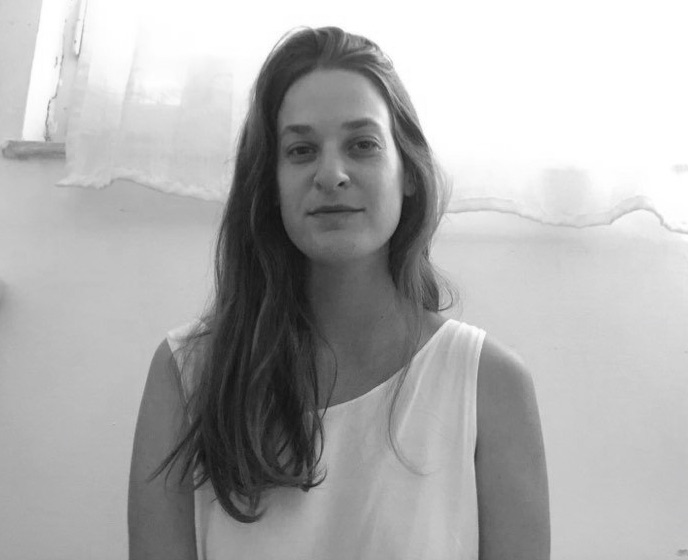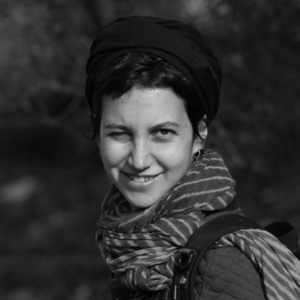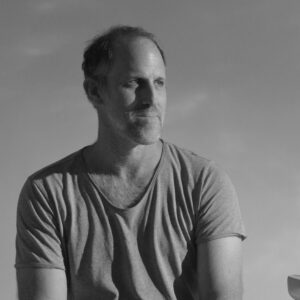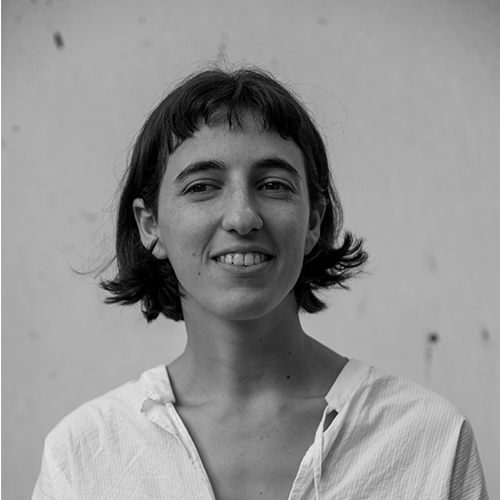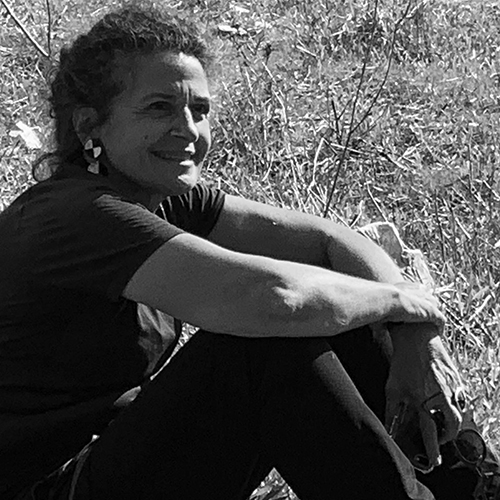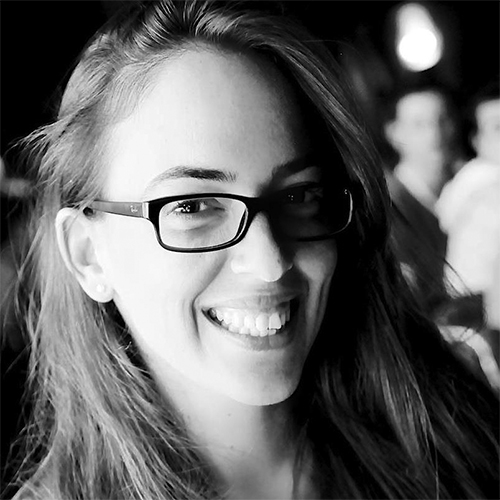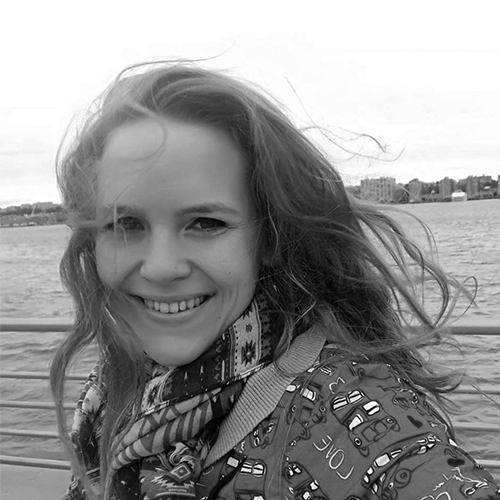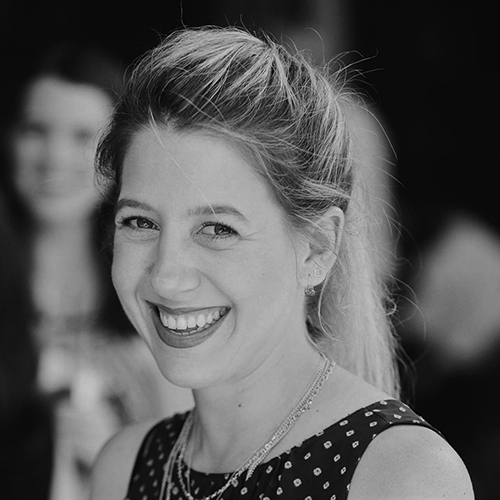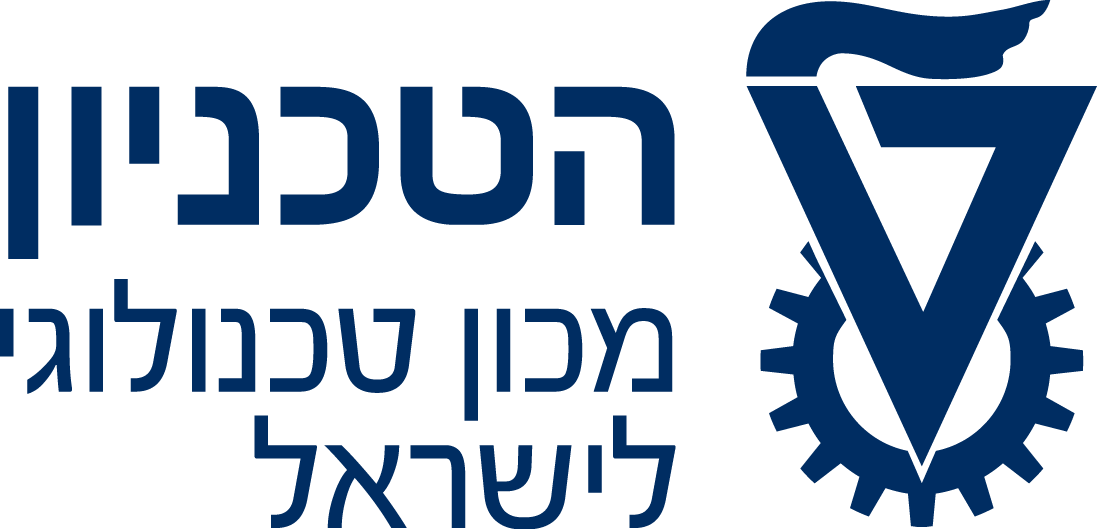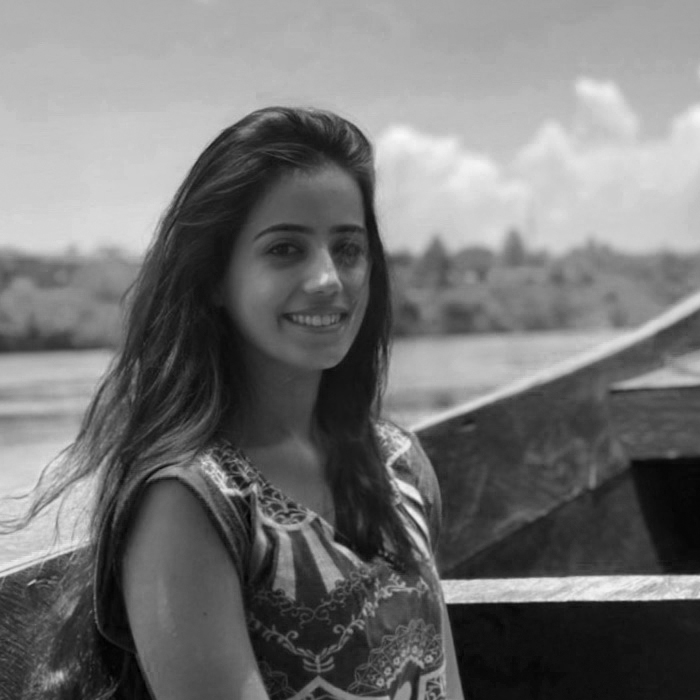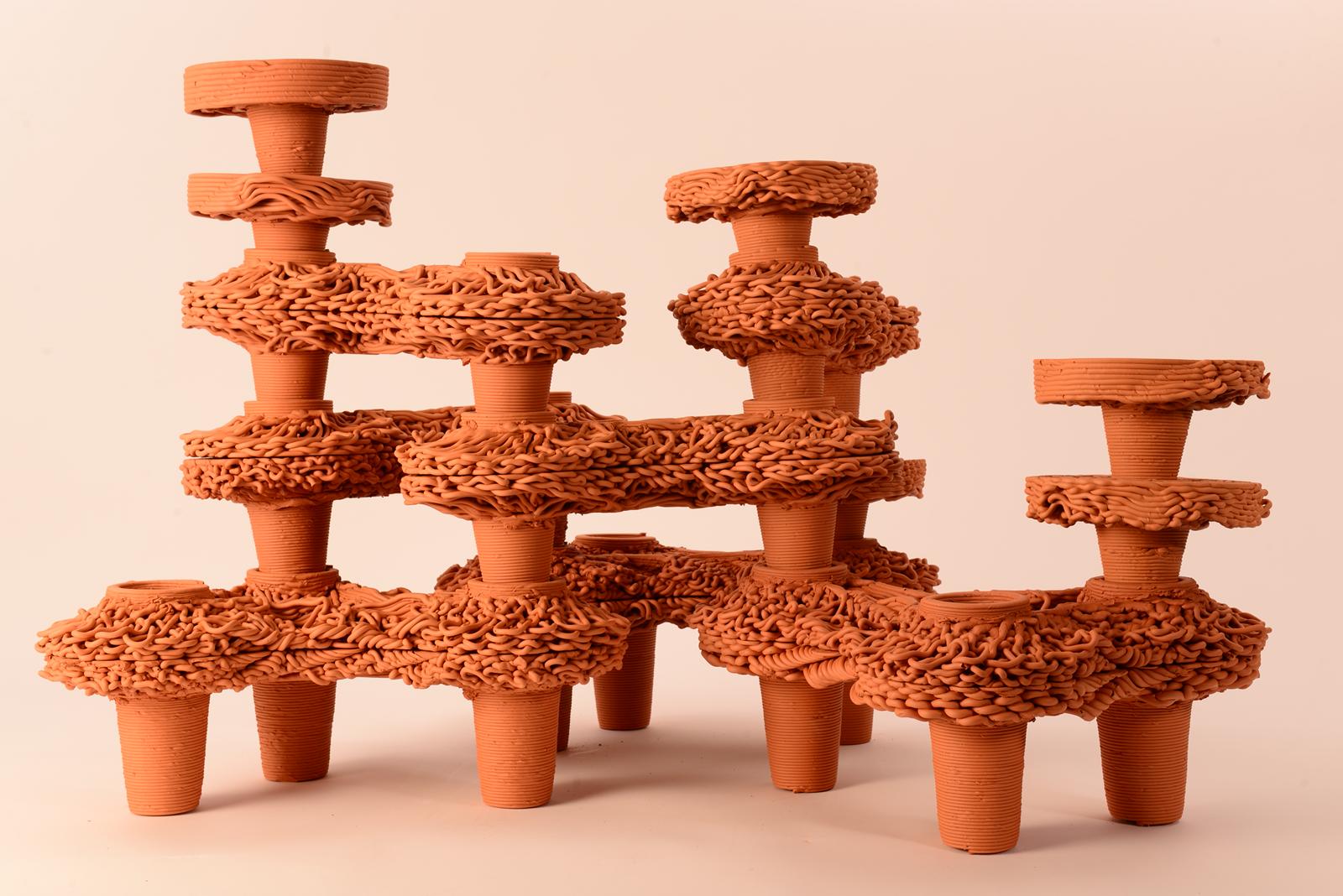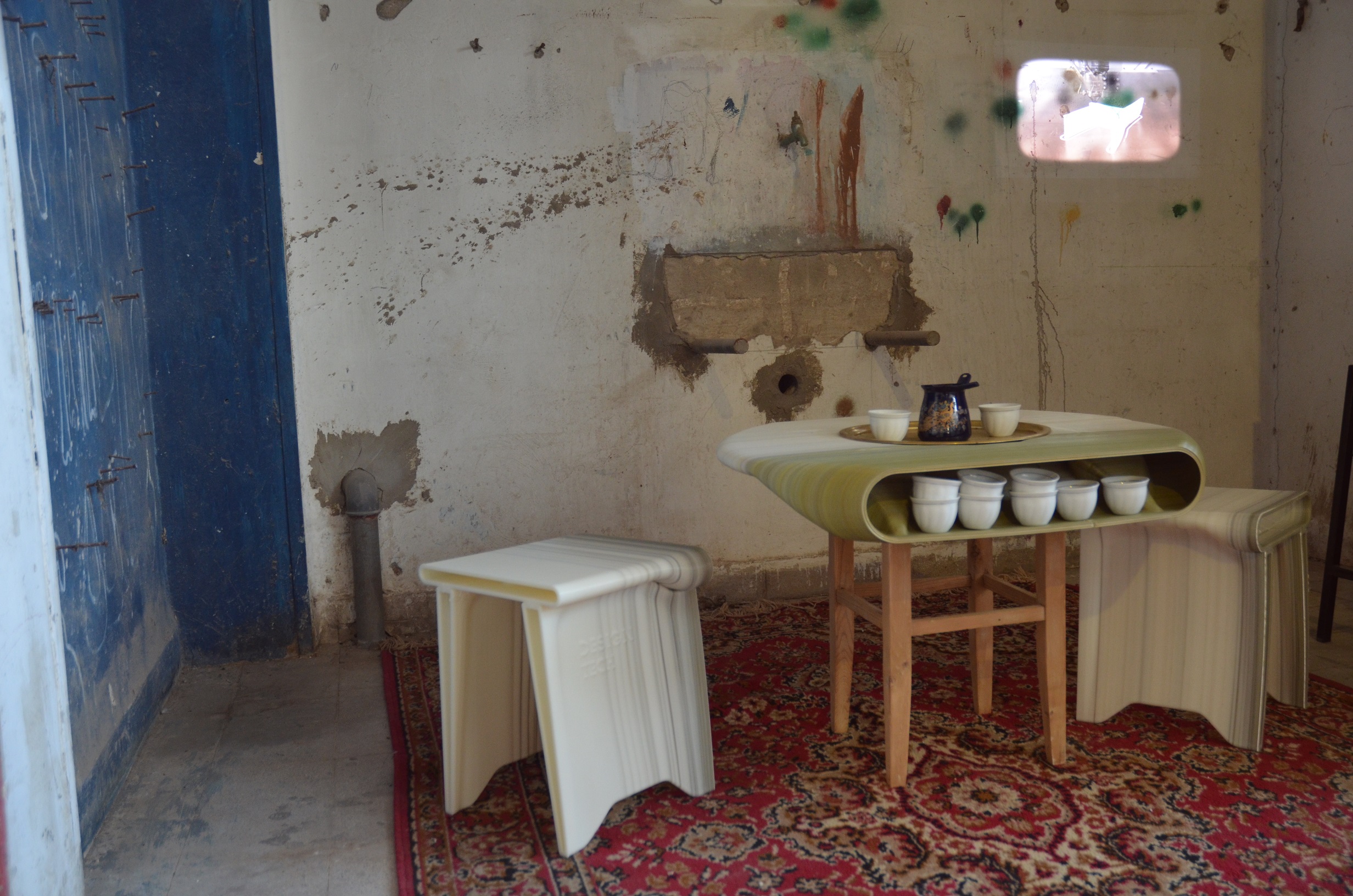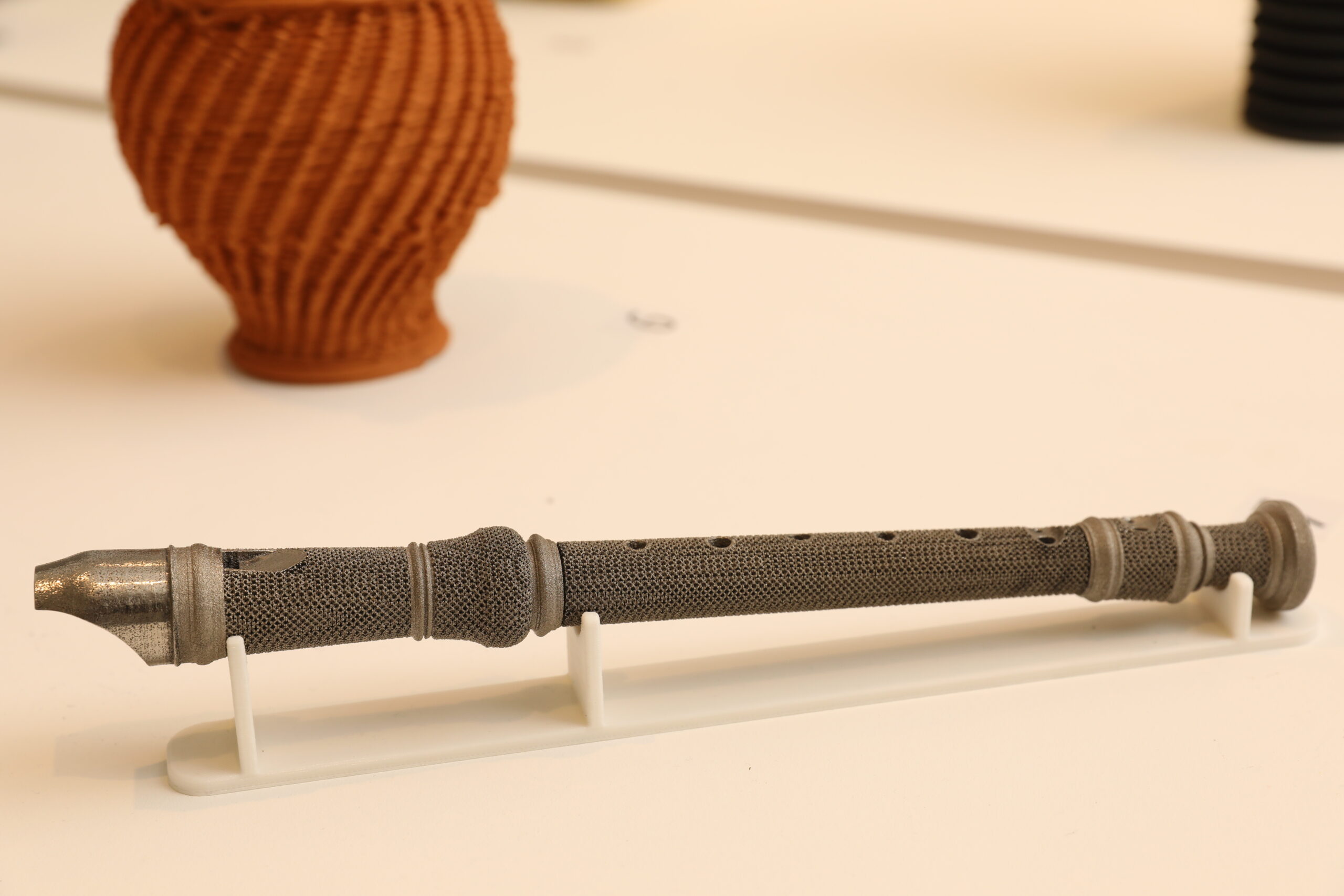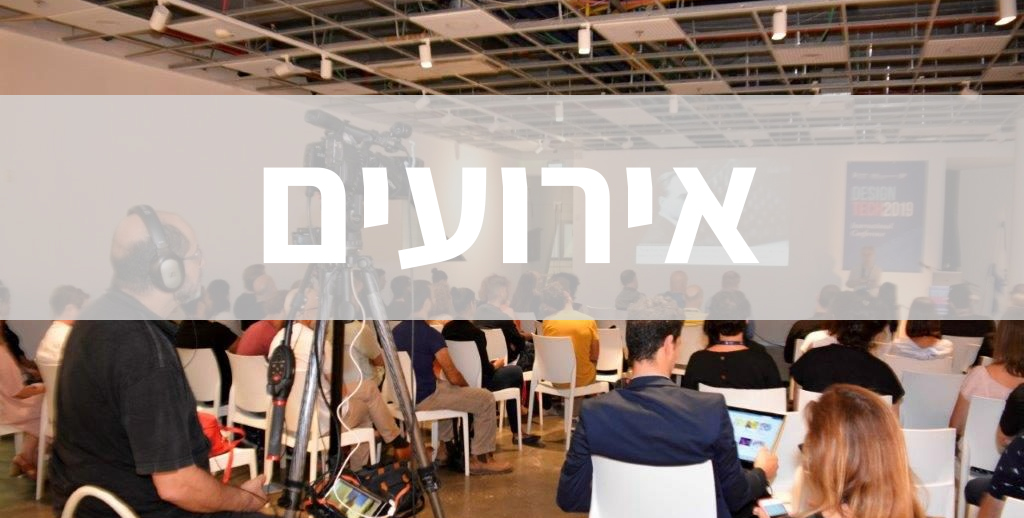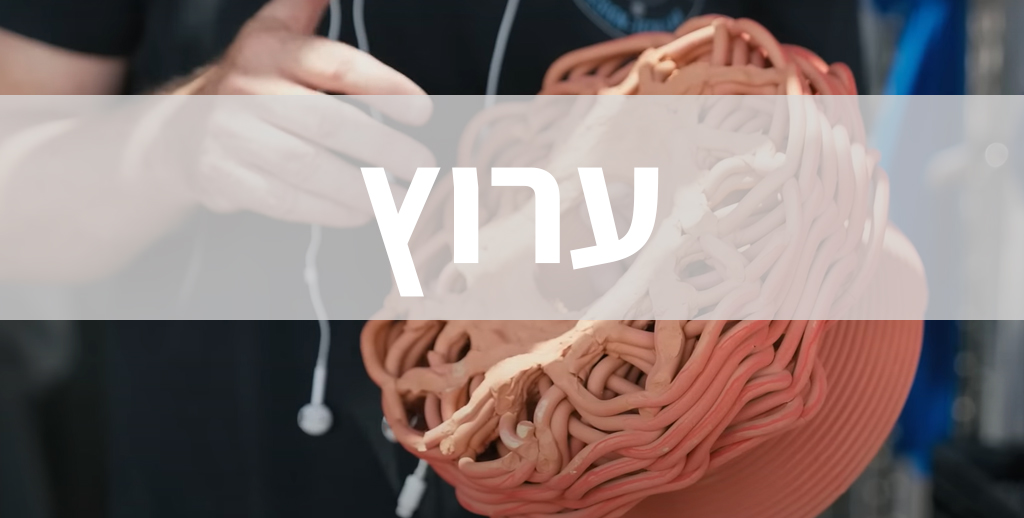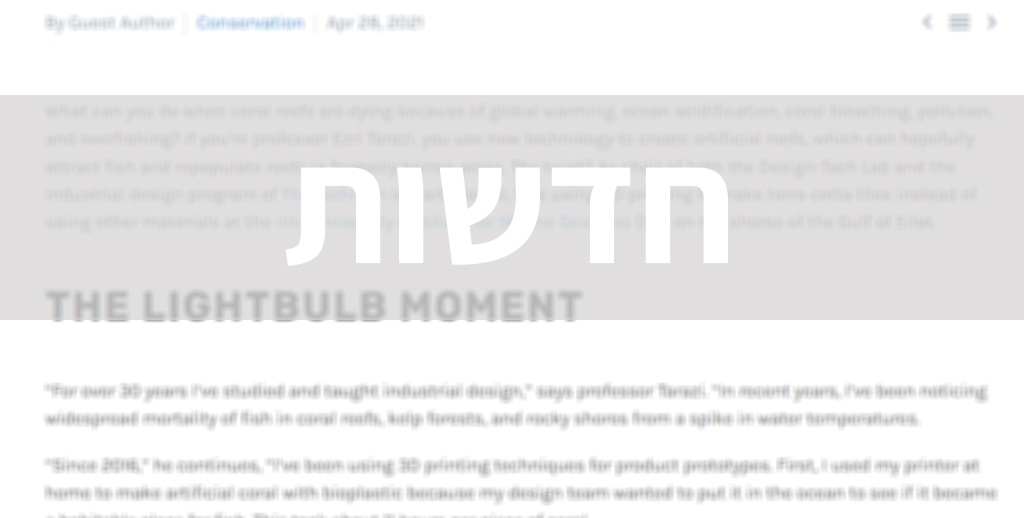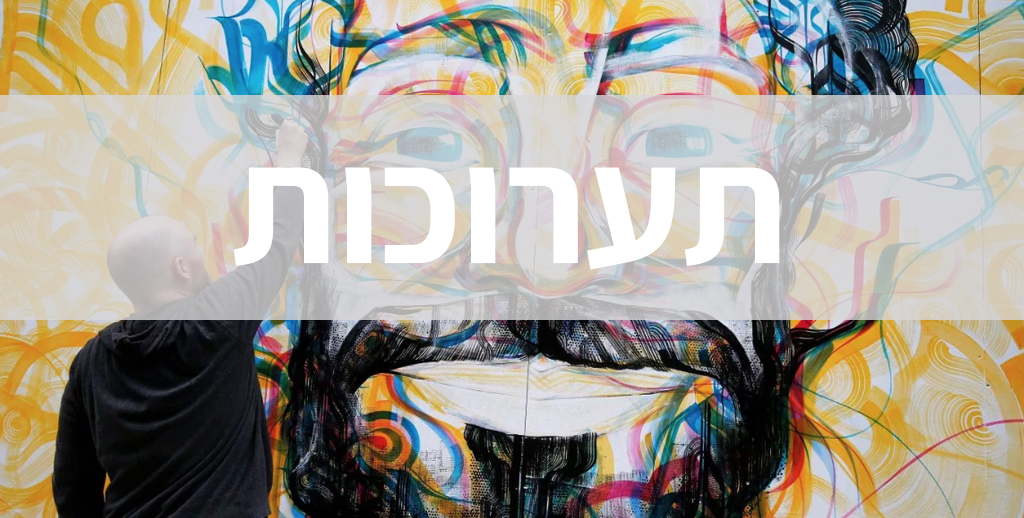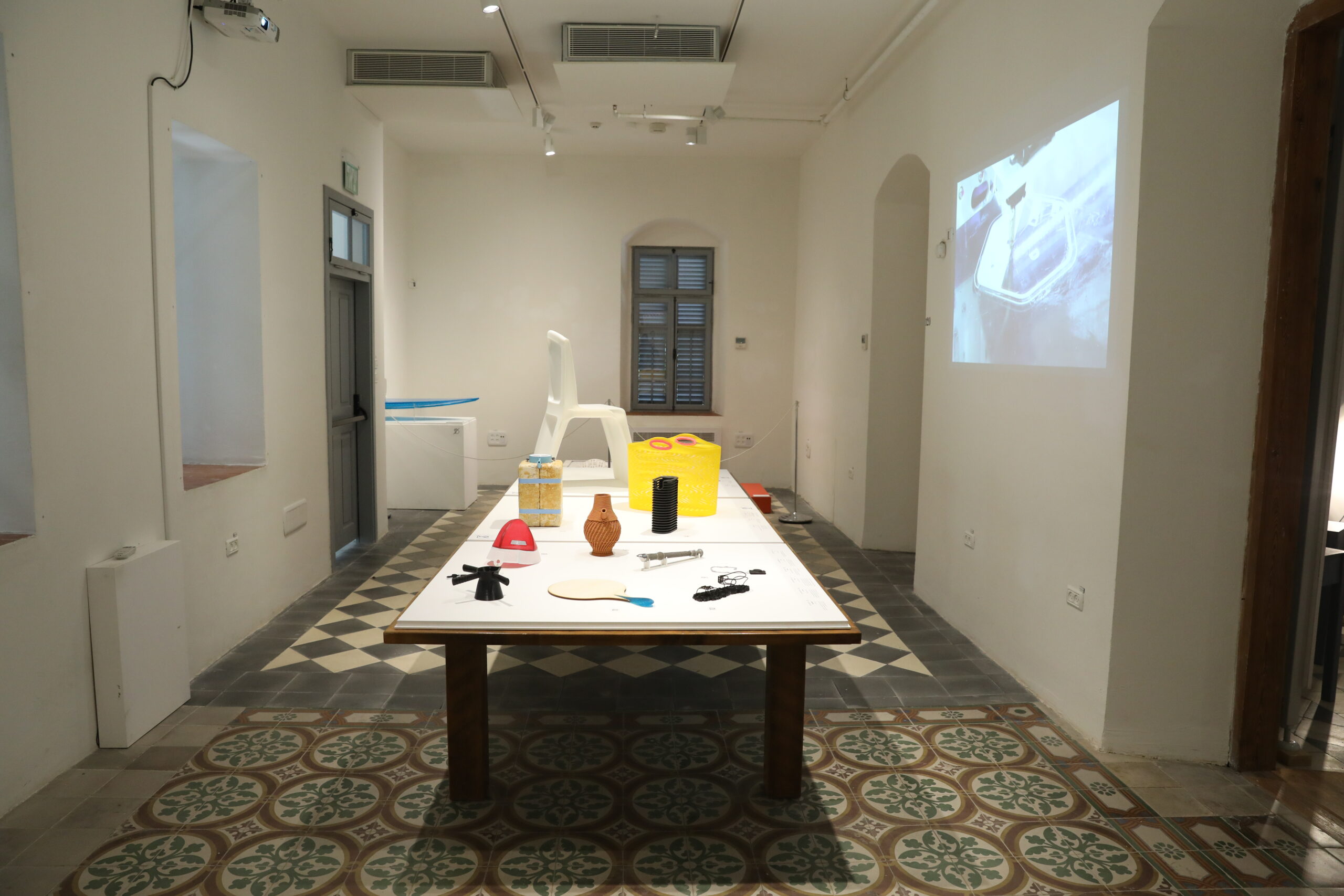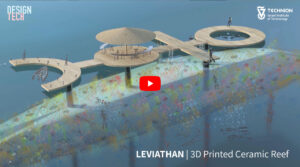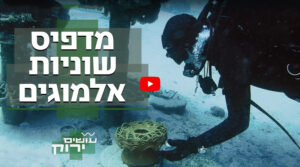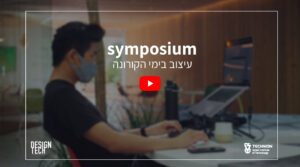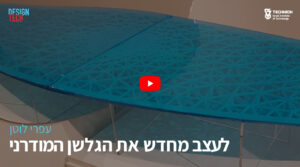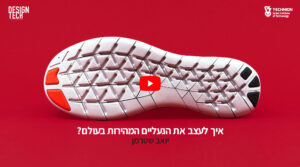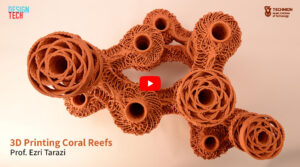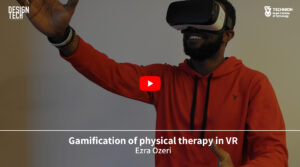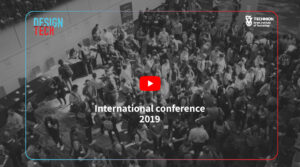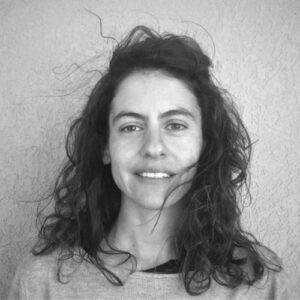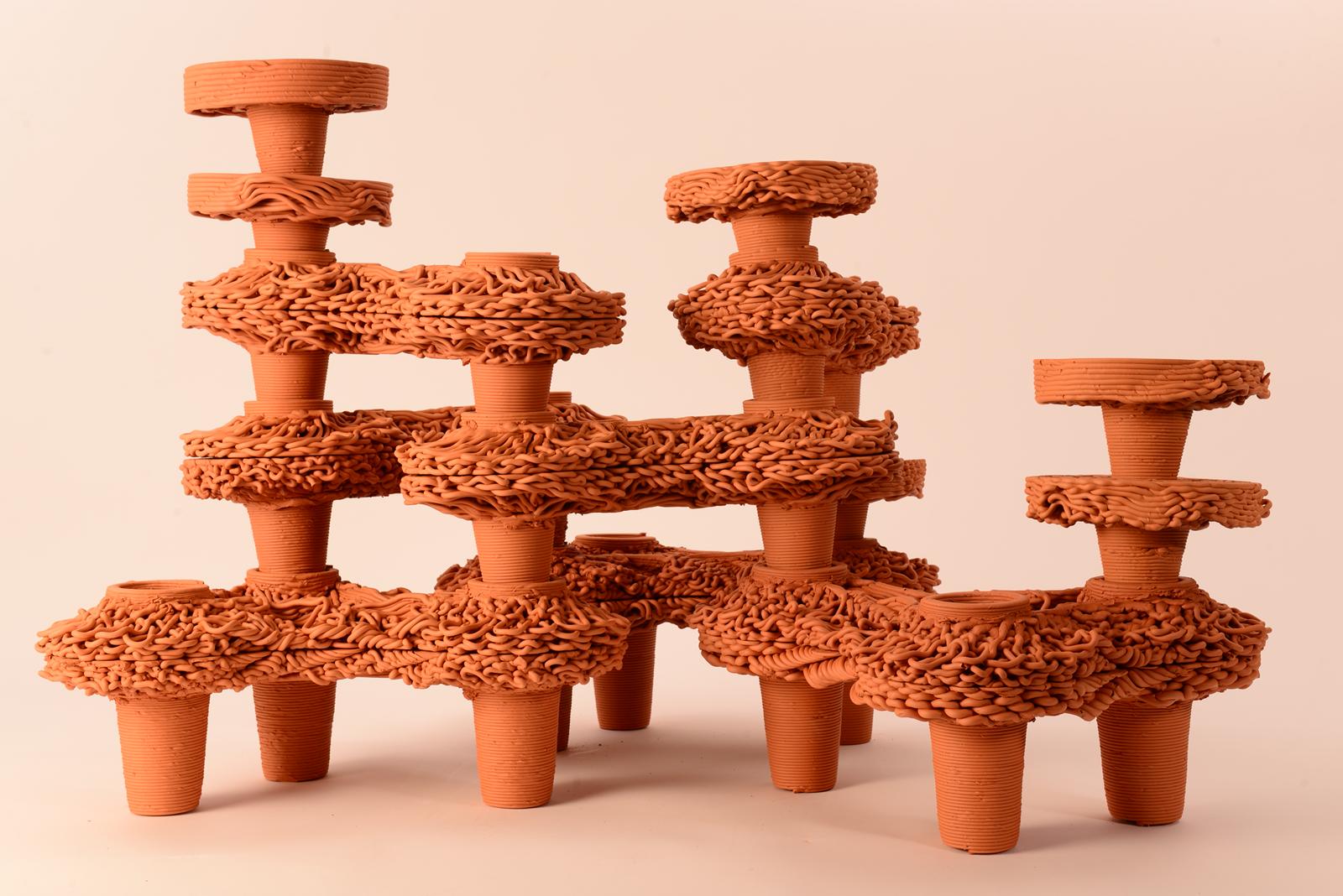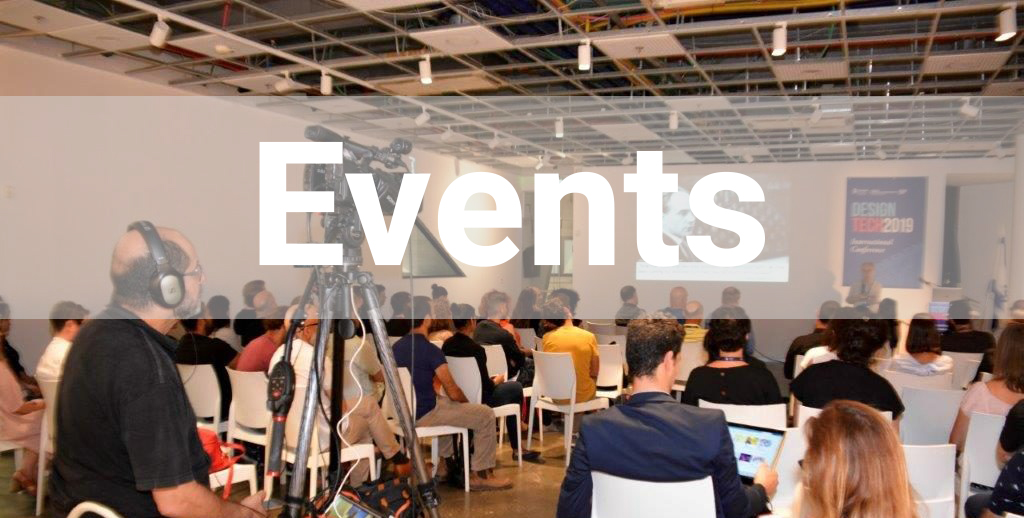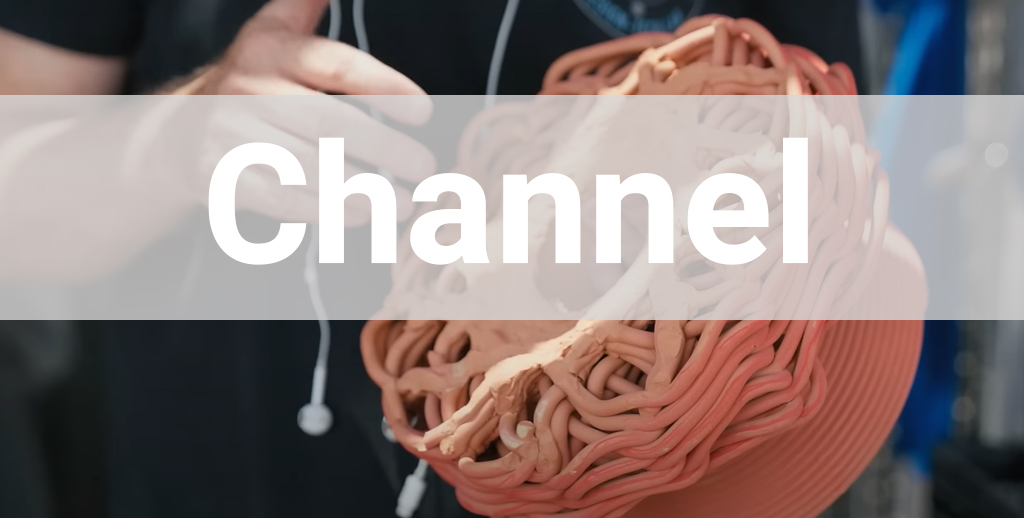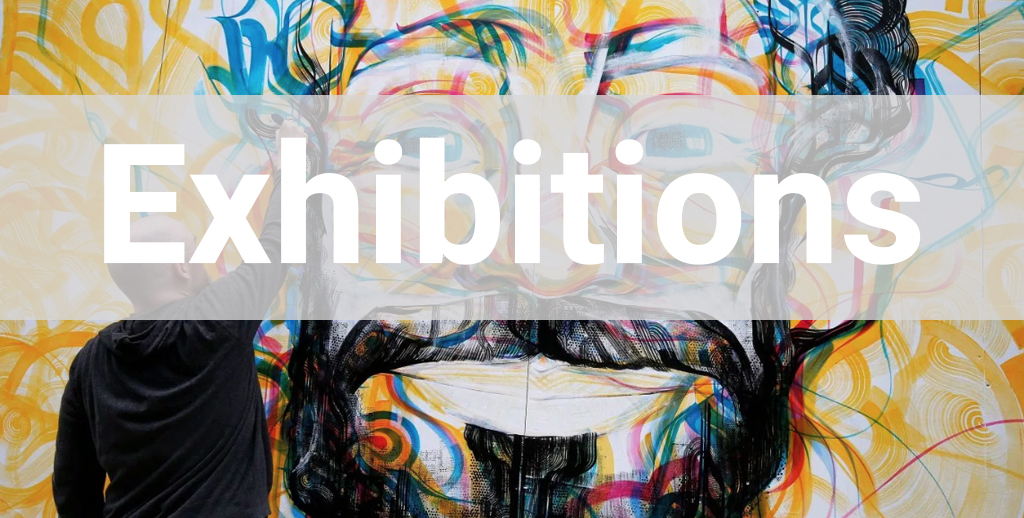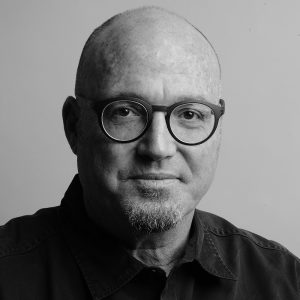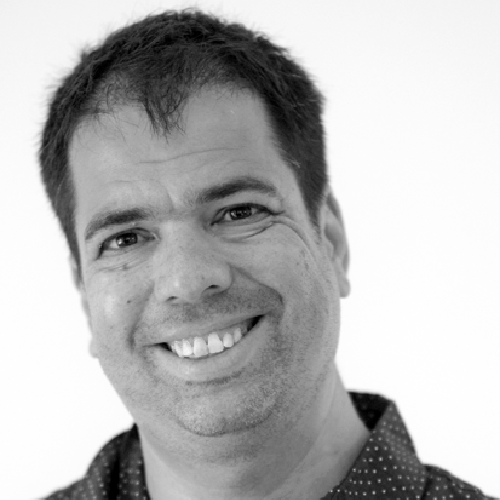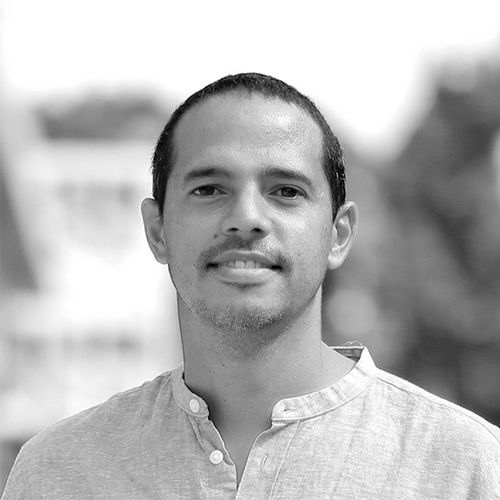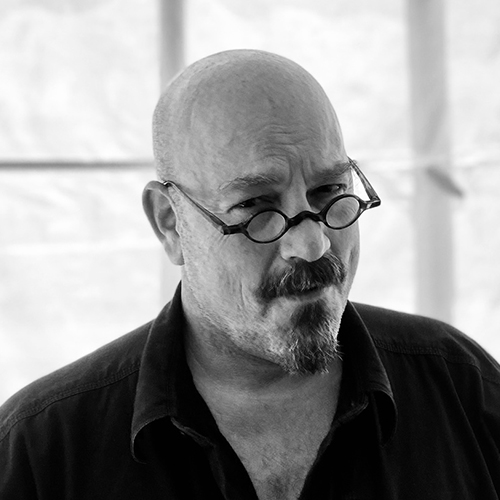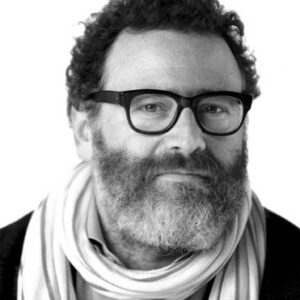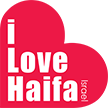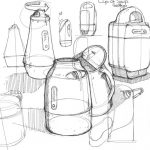כנס Design-Tech 2025
כנס Design-Tech 2025
קול קורא להרצאות – הכנס הבינלאומי לעיצוב וטכנולוגיה
4 ביוני 2025 | הטכניון, חיפה, ישראל
כנס Design-Tech 2025 מהווה פלטפורמה חדשה וייחודית לחוקרים ולאנשי מקצוע בתחום העיצוב, אשר נועדה להציג את עבודותיהם. הכנס, שיתקיים זו הפעם השנייה בטכניון – מכון טכנולוגי לישראל, יאפשר למשתתפים להציג מחקר עכשווי ותיאוריה בתחום העיצוב.
מועד אחרון להגשת תקצירים: 1 במאי 2025
הגשה: 300–500 מילים
שלחו את התקציר לכתובת: designtech2025@technion.ac.il
הודעה על קבלה: 14 במאי 2025
Design-Tech 2025
supported by Firefly Scientists Foundation
International Conference on Design and Technology
Design-Tech 2025 Conference
Call for presentations – International Conference on Design and Technology, June 4th, 2025 | Technion, Haifa, Israel
The Design-Tech 2025 conference is a new and unique platform for researchers and practitioners in the field of design initiated to showcase their work. Being held for the second time at the Technion, Israel Institute of Technology, the conference will enable attendees to present their up-to-date design research and theory.
Abstract Submission deadline: May 1, 2025
Submission: 300-500 words
Submit your abstract: designtech25@technion.ac.il
Notification of acceptance: May 14, 2025
טיוטה אוטומטית
טיוטה אוטומטית
Design-Tech 2025 Conference
Design-Tech Conference 2025
Design-Tech 2025 Call
MID Students
Gaya Salman
Masters degree program Supervisors Email
Orni Bloch
Masters degree program Enhancing experience of nature in urban park through design Abstract The expansion of urban space in Israel and around the world is an ongoing process that is expected to intensify. Currently, most of the growing population occurs in cities. As a result, two major problems arise: first, urban development deletes and degrades natural…
Sofy Mahagna
Masters degree program Supervisors Prof. Ezri Terezi Yoav Shterman Examine the Craft form in the technology age by developing a new system consisting of combining handmade design along with digital tools for CNC manufacturing. Modern technology reduces the need for manual work, today’s design making and the process relies on mechanization rather than hand-operated, thus…
Yonatan Leitner
.fl-page-header {display: none; !important } .fl-page-nav-right.fl-page-header-fixed .fl-page-header-container.container, .fl-page-header-fixed .fl-page-header-container.container {display: none; !important} Yonatan LeitnerMasters degree program SupervisorsDaniel Metcalfe, Ezri Tarazi BioEman is a master’s student at the Technion Institute of Technology Israel. She received her B.A from The University of Haifa in English Language and Literature and Fine Arts. She works as an industria ldesigner…
Stav Bozaglo
Masters degree program Supervisors Email
Joelle Singer
Masters degree program Supervisors Email
Maayan Fadida
Masters degree program Supervisors Prof. Yasha Grobman Design as a tool for minimizing coronavirus transmission in public transportation. Abstract: As reported by the world health organization, by the end of October 2020, more than 45M people worldwide tested positive for SARS-CoV-2. Death toll up to 1.20M across the globe has motivated both the scientific community and privet sectors to search for means to control the spread of the…
Nuphar Levenson
Masters degree program Supervisors Email
Tamar Efrat
Masters degree program Supervisors Emai
Marina Gabinsky
Masters degree program Supervisors Emai
Alumni
Gaya Salman
Masters degree program Supervisors Email
Orni Bloch
Masters degree program Enhancing experience of nature in urban park through design Abstract The expansion of urban space in Israel and around the world is an ongoing process that is expected to intensify. Currently, most of the growing population occurs in cities. As a result, two major problems arise: first, urban development deletes and degrades natural…
Sofy Mahagna
Masters degree program Supervisors Prof. Ezri Terezi Yoav Shterman Examine the Craft form in the technology age by developing a new system consisting of combining handmade design along with digital tools for CNC manufacturing. Modern technology reduces the need for manual work, today’s design making and the process relies on mechanization rather than hand-operated, thus…
Yonatan Leitner
.fl-page-header {display: none; !important } .fl-page-nav-right.fl-page-header-fixed .fl-page-header-container.container, .fl-page-header-fixed .fl-page-header-container.container {display: none; !important} Yonatan LeitnerMasters degree program SupervisorsDaniel Metcalfe, Ezri Tarazi BioEman is a master’s student at the Technion Institute of Technology Israel. She received her B.A from The University of Haifa in English Language and Literature and Fine Arts. She works as an industria ldesigner…
Stav Bozaglo
Masters degree program Supervisors Email
Joelle Singer
Masters degree program Supervisors Email
Maayan Fadida
Masters degree program Supervisors Prof. Yasha Grobman Design as a tool for minimizing coronavirus transmission in public transportation. Abstract: As reported by the world health organization, by the end of October 2020, more than 45M people worldwide tested positive for SARS-CoV-2. Death toll up to 1.20M across the globe has motivated both the scientific community and privet sectors to search for means to control the spread of the…
Nuphar Levenson
Masters degree program Supervisors Email
Tamar Efrat
Masters degree program Supervisors Emai
Marina Gabinsky
Masters degree program Supervisors Emai
Alumni
סופי מחאג’נה
קראפט היברידי מנחים: פרופ’ עזרי טרזי, יואב שטרמן הטכנולוגיה המודרנית מפחיתה את הצורך בעבודת יד, בימינו העיצוב מסתמך על מיכון ופחות על שימוש ביד, ולכן מלאכות מסורתיות הולכות ונעלמות, למרות שהכישורים האנושיים מגוונים, המכונה החליפה את האדם כמו שחומרי התיעוש החליפו חומרים מסורתיים. בפרויקט זה אציג אינטגרציה של קראפט מסורתי ועשייה עכשווית, היוצרת דיאלוג בין…
COVIDESIGN: וילון אוויר
.fl-page-header {display: none; !important } .fl-page-nav-right.fl-page-header-fixed .fl-page-header-container.container, .fl-page-header-fixed .fl-page-header-container.container {display: none; !important} האתר בשיפוץ, מתנצלים על אי הנוחות הזמנית. נגיף הקורונה המדבק יצר צורך הכרחי להגן על הצוות הרפואי, למען בריאותו האישית ולמען המטופלים הזקוקים לטיפולו הצמוד. וילון אוויר הוא ציוד הגנה אישי שפותח עבור הצוות הרפואי בתקופת בקורונה. ציוד זה יגדיל באופן משמעותי…
xCoral – שיקום שונית האלמוגים באמצעות הדפסת קרמיקה תלת ממדית
פרוייקט מחקר בתחום של שיקום שונית אלמוגים באמצעות הדפסת תלת מימד של חימר. המחקר של פרופ׳ עזרי טרזי, יחד עם הדוקטורנט עופר ברמן, וחוקרים נוספים במעבדה, המרצה הבכיר חיים פרנס, ובשיתוף עם ביולוגים ימיים. הרעיון המרכזי הוא לייצר תשתית לגיוס דגים באמצעות ייצור דגמים שונים ומגוונים שיוצרים מורכבות מספקת המאפשרת לבעלי חיים ימיים לראות בשונית…
רעשן גנרטיבי
עיצוב גנרטיבי – Generative Design – הוא תחום חדש בתחום העיצוב המאפשר למעצבים לבחור בין אפשרויות עיצוב הנוצרות ע”י אלגוריתם המבוסס על חישובי אנליזה של כוחות עבורנו. התהליך דורש הגדרת אילוצים וכוחות הפועלים לדעתנו על האובייקט. בשלב הבא, נוצרות בענן תצורות רבות ומגוונות, המוצעות כפתרון על ידי התוכנה. המעצבים בוחרים מבין האפשרויות על פי שיקולי…
מציירים חלום
פיתוח של סטודנטיות מהמסלול לעיצוב תעשייתי בטכניון מאפשר לשני, ילדה בת שש שנולדה עם שיתוק מוחין, לצייר ולאכול בכוחות עצמה לראשונה בחייה. דנה גור-גלברד, הדס ויזמן, מרינה גבינסקי ומור היינריך – הכירו במסלול לתואר שני בעיצוב תעשייתי (M.I.D) בטכניון. את המסלול מוביל פרופ’ עזרי טרזי מהפקולטה לארכיטקטורה ובינוי ערים. הפיתוח האמור – Drawing Dreams –…
התשוקה לאופנה, גרסת הפודקאסט
רעות תורג׳מן ורחל גץ סלומון בוחרות בכל פרק בפודקאסט שלהן נושא אחר מעולם על אופנה ו״מתלבשות על זה״ לכתבה המלאה לחץ כאן
יצירת שוניות מלאכותיות בים האדום מאריחי טרה-קוטה המודפסים בתלת מימד
28.4.21 מה כבר אפשר לעשות לטובת שוניות אלמוגים שמתות בגלל התחממות כדור הארץ, החמצת אוקיינוסים, הלבנת אלמוגים, זיהום ודייג יתר? אם אתה פרופסור עזרי טרזי, אתה משתמש בטכנולוגיה חדשה כדי ליצור שוניות מלאכותיות, אשר בתקווה יוכלו למשוך דגים ולאכלס מחדש שוניות באזורים שהיו עקרים בעבר. איפה התפנית? כיו”ר מעבדת העיצוב דיזיין-טק ותכנית העיצוב התעשייתי…
בחזרה לעתיד // עזרי טרזי
יובל סער / בחזרה לעתיד / שבת, 30 בינואר 2021 בחזרה לעתיד // עזרי טרזי קל״ב, תערוכת היחיד של עזרי טרזי ב־2011, הייתה ״הכי 2020; סוג של עיצוב נבואי״. לעשור הבא הוא קורא Deep Design (בהשראת צלילות המחקר שלו), ולדור הבא דור ה־A, ״אולי משום שהוא יתחיל את הכל מחדש״ לכתבה המלאה לחץ כאן
כנס ימי Design -Tech 2021
עיצוב הסביבה הימית וטכנולוגיה כנס ימי Design -Tech 2021 , טכניון קול קורא אנו שמחים להציג את יוזמת מעבדת Design Tech להקמת פורום בין תחומי בנושאי עיצוב וטכנולוגיה בתחום המחקר הימי. בהיותו תחום מחקר רב תחומי, רחב ומאתגר, אנו מאמינים שפורום מקצועי שכזה יוכל לשפר ולהעמיק באופן משמעותי את השותפות בין חוקרי התחום הימי בפקולטות…
קול קורא: מלגות מחקר של האיחוד האירופי לתואר שני בחשיבה עיצובית
בוגרי תואר ראשון בתעשייה וניהול מוזמנים להגיש מועמדות ללימודי תואר שני במסלול לעיצוב תעשייתי בטכניון. המועמדים הנבחרים יצטרפו למחקר אשר מוביל פרופ’ עזרי טרזי להטמעת עקרונות חשיבה עיצובית* בניהול התנועה האורבנית והתחבורה הציבורית במדינות האיחוד האירופי. מלגות יוענקו למתאימים! מועד אחרון להגשת מועמדות: 15 באוגוסט 2020 לשאלות – חוקרת חשיבה עיצובית, ניסאן אסעד חאיק nissan.assad@gmail.com…
מסיכות | בעידן ה – COVID19
מגיפת הקורונה של נגיף ה – Covid19 מתפשטת ברחבי העולם במהירות ומפתיעה את העולם בקצב ובמקומות אליה היא מגיעה. המגיפה יוצרת בחודשיים האחרונים שינוי התנהגותי רחב היקף שלא נודע כמוהו עד כה, וברמה העיצובית הוא בא לידי ביטוי בכיסוי הפנים, במסיכות המגן ובדרך שבה אנשים בוחרים להגן על עצמם ועל יקיריהם באיזורים צפופים. ב- 2005…
רש רש רש – רעשנים עכשוויים
פרופ׳ עזרי טרזי, ועוזר העיצוב (מאסטרנט יובל גור) מציגים רעשן גנרטיבי בתערוכה ׳רש רש רש׳ – רעשנים עכשווים של אסכולת בצלאל | אוצרים: דר׳ עידו נוי, דר׳ שירת מרים שמיר פתיחה: יום ראשון יב׳ באדר תש״פ, 8 במרץ 2020 בשעה 18:00 מרכז למורשת היהדות ע״ש צ׳ימבליסטה, המוזיאון ליהדות ע״ש אנריקו שטרנגר בשיתוף הביאנלה של ירושלים…
State of Extremes
תערוכה קבוצתית בינלאומית החוגגת עשור למוזיאון העיצוב בחולון. מיצג אלמוגי החימר המודפסים נוצר על ידי עפר ברמן ופרופ’ עזרי טרזי, בשיתוף פעולה עם דנה שביב דצמבר 2019 – מאי 2020 מוזיאון העיצוב, חולון פתיחה: 11.12.2019
אקסטרים – עיצוב בעידן ההקצנה
לחשוף, לבקר, להתנגד, למתן, להחריף. עד כמה יכול המצב להקצין? “אקסטרים – עיצוב בעידן ההקצנה” – כנס העיצוב של מוזיאון העיצוב חולון. עזרי טרזי * רון כחלילי * איתי הרמן “הצ’ייסר” * מירב פרץ * ועוד. בואו לשמוע מפי מיטב המעצבים ואוצרי התערוכה החדשה על המנגנונים המניעים את תהליכי ההקצנה בעולם ומהו תפקידם של המעצבים…
באוהאוס חברתי باوهاوس إجتماعي
מיצג סאדה sada سادة נוצר במיוחד עבור התערוכה, תחת השאלה “איפה התרבות המקומית פוגשת טכנולוגיה?” עוצב על ידי ניסאן אסעד חייאק, בשיתוף פעולה עם אלכסנדר גכט, ולריה גסלב, ובהנחיית פרופ’ עזרי טרזי. נובמבר 2019 שוק תלפיות, חיפה
תקווה, امل, HOPE
אמנים ומעצבים מציגים את הפרשנות האישית שלהם למושג תקווה. אוצרת: דנה אריאלי מציגים: עזרי טרזי ומעבדת Design-Tech בטכניון, שי זילברמן, סטודיו רדיש – נעמה שטיינבוק ועידן פרידמן, נעה ארד יאירי, רמי טריף, תמיר שפר. מרץ-אוגוסט 2019 מוזיאון ראשון לציון
הגשות סטודיו 29.07
הגשות סטודיו תואר שני בעיצוב תעשייתי 29.07 משעה 9:30 עד 16:00 ההגשות יתקיימו בזום
סדנת DesignThinking
סדנת DesignThinking | שבועיים בתאריכים 21-7 ביולי, 4 מפגשים | הרשמה עד ה-3 ביולי.
מפגש מתעניינים לתואר שני – 8.6.2020
הצטרפו לזום למפגש מתעניינים בתואר מתקדם בעיצוב תעשייתי המפגש יתקיים ביום ב’ – 8.6.2020 12:00 // מפגש מרכזי עם דיקן הפקולטה וראשי מסלולים https://technion.zoom.us/j/99446927186 13:00 // מפגש אינטימי לשאלות פרטניות בלימודי עיצוב תעשייתי במפגש זה יופיע ראש המסלול וניתן יהיה לקבל הסבר מפורטים ולשאול שאלות https://technion.zoom.us/j/96593108020 13:30 // מפגש מתעניינים ללימודי תואר שלישי https://technion.zoom.us/j/97233799294 לאיוונט…
א-נורמאלי החדש
אנחנו גאים להמשיך בשיתוף פעולה עם מוזיאון העיצוב בחולון! יום שלישי 12.5 בשעה 18:00 ישירות למחשב שלכם. _ איך ייראה עולם העיצוב ביום שאחרי? איזה תפקיד יהיה בו למעצבים? ואיך נסתגל לאותו “נורמלי חדש”? מוזיאון העיצוב חולון בשיתוף מעבדת דיזיין טק מזמינים אתכם לכנס “א-נורמלי החדש”- שיח עתידני במצבי אקסטרים. האוצרים והמעצבים המציגים בתערוכה “אקסטרים”…
עיצוב בימי קורונה: סימפוזיון
עיצוב בימי קורונה: סימפוזיון בנושא עיצוב וביטויים שלו סביב הקורונה. יוזמה של מעבדת דיזייןטק, המסלול לעיצוב תעשייתי בטכניון, בראשות פרופ’ עזרי טרזי ובהשתתפות שבעה מעצבים מקומיים. יום רביעי , 6 למאי, 17:00 -19:00 פתוח לכולם!
איך הפסקתי לדאוג ולמדתי לאהוב בלוטי ים \ ד”ר דניאל מטקלף
בהרצאה פתוחה זו דניאל יספר על פרויקט אחד מימי הדוקטורט ודרכו יגע בנושאים של עיצוב עבור בעלי חיים, שיתוף פעולה חוצה דיסציפלינות וההבטחות (ושברן) של הייצור הדיגיטלי דניאל הוא מעצב ומורה במסלול לעיצוב תעשייתי בטכניון הפועל בנקודות המפגש והאינטראקציה שבין בני אדם, חיות בר וטכנולוגיה. יום שני 20 בינואר 2020, 12:30 – הגלריה…
שובו של הכיף לכיתות הלימוד | עזרי טרזי
פרופ’ עזרי טרזי* בהרצאה פתוחה על חזון דיזיין-טק בטכניון יום שני 20 בינואר 2020, 11:30 – הגלריה של הפקולטה לארכיטקטורה בטכניון Design-Tech Factory: Make the classroom fun again \ Ezri Tarazi כולם מוזמנים! * פרופ’ טרזי הוא מעצב מוביל וראש המסלול לעיצוב תעשייתי בפקולטה לארכיטקטורה, טכניון המסלול לתארים מתקדמים בעיצוב תעשייתי בטכניון מארח הרצאות צהריים…
ברוטליזם ביולוגי: עיצוב טכנולוגיה ופטריות // נעם אטיאס
נעם היא דוקטורנטית בפקולטה לארכיטקטורה ותכנון ערים בטכניון, במסלול לעיצוב תעשייתי. כבוגרת החוג בהצטיינות מ-2011, נעם תציג אבני דרך ואתגרים במסלול שעברה מהתואר הראשון ועד לדוקטורט אשר משלב עיצוב וביוטכנולוגיה.
ריהוט רדיקלי
ביום ראשון הקרוב ראש יוזמת דיזיין-טק פרופ’ עזרי טרזי בהרצאה על עיצוב רדיקלי
איך להפוך פיזיותרפיה למשחק? עזרא עוזרי
איך להפוך פיזיותרפיה למשחק? فيزيوترابيا من خلال الالعاب ثلاثية الابعاد \ عزرا عوزري Gamification of Physical Therapy \ Ezra Ozery עזרא עוזרי* בהרצאה פתוחה על הקשר בין מציאות מדומה ושיקום רפואי יום שני 13 בינואר 2020, 11:30-13:30 – הגלריה של הפקולטה לארכיטקטורה בטכניון * עזרא הוא סטודנט לתואר שני מחקרי בעיצוב תעשייתי, הפקולטה לארכיטקטורה בטכניון…
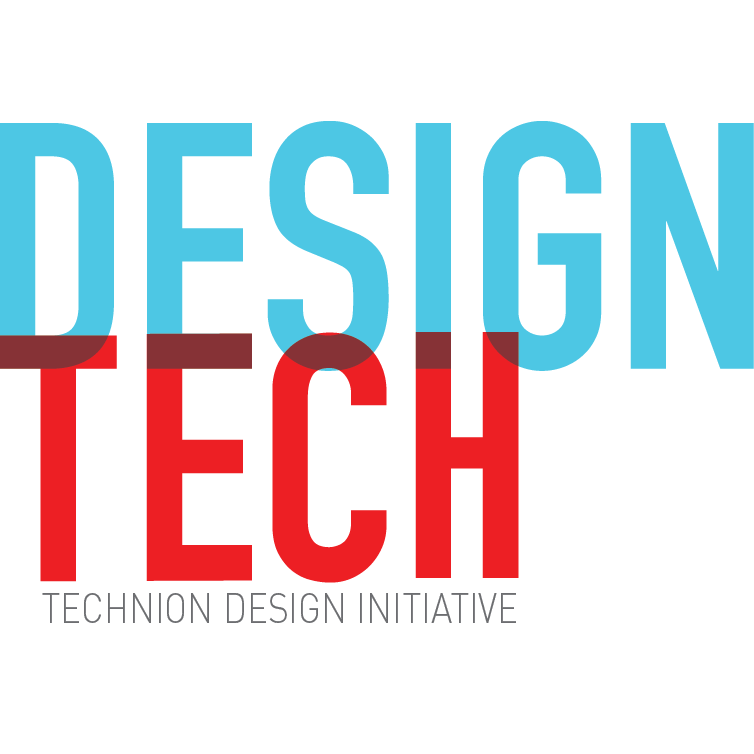
The site is under construction, Sorry for the inconvenience.
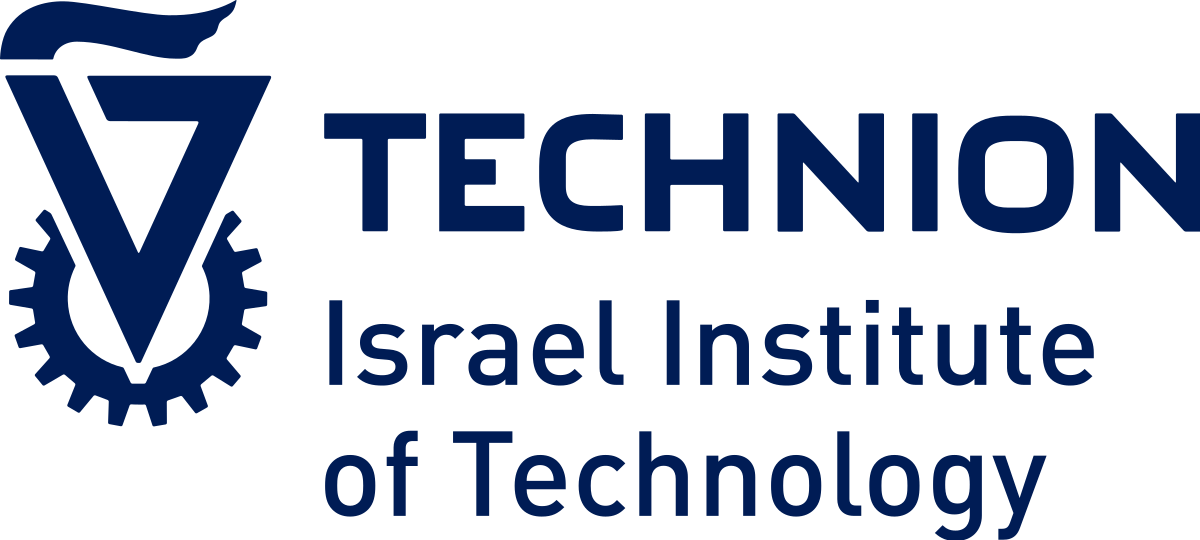
פיתוח של סטודנטיות מהמסלול לעיצוב תעשייתי בטכניון מאפשר לשני, ילדה בת שש שנולדה עם שיתוק מוחין, לצייר ולאכול בכוחות עצמה לראשונה בחייה. דנה גור-גלברד, הדס ויזמן, מרינה גבינסקי ומור היינריך – הכירו במסלול לתואר שני בעיצוב תעשייתי (M.I.D) בטכניון. את המסלול מוביל פרופ’ עזרי טרזי מהפקולטה לארכיטקטורה ובינוי ערים. הפיתוח האמור – Drawing Dreams –…
בקרוב
רעות תורג׳מן ורחל גץ סלומון בוחרות בכל פרק בפודקאסט שלהן נושא אחר מעולם על אופנה ו״מתלבשות על זה״ לכתבה המלאה לחץ כאן

The site is under construction, Sorry for the inconvenience.

מציירים חלום
פיתוח של סטודנטיות מהמסלול לעיצוב תעשייתי בטכניון מאפשר לשני, ילדה בת שש שנולדה עם שיתוק מוחין, לצייר ולאכול בכוחות עצמה לראשונה בחייה. דנה גור-גלברד, הדס ויזמן, מרינה גבינסקי ומור היינריך – הכירו במסלול לתואר שני בעיצוב תעשייתי (M.I.D) בטכניון. את המסלול מוביל פרופ’ עזרי טרזי מהפקולטה לארכיטקטורה ובינוי ערים. הפיתוח האמור – Drawing Dreams –…
התשוקה לאופנה, גרסת הפודקאסט
רעות תורג׳מן ורחל גץ סלומון בוחרות בכל פרק בפודקאסט שלהן נושא אחר מעולם על אופנה ו״מתלבשות על זה״ לכתבה המלאה לחץ כאן
יצירת שוניות מלאכותיות בים האדום מאריחי טרה-קוטה המודפסים בתלת מימד
28.4.21 מה כבר אפשר לעשות לטובת שוניות אלמוגים שמתות בגלל התחממות כדור הארץ, החמצת אוקיינוסים, הלבנת אלמוגים, זיהום ודייג יתר? אם אתה פרופסור עזרי טרזי, אתה משתמש בטכנולוגיה חדשה כדי ליצור שוניות מלאכותיות, אשר בתקווה יוכלו למשוך דגים ולאכלס מחדש שוניות באזורים שהיו עקרים בעבר. איפה התפנית? כיו”ר מעבדת העיצוב דיזיין-טק ותכנית העיצוב התעשייתי…
בחזרה לעתיד // עזרי טרזי
יובל סער / בחזרה לעתיד / שבת, 30 בינואר 2021 בחזרה לעתיד // עזרי טרזי קל״ב, תערוכת היחיד של עזרי טרזי ב־2011, הייתה ״הכי 2020; סוג של עיצוב נבואי״. לעשור הבא הוא קורא Deep Design (בהשראת צלילות המחקר שלו), ולדור הבא דור ה־A, ״אולי משום שהוא יתחיל את הכל מחדש״ לכתבה המלאה לחץ כאן
כנס ימי Design -Tech 2021
עיצוב הסביבה הימית וטכנולוגיה כנס ימי Design -Tech 2021 , טכניון קול קורא אנו שמחים להציג את יוזמת מעבדת Design Tech להקמת פורום בין תחומי בנושאי עיצוב וטכנולוגיה בתחום המחקר הימי. בהיותו תחום מחקר רב תחומי, רחב ומאתגר, אנו מאמינים שפורום מקצועי שכזה יוכל לשפר ולהעמיק באופן משמעותי את השותפות בין חוקרי התחום הימי בפקולטות…
קול קורא: מלגות מחקר של האיחוד האירופי לתואר שני בחשיבה עיצובית
בוגרי תואר ראשון בתעשייה וניהול מוזמנים להגיש מועמדות ללימודי תואר שני במסלול לעיצוב תעשייתי בטכניון. המועמדים הנבחרים יצטרפו למחקר אשר מוביל פרופ’ עזרי טרזי להטמעת עקרונות חשיבה עיצובית* בניהול התנועה האורבנית והתחבורה הציבורית במדינות האיחוד האירופי. מלגות יוענקו למתאימים! מועד אחרון להגשת מועמדות: 15 באוגוסט 2020 לשאלות – חוקרת חשיבה עיצובית, ניסאן אסעד חאיק nissan.assad@gmail.com…
מסיכות | בעידן ה – COVID19
מגיפת הקורונה של נגיף ה – Covid19 מתפשטת ברחבי העולם במהירות ומפתיעה את העולם בקצב ובמקומות אליה היא מגיעה. המגיפה יוצרת בחודשיים האחרונים שינוי התנהגותי רחב היקף שלא נודע כמוהו עד כה, וברמה העיצובית הוא בא לידי ביטוי בכיסוי הפנים, במסיכות המגן ובדרך שבה אנשים בוחרים להגן על עצמם ועל יקיריהם באיזורים צפופים. ב- 2005…

The site is under construction, Sorry for the inconvenience.

COVIDESIGN: וילון אוויר
.fl-page-header {display: none; !important } .fl-page-nav-right.fl-page-header-fixed .fl-page-header-container.container, .fl-page-header-fixed .fl-page-header-container.container {display: none; !important} האתר בשיפוץ, מתנצלים על אי הנוחות הזמנית. נגיף הקורונה המדבק יצר צורך הכרחי להגן על הצוות הרפואי, למען בריאותו האישית ולמען המטופלים הזקוקים לטיפולו הצמוד. וילון אוויר הוא ציוד הגנה אישי שפותח עבור הצוות הרפואי בתקופת בקורונה. ציוד זה יגדיל באופן משמעותי…
xCoral – שיקום שונית האלמוגים באמצעות הדפסת קרמיקה תלת ממדית
פרוייקט מחקר בתחום של שיקום שונית אלמוגים באמצעות הדפסת תלת מימד של חימר. המחקר של פרופ׳ עזרי טרזי, יחד עם הדוקטורנט עופר ברמן, וחוקרים נוספים במעבדה, המרצה הבכיר חיים פרנס, ובשיתוף עם ביולוגים ימיים. הרעיון המרכזי הוא לייצר תשתית לגיוס דגים באמצעות ייצור דגמים שונים ומגוונים שיוצרים מורכבות מספקת המאפשרת לבעלי חיים ימיים לראות בשונית…
רעשן גנרטיבי
עיצוב גנרטיבי – Generative Design – הוא תחום חדש בתחום העיצוב המאפשר למעצבים לבחור בין אפשרויות עיצוב הנוצרות ע”י אלגוריתם המבוסס על חישובי אנליזה של כוחות עבורנו. התהליך דורש הגדרת אילוצים וכוחות הפועלים לדעתנו על האובייקט. בשלב הבא, נוצרות בענן תצורות רבות ומגוונות, המוצעות כפתרון על ידי התוכנה. המעצבים בוחרים מבין האפשרויות על פי שיקולי…
Alumni


video

מעבדת חומר_מקודד היא חלק ממעבדות DesignTech של המסלול לעיצוב תעשייתי.
ראש המעבדה: יואב שטרמן.
רקע
אנחנו עומדים בשערי המהפכה התעשייתית הרביעית. בשנים האחרונות זכינו לראות התקדמות הולכת וגוברת בפיתוח של טכניקות ייצור דיגיטליות כגון הדפסה תלת־ממדית, ייצור רובוטי וסריגה דיגיטלית. טכנולוגיות אלה, יחד עם טכנולוגיות מבוססות בינה מלאכותית ו-IoT (האינטרנט של הדברים), יגרמו להעברת הייצור התעשייתי ממפעלים גדולים לבתי חרושת דיגיטליים מקומיים וקטנים, וישבשו את המודלים העסקיים ואת שרשראות האספקה של תעשיות שלמות. המהפכה הזאת תשנה לא רק את האופן ואת המיקום שבהם מיוצרים המוצרים אלא גם את אופן עיצובם, ולפיכך היא דורשת מהמעצבים לפתח כישורים וידע חדשים.
אחרי שנים של ניתוק בין העיצוב לייצור, ייעשו אמצעי הייצור לדמוקרטיים ונגישים למעצבים וליצרנים. מעצבים יהיו מעורבים בעשייה והייצור יהיה חלק בלתי נפרד מתהליך העיצוב. כמו במציאות שקדמה למהפכה התעשייתית הראשונה, המעצבים שוב יהיו מעורבים בייצור מוצרים, אלא שהפעם ישתמשו בכלים דיגיטליים. אלגוריתמים, קידוד ומכונות לייצור דיגיטלי יהיו הכלים הבסיסיים והעיקריים שלהם.
המטרה
מטרת המעבדה היא להמציא טכנולוגיות ייצור דיגיטליות חדשות ולבסס תהליכי עבודה עיצוביים חדשים מבוססי מידע. תהליכים אלה יחשפו אופקים חדשים של עיצוב ויאפשרו ייצור של מוצרים מותאמים אישית המיוצרים על בסיס דרישה.
מיקוד המחקר
המעבדה תפעל כמרכז רב־תחומי למחקר פורץ דרך בתחום של ייצור דיגיטלי, כדי לחקור את הקורלציה בין עיצוב פרמטרי לייצור דיגיטלי בקונטקסט של עיצוב מותאם אישית, תוך התמקדות בטקסטיל ומוצרים הבאים במגע עם גוף האדם.
המחקר במעבדה יתמקד בתחומים הבאים:
- טקסטיל דיגיטלי חכם
- ייצור והרכבות באמצעות רובוטים
- חומרים ברי־תכנות
הציוד לייצור דיגיטלי במעבדה כולל:
- מכונת סריגה דיגיטלית תעשייתית – STOLL ADF 530 Ki Bc W
- מכונת אריגה דיגיטלית TC2
- מדפסת תלת־ממדית תעשייתית המיועדת לחומרים גמישים – Intamsys 510 Flex
- זרועות רובוטיות שיתופית – UR5
- מדפסת תלת־ממד – Raise3D PRO
(קרדיט תצלום: יובל גור)
אתר המעבדה: https://codedmatter.technion.ac.il
סגל
סגל2
123
מעבדת Design Tech היא המעבדה המרכזית של המסלול לעיצוב תעשייתי בראשות פרופ' עזרי טרזי. המעבדה תומכת בסטודנטים לתארים מתקדמים בעיצוב תעשייתי ומאפשרת להם לממש את המחקרים והפרויקטים השונים במהלך הלימודים. המעבדה מובילה מחקרים עיצוביים בשלושה תחומים עיקריים: סביבה ימית, מכשור וציוד רפואי, ותרבות וחשיבה עיצובית' כאשר בכל אחד מהתחומים מובילה המעבדה מחקרים מעוררי השראה: מהדפסת שוניות מלאכותיות, דרך פיתוח צמיד רפואי למעקב אחר טיפולים בשדה הקרב ועד מציאת דרכים להעלאת מוטיבציה ללמידה דרך חשיבה עיצובית.
מטרת המעבדה היא לאפשר מרחב של תכנון וייצור מתקדם, כמעט ללא מגבלות, אשר מתאים לימי המהפכה התעשייתית הרביעית. כדי למלא ייעוד זה כוללת המעבדה אמצעי ייצור מהמתקדמים ביותר כיום, כדלקמן:
- מכונת עיבוד שבבי 5 צירים
- מדפסת תלת ממד בטכנולוגיית MJF- HP Jet Fusion 580
- מדפסת תלת ממד פורמט גדול בטכנולוגית FDM- 3DP workbench 300 pro
- מדפסת תלת ממד בטכנולוגיית SLA- Formlabs Form 2
- מדפסת חימר תלת ממד בטכנולוגיית LDM- Wasp 3MF LDM Extruder

The site is under construction, Sorry for the inconvenience.


Coded_Matter is directed by Yoav Sterman. The lab is part of DesignTech at the Industrial Design Track at the Faculty.
Background
We stand before the dawn of the fourth industrial revolution. In recent years we witnessed an extending advancement in the development of digital fabrication technologies such as 3D printing, robotic fabrication and digital knitting. These technologies together with IoT and AI, will shift industrial manufacturing from large plants to smaller, local digital factories, disrupting the business models and supply chains of entire industries. This revolution will transform not only how and where products are made, but also how products are designed, which therefore require new skills and knowledge from designers. Moreover, this shift will change designers’ approach to product design.
After years of detachment between design and manufacturing, the means of manufacturing will be democratized and accessible for designers and makers. It can be presumed that designers will be engaged in the making, and fabrication will be an inseparable part of the design process. Much like before the first industrial revolution, designers will again craft products, this time digitally. Algorithms, coding and digital fabrication machines will be their fundamental and primary tools.
The Goal
The goal of the lab is to invent new digital manufacturing technologies and to establish new design workflows that will unlock design spaces and enable a future of customized products that are made on-demand and manufactured domestically.
Research focus
We explore the correlation between computational design and digital manufacturing in the context of personalization and customization of products, focusing on textiles and close-to-the-body products.
Lab research focus areas:
- Smart digital textiles
- Robotic assemblies & composites
- Programmable Materials
Digital fabrication equipment at the lab includes:
- STOLL ADF 530 Ki Bc W – Industrial digital knitting machine
- TC2 digital weaving machine
- Intamsys 510 Flex – industrial 3D printer designed for flexible materials
- UR5 – Collaborative robotic arm
- Raise3D Pro2 – 3D printer
(Photo credit: Yuval Gur)
Lab website: https://codedmatter.technion.ac.il

The Design Tech Lab is the main laboratory of the Industrial Design Track, headed by Prof. Ezri Tarazi. The lab supports graduate students in industrial design and enables them to realize the various studies and projects during their studies. The lab leads design research in three main areas: marine environment, medical instrumentation and equipment, and design culture and thinking. In each of these fields, the lab leads inspiring research from printing artificial reefs, through the development of a medical bracelet for monitoring treatments on the battlefield, to finding ways to increase motivation for learning through design thinking.
The lab aims to provide space for advanced design and production, almost without limitations, and to accommodate research fitting the Fourth Industrial Revolution. To fulfill this mission, the laboratory holds the most advanced means of production, as follows:
- 5-axis milling machine
- 3D printer using MJF-HP Jet Fusion 580 technology
- Large format 3D printer with FDM-3DP workbench 300 pro technology
- 3D printer with SLA technology – Formlabs Form 2
- 3D clay printer with LDM-Wasp 3MF LDM Extruder technology
The use of the printers is open for paid use of all faculty members and students.
מעבדות
Labs


יעדי התוכנית
מטרת התוכנית להכשיר חוקרים שאינם בעלי תואר מקצועי בארכיטקטורה במחקר המשיק לתחומם בארכיטקטורה ובבינוי ערים.
מבנה תוכנית הלימודים
בעלי תואר ראשון ארבע־שנתי במדעי הארכיטקטורה (.B.Sc), החברה והרוח, באדריכלות נוף, בהנדסה, במדעים או באמנויות, נדרשים ללמוד מקצועות מתקדמים בהיקף של 24 נקודות ולהשלים עבודת מחקר בהיקף של 20 נקודות, או ללמוד מקצועות בהיקף 32 נקודות ולהשלים עבודת גמר בהיקף של 12 נקודות.
בעלי תואר ראשון תלת־שנתי נדרשים ללמוד מקצועות מתקדמים בהיקף של 30 נקודות ולהשלים עבודת מחקר בהיקף של 20 נקודות, או ללמוד מקצועות בהיקף 38 נקודות ולהשלים עבודת גמר בהיקף של 12 נקודות.
מוסמכי תואר ארבע־שנתי בהנדסה ובמדעים (להוציא מדעי הארכיטקטורה) נדרשים להשלמות בלימודי הסמכה בארכיטקטורה בהיקף של 10 נקודות. מוסמכי תואר במדעי החברה והרוח ובאמנויות נדרשים להשלמות בלימודי הסמכה בארכיטקטורה בהיקף של 15 נקודות, מתוכן ניתן ללמוד 6 נקודות הסמכה. מוסמכי תואר תלת־שנתי נדרשים להשלמות כנ”ל בהיקף של 20 נקודות. ייתכנו דרישות השלמה נוספות בהתאם לרקע של המועמד.
דרישות קבלה
לתוכנית יתקבלו בעלי תואר ראשון במדעי הארכיטקטורה, באדריכלות נוף, בהנדסה או במדעים, בעלי הישגים גבוהים מאוד (ממוצע מעל 85), ובעלי תואר ראשון במדעי החברה והרוח בדירוג 15 האחוזים העליונים ביחס לסטודנטים אחרים במחזור שלהם.
רישום
לרישום לחצו כאן.
צרו קשר
קרן שטגר, רכזת מוסמכים | בניין אמאדו, חדר 312
04-8294285 | ar.g.ad@technion.ac.il


יעדי התוכנית
התוכנית למגיסטר בעיצוב תעשייתי מכשירה סטודנטים בתחומי היצירה והפיתוח בעיצוב תעשייתי, עיצוב מדיה, עיצוב הנדסי והנגזרות המקצועיות, מתוך הממשק שלו לטכנולוגיה ומדע בתחומים כמו: חשיבה עיצובית, עיצוב היברידי, עיצוב מוצרי צריכה, עיצוב ממשקים (UX ו-UI), עיצוב אובייקטים מרושתים (IoT), עיצוב למתארי אתגר, עיצוב מוצרים רפואיים, עיצוב מבוסס פרמטרים ואינטליגנציה מלאכותית, עיצוב וירטואלי, עיצוב מזון, עיצוב חברתי, עיצוב טכנולוגיה לבישה, קראפט דיגיטלי, עיצוב תחבורה, עיצוב בחומרים חדשים, עיצוב לעולם השלישי, עיצוב ביולוגי, עיצוב ימי, עיצוב וחלל, עיצוב ואקולוגיה ועיצוב עתידני.
התוכנית בנויה על אוסף של מעבדות עיצוב פעילות ומבוססת על חברי סגל חוקרים ויוצרים מובילים בתחומם המשלבים ידע מעמיק בתחומי העיצוב, ממשק עם טכנולוגיה חדשה ומחקר במתודה מדעית בשילוב עם פקולטות להנדסה ומדע קיימות בטכניון.
התוכנית משלבת גופי פיתוח מהמגזר העסקי, התעשייתי והטכנולוגי, תוך גיבוש הזדמנויות בתחומי המחקר, הפיתוח והיזמות הטכנולוגית או החברתית.
התוכנית קשובה לזרמים העמוקים של תהליכים המשפיעים עלינו כיחידים, כקהילה וכמארג גלובלי ומתגייסת למתן פתרונות לצרכים חיוניים המתגלים בתהליכי חיפוש פתוחים לעתיד.
התוכנית מהווה ׳צומת מחבר׳ (Hub) של מפגש בין תחומי התמחות ודיסציפלינות שונות, לגיבוש קבוצות מחקר, פיתוח ויזמות מתחומים שונים.
התוכנית מעניקה כלים לעבודת צוות, ניהול חדשנות ומתודולוגיה של חדשנות בתפיסה של חשיבה עיצובית כתשתית תיאורטית ומעשית.
התוכנית מיועדת בעיקרה לסטודנטים עובדים בתחומי העיצוב, ההנדסה ותחומים נוספים המחפשים להרחיב את הידע והיכולות המקצועיות שלהם ולשלב חשיבה עיצובית מתקדמת בפרקטיקה הקיימת שלהם או לעשות הסבה למקצועות העיצוב.
מבנה תוכנית הלימודים
תוכנית הלימודים מציעה מסגרת של שתי שנות לימוד לתואר שני בעיצוב תעשייתי ללא תזה במהלכן על הסטודנטים לצבור 45 נקודות אקדמיות אשר מתחלקות באופן הבא:
- מקצועות חובה בהיקף של 17 נק׳
- מקצועות בחירה בהיקף של 16 נק׳
- פרויקט גמר בהיקף של 12 נק׳
סטודנטים שאינם מגיעים מתוך התחום של עיצוב תעשייתי עידרשו ללמוד בנוסף מספר מקצועות קדם בהיקף של 3 נקודות.
התוכנית מורכבת משלושה רבדים של קורסים:
מקצועות קדם – כוללים מקצועות בסיס בעיצוב תעשייתי. סטודנטים שלמדו מקצועות אלה במסגרת התואר הראשון יקבלו פטור בעת הקבלה לתואר שני.
מקצועות חובה – כוללים מקצועות שחובה על כל סטודנט המתקבל לתואר שני בעיצוב תעשייתי ללמוד בנוסף למקצועות הקדם.
מקצועות בחירה – כוללים מקצועות הניתנים לבחירה בשתי קטגוריות: א) מקצועות בחירה מתוך התוכנית ב) מקצועות בחירה מחוץ לתוכנית.
דרישות קבלה
התוכנית פתוחה לסטודנטים בעלי תואר ראשון בעיצוב תעשייתי (תואר ארבע שנתי ממוסד אקדמי מוכר), או בעלי תואר ראשון (ממוסד אקדמי מוכר) בתחומי עיצוב כמו עיצוב תקשורת חזותית, ארכיטקטורה, עיצוב פנים, עיצוב אופנה, עיצוב תכשיטים, עיצוב קרמי, עיצוב טקסטיל ואמנות וכן בוגרי תואר ראשון בתחומי ההנדסה כמו הנדסת מכונות, הנדסת תעשייה וניהול, הנדסת מחשבים, הנדסת מזון, הנדסת רכב וחלל ועוד.
ההחלטה על קבלה לתוכנית תתקבל לגבי כל מועמד על פי הישגיו והרקע הלימודי והמקצועי שלו בכפוף לקבלה על ידי בית הספר לתארים מתקדמים. בדרך כלל יתקבלו סטודנטים שממוצע הציונים שלהם בתואר הראשון הוא 80 ומעלה. במקרים חריגים, תשקול ועדת הקבלה של המסלול קבלת סטודנטים בממוצע נמוך יותר, אך שאינו נופל מ-75 (סף הקבלה של בית הספר לתארים מתקדמים).
ההחלטה על הקבלה תכלול שקלול של המרכיבים הבאים: הצהרת כוונות, קורות חיים, תיק עבודות (פורטפוליו), וגיליון ציונים אשר יובאו לפני ועדת הקבלה של המסלול. המועמדים המתאימים יוזמנו לראיון קבלה. סטודנטים לתואר ראשון יכולים להגיש את מועמדותם (על תנאי) במהלך השנה האחרונה ללימודיהם, אך יוזמנו רק לאחר שעמדו בתנאים הסופיים הנדרשים.
רישום
לרישום לחצו כאן.
צרו קשר
קרן שטגר, רכזת מוסמכים | בניין אמאדו, חדר 312
04-8294285 | ar.g.ad@technion.ac.il
סגל
בקרוב

The site is under construction, Sorry for the inconvenience.

Program objectives
The Master of Industrial Design trains students in production and development in industrial design, media design and engineering design and related professions, with an emphasis on their close interface with technology and science, as applied to design thinking, hybrid design, consumer product design, interface design (UI and UX), design of IoT, design for complex challenges, design of medical devices, parametric design and artificial intelligence, virtual design, food design, social design, design of wearable technology, digital craft, transportation design, new materials design, design for the other 90%, biologic design, marine design, design and space, design and ecology, and futuristic design.
The program is based on a series of active design laboratories and is led by faculty members who are considered leading researchers and creators in their fields. The curriculum integrates advanced design knowledge, new technologies and scientific research, and draws on collaborations with the engineering and science faculties at the Technion.
The program incorporates stakeholders from the business, industrial and technology sectors, while forging opportunities for research, development and technological and social entrepreneurship.
The study program is attentive to the complex processes that influence us as individuals, communities and global networks, and strives to find solutions for the vital necessities that arise from tireless inquiry, with an eye towards the future.
The program offers a Hub of various disciplines and areas of expertise, and cultivates research, development and entrepreneurial collaborations between practitioners from different fields.
Students will gain tools for collaborative work, management and methodology of innovation, and using design thinking as a theoretical and practical foundation.
The program is designed for students who work in design, engineering and related fields who are looking to expand their knowledge and professional competencies and integrate advanced design thinking into their practice, or those who wish to transition into the design professions.
Curriculum
The curriculum spans two years during which students are required to complete 45 academic credits towards a Master of Industrial Design, divided as follows:
- Core courses – 17 credits
- Electives – 16 credits
- Capstone project – 12 credits
Students who do not have a background in industrial design must complete 3 credits of prerequisite courses.
The curriculum consists of three clusters:
Introductory courses – including basic topics in industrial design. Students who already studied these topics during their bachelor’s degree will be exempted from these courses upon admission to the master’s program.
Core courses – the required coursework for all students accepted in the Master of Industrial Design program, in addition to the introductory courses.
Electives – students can choose courses from two categories: 1) electives from the Industrial Design Track, 2) electives from other Faculty Tracks.
Admissions requirements
The program is open to students with a bachelor’s degree in Industrial Design (a four-year degree from a recognized academic institution), or a bachelor’s degree (from a recognized academic institution) in related design fields such as visual communications, architecture, interior design, fashion design, jewelry design, ceramic design, textile design and fine arts, as well as graduates with a bachelor’s degree in engineering fields such as mechanical engineering, industrial engineering and management, computer engineering, food engineering, automotive and aerospace engineering, etc.
Admissions decisions will be made regarding each candidate based on their achievements and educational and professional background, and contingent on their acceptance by the Technion’s Graduate School. In general, students who are admitted have completed a bachelor’s degree with a grade point average of 80 or above. In rare cases, the admissions committee will consider candidates with a lower grade point average, but no lower than 75 (the cutoff for acceptance into the Technion’s Graduate School).
The admission decision will consider the following factors: declaration of intent, curriculum vitae, portfolio and university transcripts, which will be submitted to the program’s admissions committee. Suitable candidates will be invited for an interview. Students studying towards their bachelor’s degree may apply during their final year of studies but will only be invited for an interview upon fulfilling all prerequisite requirements.
Application
To apply, click here.
Contact
Keren Steger, Graduate Studies Coordinator | Amado Building 312
+972-4-8294285 | ar.g.ad@technion.ac.il


עיצוב נחשב כיום למשאב אסטרטגי עבור חברות טכנולוגיה מצליחות, והוא מהווה את אחד הגורמים החשובים הנדרשים לחברות הזנק בתחום ההיי-טק. בשנת 2016, יותר משליש חברות הסטארט אפ בעלות ההשקעות החזקות ביותר בארצות הברית העסיקו מעצב אחד לפחות בתור שותף מייסד.תחום העיצוב כיום הוא כבר אינו רק בגדר המלצה, אלא משמש כאחד מהרכיבים הראשיים הנדרשים ליצירת בידול וגדילה עסקית. עיצוב מחזק את הטכנולוגיה והופך אותה לנגישה יותר. בישראל, תחום העיצוב מתקשר באופן מסורתי לבתי ספר לאומנות או ארכיטקטורה, וכמעט ולא מיוצג בתוכניות מדע, הנדסה וטכנולוגיה.
בהבנת הצורך ההכרחי לשלב קורסי עיצוב בתוכניות הלימודים של מקצועות ההנדסה, יזם הטכניון את Design-Tech:
- בטווח הקצר- הקמת אשכול קורסים לתואר ראשון במטרה לחשוף את הסטודנטים במקצועות ההנדסה למושגים ומתודולוגיות חשובות של עולם העיצוב.
- בטווח הארוך- הכנת תוכנית אסטרטגית להקמת מרכז עיצוב רחב בטכניון.
אשכול קורסי העיצוב יכלול קורסי בחירה לתואר ראשון לכלל הפקולטות. חלק מהקורסים האלה יועברו בחללי סטודיו ייחודים שישופצו ויאבזרו כך שיתאימו ללימוד סדנאות חשיבה עיצובית וכלים עיצוביים נוספים. כיתות אלה יכללו משטחי שרטוט דיגיטליים, לוחות "POST IT", כלים ליצירת אבי-טיפוס דיגיטליים, וסידור ריהוט גמיש שיתאים לעבודה בקבוצות בסדנאות. בנוסף, מספר סטודנטים מצטיינים יוכלו להשתתף בקורסי פיתוח מקצועיים , תוכניות חילופי סטודנטים, תחרויות, תערוכות וכנסים הקשורים לנושאי העיצוב והטכנולוגיה השונים.
לבסוף, הטכניון יהיה בעל ניסיון משמעותי ביצירת אשכול קורסי עיצוב, מה שיתרום לחקר ופיתוח תוכנית אסטרטגית להקמה ומינוף של מרכז Design Tech כמרכז תרבותי של הטכניון.
יוזמת העיצוב של הטכניון נתמכת באופן נדיב ע"י
The Firefly Scientists’ Foundation

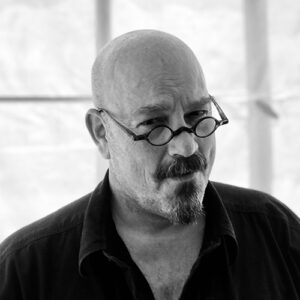
תכניות
מטרת התוכנית
התוכנית לתואר מתקדם בעיצוב תעשייתי מיועדת להכשיר סטודנטים בתחומי היצירה, המחקר הפיתוח בעיצוב תעשייתי, עיצוב ומדיה ועיצוב והנדסה, והנגזרות המקצועיות מתוך הממשק שלו לטכנולוגיה ומדע בתחומים כמו: חשיבה עיצובית, (UX, UI) עיצוב היברידי, עיצוב מוצרי צריכה, עיצוב ממשקים עיצוב למתארי אתגר, עיצוב ,(IoT) עיצוב אובייקטים מרושתים מוצרים רפואיים, עיצוב מבוסס פרמטרים ואינטליגנציה מלאכותית, עיצוב וירטואלי, עיצוב מזון, עיצוב חברתי, עיצוב טכנולוגיה לבישה, קראפט דיגיטלי, עיצוב תחבורה, עיצוב בחומרים חדשים, עיצוב לעולם השלישי, עיצוב ביולוגי, עיצוב ימי, עיצוב וחלל, עיצוב ואקולוגיה ועיצוב עתידני.
מטרת התוכנית להעניק את הידע והכלים התיאורטיים, המקצועיים והמחקריים הדרושים לביצוע תהליכי שינוי ומענה לצרכי עתיד, ליצירת חדשנות פורצת דרך המיועדת לשימושם של בני אדם ברחבי העולם, תוך הקניית תארים מתקדמים (תואר שני ושלישי).
- התוכנית מציעה מסגרת של שתי שנות לימוד (ומעלה) לתואר שני בעיצוב תעשייתי בשלושה נתיבים: נתיב ללא תזה – מבוסס מקצוע מסוג פרויקט, נתיב עם תזה – מבוסס פרוייקט עיצובי-הנדסי ונתיב עם תזה תיאורטית.
- התוכנית מציעה מסגרת אקדמית יחידה בישראל ל- PhD לימודי דוקטורט בעיצוב
- תוכנית הלימודים בנויה על אוסף של מעבדות עיצוב פעילות, המבוססת על חברי סגל חוקרים ויוצרים המובילים בתחומם, המשלבים ידע מעמיק בתחום של עיצוב ומדיה ובממשק עם טכנולוגיה חדשה ומחקר במתודה מדעית, ובשילוב עם פקולטות להנדסה ומדע הקיימות בטכניון ומעבדות מחקר.
- התוכנית משלבת גופי פיתוח מהמגזר העסקי, התעשייתי והטכנולוגי, תוך גיבוש הזדמנויות בתחומי המחקר, הפיתוח והיזמות הטכנולוגית או החברתית. התוכנית קשובה לזרמים העמוקים של התהליכים המשפיעים עלינו כיחידים, כקהילה וכמארג גלובלי, ומתגייסת לצרכי עתיד חיוניים המתגלים בתהליכי חיפוש פתוחים לעתיד.
- התוכנית מהווה ‘צומת מחבר’ של מפגש בין תחומי התמחות ודיסציפלינות שונות, לגיבוש קבוצות מחקר, פיתוח ויזמות מתחומים שונים. התוכנית מעניקה כלים לעבודת צוות, לניהול עבודת צוות חדשנות, ולמתודולוגיה של חדשנות בתפישה של ׳חשיבה עיצובית׳ כתשתית תיאורטית ומעשית.
פרופ’ עזרי טרזי,
ראש מסלול בעיצוב תעשייתי, הפקולטה לארכיטקטורה ובינוי ערים, טכניון
לשאלות והרשמה:
קרן שטגר, מזכירת תארים מתקדמים
04-8294018 | arcgrd@technion.ac.il


יעדי התוכנית
תואר זה מיועד למי שמעוניינים לערוך מחקר עצמאי ומקורי ברמה גבוהה בתחומים הנלמדים בפקולטה.
ההשתלמות לתואר ממוקדת בעבודת המחקר ובהכנת החיבור. רכישת ידע נוסף נעשית ברוב המקרים בדרך לימוד עצמי מונחה וקריאה מודרכת בתחומים ובשטחים הנובעים מנושא המחקר.
המחקר יהיה מקורי, עיוני או ניסויי, בסיסי או שימושי, תוך הדגשת הגישה המדעית והאנליטית. על המועמד להוכיח את כשירותו למחקר, ואת יכולתו לבצע מחקר מקורי בעל ערך. כמו כן עליו להוכיח שהוא ניחן בסגולות היוזמה, הדמיון, ההתעמקות, כושר השיפוט וההתמדה הנדרשים מחוקר עצמאי. המחקר ייחשב לבעל ערך אם הוא ברמה המאפשרת את פרסומו בכתב עת מדעי בעל מוניטין בינלאומי ואם הוא מקדם במידה ניכרת את הידע וההבנה בתחום במחקר.
הפקולטה מציעה לימודים לתואר דוקטור בחמישה נושאים:
- דוקטור בפילוסופיה בארכיטקטורה ובינוי ערים
- דוקטור בפילוסופיה בלימודי הסביבה
- דוקטור בפילוסופיה באדריכלות נוף
- דוקטור בפילוסופיה בתכנון ערים ואזורים
- דוקטור בפילוסופיה בעיצוב תעשייתי
רשימה מתעדכנת של עבודות דוקטור שהושלמו בפקולטה מופיעה כאן.
מבנה תוכנית הלימודים
הפקולטה מציעה למרבית הסטודנטים לדוקטורט מלגת לימודים נדיבה ופטור משכר לימוד על בסיס הצטיינות אישית.
דרישות קבלה
התוכנית מיועדת לבוגרי תואר שני עם תזה, על פי כללי בית הספר לתארים מתקדמים של הטכניון. התוכנית פתוחה לבוגרי תואר שני ללא תזה, אך רק לאחר שעמדו בתנאי הקבלה למחקר גישוש (במסגרת לימודים לא לתואר) אשר יאושרו על ידי בית הספר, והם כוללים את התנאים הבאים:
- ציון ממוצע 90 לפחות במקצועות התואר השני, וציון 90 לפחות בתזת הגמר.
- שתי המלצות לפחות, ממרצים מהטכניון או מוסדות אחרים, או מומחים במקצוע רצוי בעלי תואר אקדמי גבוה. אחד הממליצים יהיה המנחה בתזת המגיסטר.
מועמדים בעלי תואר שני מחקרי בתחומים שאינם תואמים לנושא המחקר הראשי בתואר זה אך בעלי רלוונטיות למחקר יתקבלו רק לאחר לימודי השלמה בהיקף של 15 נקודות במסגרת היחידה ללימודי המשך.
התנאי לקבלה ללימודים לתואר דוקטור הוא מציאת מנחה מקרב חברי הסגל בפקולטה, והכנת מסמך המתאר את תחום המחקר (הצעת תחום) אשר יאושר על ידי ועדה ייעודית במסלול הרלוונטי בפקולטה.
בקשות להירשם לתואר דוקטור מתקבלות במשך כל השנה.
רישום
לרישום לחצו כאן.
צרו קשר
קרן שטגר, רכזת מוסמכים | בניין אמאדו, חדר 312
04-8294285 | ar.g.ad@technion.ac.il
צוות פרויקטים

יובל גור | רכז מעבדה

שיילה אוסמנוב | רכזת דיזיין טק
צוות
ועדת ההיגוי של הטכניון:
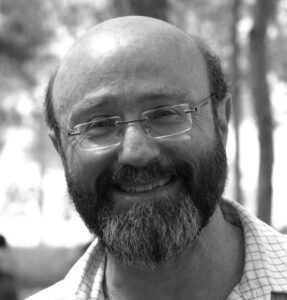
פרופ’ אבינועם קולודני | הפקולטה להנדסת חשמל, טכניון
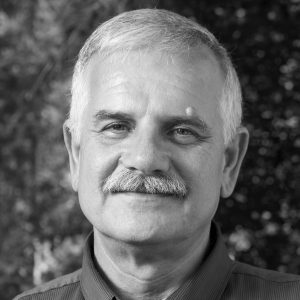
פרופ’ אבי פארוש | הפקולטה להנדסת תעשייה וניהול, טכניון
דף בית
האתר בשיפוץ, מצטערים על חוסר הנוחות.
אירועים
הגשות סטודיו 29.07
הגשות סטודיו תואר שני בעיצוב תעשייתי 29.07 משעה 9:30 עד 16:00 ההגשות יתקיימו בזום
סדנת DesignThinking
סדנת DesignThinking | שבועיים בתאריכים 21-7 ביולי, 4 מפגשים | הרשמה עד ה-3 ביולי.
תערוכות
רש רש רש – רעשנים עכשוויים
פרופ׳ עזרי טרזי, ועוזר העיצוב (מאסטרנט יובל גור) מציגים רעשן גנרטיבי בתערוכה ׳רש רש רש׳ – רעשנים עכשווים של אסכולת בצלאל | אוצרים: דר׳ עידו נוי, דר׳ שירת מרים שמיר פתיחה: יום ראשון יב׳ באדר תש״פ, 8 במרץ 2020 בשעה 18:00 מרכז למורשת היהדות ע״ש צ׳ימבליסטה, המוזיאון ליהדות ע״ש אנריקו שטרנגר בשיתוף הביאנלה של ירושלים…
Design-Tech Channel
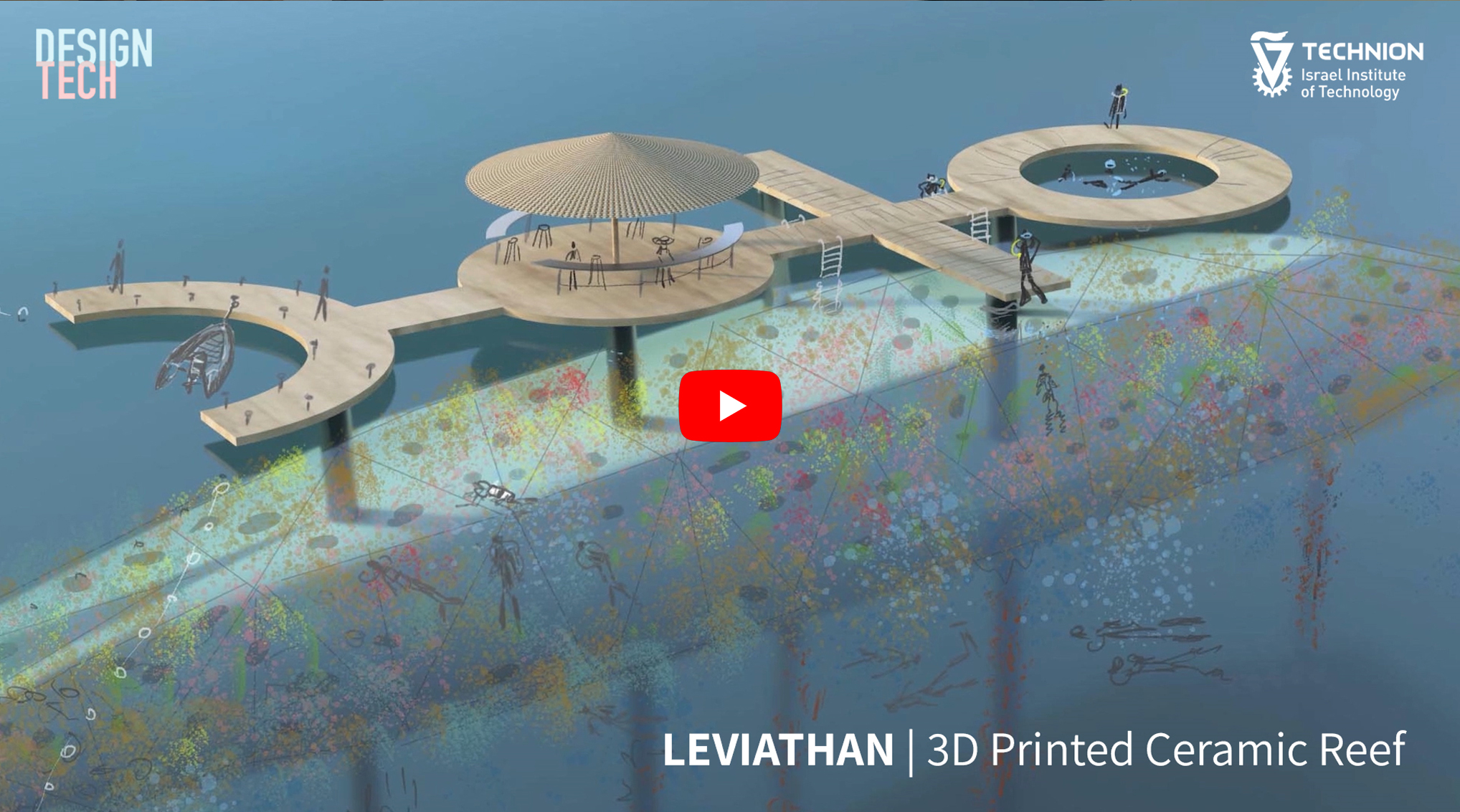
Leviathan 3D Printed Ceramic Reef
.fl-page-header {display: none; !important } .fl-page-nav-right.fl-page-header-fixed .fl-page-header-container.container, .fl-page-header-fixed .fl-page-header-container.container {display: none; !important} Leviathan 3D Printed Ceramic Reef Exhibition that presents an attempt to build an entire reef from Ceramic. The project is a part of the design biennale at the Eretz Israel Museum. More videos
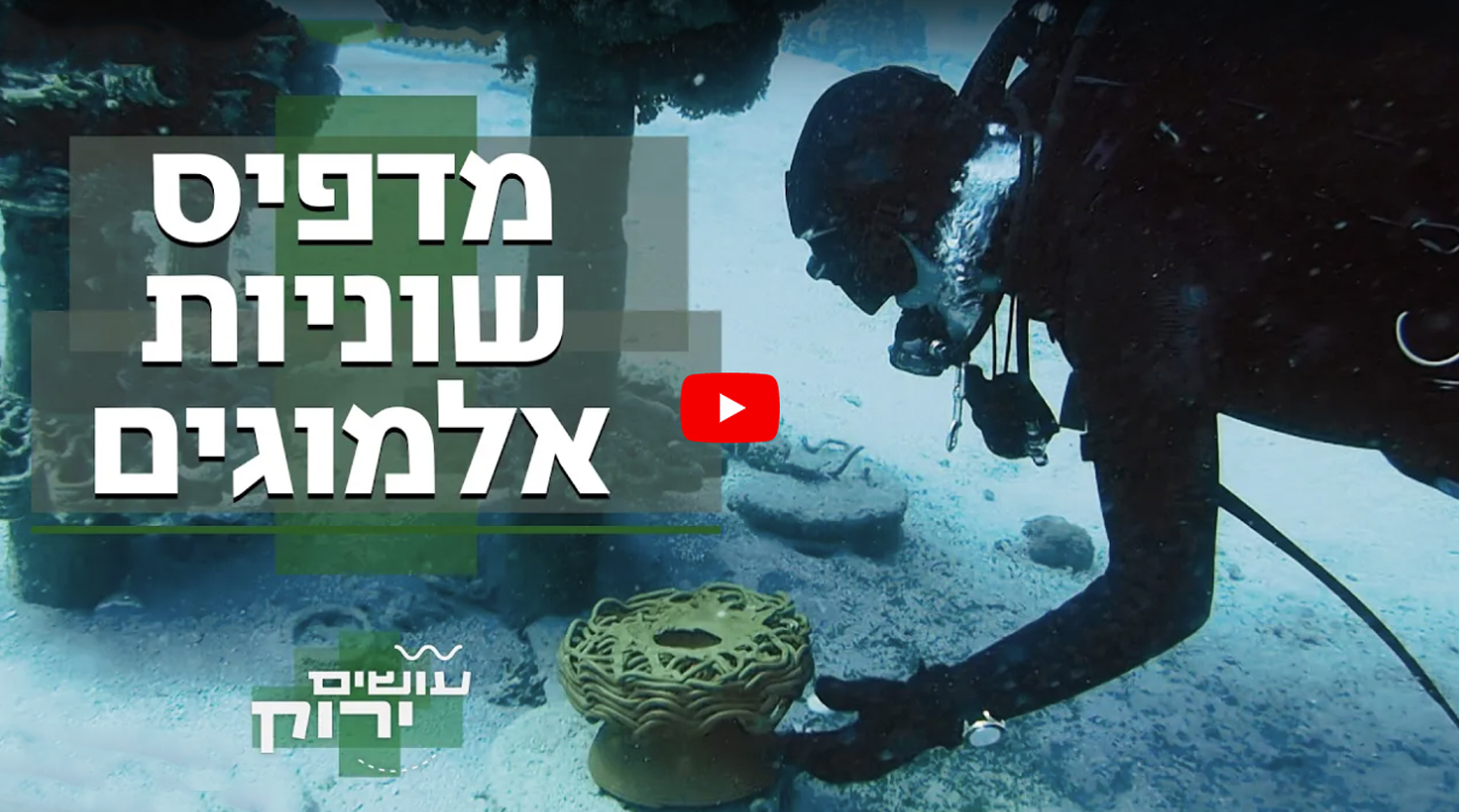
The professor who prints coral reefs
.fl-page-header {display: none; !important } .fl-page-nav-right.fl-page-header-fixed .fl-page-header-container.container, .fl-page-header-fixed .fl-page-header-container.container {display: none; !important} The professor who prints coral reefs Kan digital – Israel Broadcasting Corporation, Interviewing Professor Ezri Tarazi and the research of coral reef printing “creative people in general, They have no choice, they must be optimistic, Because creativity is a form of activism.”…
פרויקטים
COVIDESIGN: וילון אוויר
.fl-page-header {display: none; !important } .fl-page-nav-right.fl-page-header-fixed .fl-page-header-container.container, .fl-page-header-fixed .fl-page-header-container.container {display: none; !important} האתר בשיפוץ, מתנצלים על אי הנוחות הזמנית. נגיף הקורונה המדבק יצר צורך הכרחי להגן על הצוות הרפואי, למען בריאותו האישית ולמען המטופלים הזקוקים לטיפולו הצמוד. וילון אוויר הוא ציוד הגנה אישי שפותח עבור הצוות הרפואי בתקופת בקורונה. ציוד זה יגדיל באופן משמעותי…
חדשות
מציירים חלום
פיתוח של סטודנטיות מהמסלול לעיצוב תעשייתי בטכניון מאפשר לשני, ילדה בת שש שנולדה עם שיתוק מוחין, לצייר ולאכול בכוחות עצמה לראשונה בחייה. דנה גור-גלברד, הדס ויזמן, מרינה גבינסקי ומור היינריך – הכירו במסלול לתואר שני בעיצוב תעשייתי (M.I.D) בטכניון. את המסלול מוביל פרופ’ עזרי טרזי מהפקולטה לארכיטקטורה ובינוי ערים. הפיתוח האמור – Drawing Dreams –…
התשוקה לאופנה, גרסת הפודקאסט
רעות תורג׳מן ורחל גץ סלומון בוחרות בכל פרק בפודקאסט שלהן נושא אחר מעולם על אופנה ו״מתלבשות על זה״ לכתבה המלאה לחץ כאן
xCoral – שיקום שונית האלמוגים באמצעות הדפסת קרמיקה תלת ממדית
פרוייקט מחקר בתחום של שיקום שונית אלמוגים באמצעות הדפסת תלת מימד של חימר. המחקר של פרופ׳ עזרי טרזי, יחד עם הדוקטורנט עופר ברמן, וחוקרים נוספים במעבדה, המרצה הבכיר חיים פרנס, ובשיתוף עם ביולוגים ימיים. הרעיון המרכזי הוא לייצר תשתית לגיוס דגים באמצעות ייצור דגמים שונים ומגוונים שיוצרים מורכבות מספקת המאפשרת לבעלי חיים ימיים לראות בשונית…
2022
Home #2
[pb_slideshow group=”2″]
Events
הגשות סטודיו 29.07
29.07 משעה 9:30 עד 16:00
ההגשות יתקיימו בזום

Blog
מציירים חלום
פיתוח של סטודנטיות מהמסלול לעיצוב תעשייתי בטכניון מאפשר לשני, ילדה בת שש שנולדה עם שיתוק מוחין, לצייר ולאכול בכוחות עצמה לראשונה בחייה. דנה גור-גלברד, הדס ויזמן, מרינה גבינסקי ומור היינריך – הכירו במסלול לתואר שני בעיצוב תעשייתי (M.I.D) בטכניון. את המסלול מוביל פרופ’ עזרי טרזי מהפקולטה לארכיטקטורה ובינוי ערים. הפיתוח האמור – Drawing Dreams –…
Design-Tech Channel

Leviathan 3D Printed Ceramic Reef
.fl-page-header {display: none; !important } .fl-page-nav-right.fl-page-header-fixed .fl-page-header-container.container, .fl-page-header-fixed .fl-page-header-container.container {display: none; !important} Leviathan 3D Printed Ceramic Reef Exhibition that presents an attempt to build an entire reef from Ceramic. The project is a part of the design biennale at the Eretz Israel Museum. More videos

The professor who prints coral reefs
.fl-page-header {display: none; !important } .fl-page-nav-right.fl-page-header-fixed .fl-page-header-container.container, .fl-page-header-fixed .fl-page-header-container.container {display: none; !important} The professor who prints coral reefs Kan digital – Israel Broadcasting Corporation, Interviewing Professor Ezri Tarazi and the research of coral reef printing “creative people in general, They have no choice, they must be optimistic, Because creativity is a form of activism.”…
Projects
COVIDESIGN: וילון אוויר
.fl-page-header {display: none; !important } .fl-page-nav-right.fl-page-header-fixed .fl-page-header-container.container, .fl-page-header-fixed .fl-page-header-container.container {display: none; !important} האתר בשיפוץ, מתנצלים על אי הנוחות הזמנית. נגיף הקורונה המדבק יצר צורך הכרחי להגן על הצוות הרפואי, למען בריאותו האישית ולמען המטופלים הזקוקים לטיפולו הצמוד. וילון אוויר הוא ציוד הגנה אישי שפותח עבור הצוות הרפואי בתקופת בקורונה. ציוד זה יגדיל באופן משמעותי…
Exhibitions
רש רש רש – רעשנים עכשוויים
פרופ׳ עזרי טרזי, ועוזר העיצוב (מאסטרנט יובל גור) מציגים רעשן גנרטיבי בתערוכה ׳רש רש רש׳ – רעשנים עכשווים של אסכולת בצלאל | אוצרים: דר׳ עידו נוי, דר׳ שירת מרים שמיר פתיחה: יום ראשון יב׳ באדר תש״פ, 8 במרץ 2020 בשעה 18:00 מרכז למורשת היהדות ע״ש צ׳ימבליסטה, המוזיאון ליהדות ע״ש אנריקו שטרנגר בשיתוף הביאנלה של ירושלים…
State of Extremes
תערוכה קבוצתית בינלאומית החוגגת עשור למוזיאון העיצוב בחולון. מיצג אלמוגי החימר המודפסים נוצר על ידי עפר ברמן ופרופ’ עזרי טרזי, בשיתוף פעולה עם דנה שביב דצמבר 2019 – מאי 2020 מוזיאון העיצוב, חולון פתיחה: 11.12.2019
COVIDESIGN: וילון אוויר
.fl-page-header {display: none; !important } .fl-page-nav-right.fl-page-header-fixed .fl-page-header-container.container, .fl-page-header-fixed .fl-page-header-container.container {display: none; !important} האתר בשיפוץ, מתנצלים על אי הנוחות הזמנית. נגיף הקורונה המדבק יצר צורך הכרחי להגן על הצוות הרפואי, למען בריאותו האישית ולמען המטופלים הזקוקים לטיפולו הצמוד. וילון אוויר הוא ציוד הגנה אישי שפותח עבור הצוות הרפואי בתקופת בקורונה. ציוד זה יגדיל באופן משמעותי…
Exhibitions
רש רש רש – רעשנים עכשוויים
פרופ׳ עזרי טרזי, ועוזר העיצוב (מאסטרנט יובל גור) מציגים רעשן גנרטיבי בתערוכה ׳רש רש רש׳ – רעשנים עכשווים של אסכולת בצלאל | אוצרים: דר׳ עידו נוי, דר׳ שירת מרים שמיר פתיחה: יום ראשון יב׳ באדר תש״פ, 8 במרץ 2020 בשעה 18:00 מרכז למורשת היהדות ע״ש צ׳ימבליסטה, המוזיאון ליהדות ע״ש אנריקו שטרנגר בשיתוף הביאנלה של ירושלים…
State of Extremes
תערוכה קבוצתית בינלאומית החוגגת עשור למוזיאון העיצוב בחולון. מיצג אלמוגי החימר המודפסים נוצר על ידי עפר ברמן ופרופ’ עזרי טרזי, בשיתוף פעולה עם דנה שביב דצמבר 2019 – מאי 2020 מוזיאון העיצוב, חולון פתיחה: 11.12.2019
אקסטרים – עיצוב בעידן ההקצנה
לחשוף, לבקר, להתנגד, למתן, להחריף. עד כמה יכול המצב להקצין? “אקסטרים – עיצוב בעידן ההקצנה” – כנס העיצוב של מוזיאון העיצוב חולון. עזרי טרזי * רון כחלילי * איתי הרמן “הצ’ייסר” * מירב פרץ * ועוד. בואו לשמוע מפי מיטב המעצבים ואוצרי התערוכה החדשה על המנגנונים המניעים את תהליכי ההקצנה בעולם ומהו תפקידם של המעצבים…
באוהאוס חברתי باوهاوس إجتماعي
מיצג סאדה sada سادة נוצר במיוחד עבור התערוכה, תחת השאלה “איפה התרבות המקומית פוגשת טכנולוגיה?” עוצב על ידי ניסאן אסעד חייאק, בשיתוף פעולה עם אלכסנדר גכט, ולריה גסלב, ובהנחיית פרופ’ עזרי טרזי. נובמבר 2019 שוק תלפיות, חיפה
תקווה, امل, HOPE
אמנים ומעצבים מציגים את הפרשנות האישית שלהם למושג תקווה. אוצרת: דנה אריאלי מציגים: עזרי טרזי ומעבדת Design-Tech בטכניון, שי זילברמן, סטודיו רדיש – נעמה שטיינבוק ועידן פרידמן, נעה ארד יאירי, רמי טריף, תמיר שפר. מרץ-אוגוסט 2019 מוזיאון ראשון לציון
Posts not found
Events
הגשות סטודיו 29.07
הגשות סטודיו תואר שני בעיצוב תעשייתי 29.07 משעה 9:30 עד 16:00 ההגשות יתקיימו בזום
סדנת DesignThinking
סדנת DesignThinking | שבועיים בתאריכים 21-7 ביולי, 4 מפגשים | הרשמה עד ה-3 ביולי.
מפגש מתעניינים לתואר שני – 8.6.2020
הצטרפו לזום למפגש מתעניינים בתואר מתקדם בעיצוב תעשייתי המפגש יתקיים ביום ב’ – 8.6.2020 12:00 // מפגש מרכזי עם דיקן הפקולטה וראשי מסלולים https://technion.zoom.us/j/99446927186 13:00 // מפגש אינטימי לשאלות פרטניות בלימודי עיצוב תעשייתי במפגש זה יופיע ראש המסלול וניתן יהיה לקבל הסבר מפורטים ולשאול שאלות https://technion.zoom.us/j/96593108020 13:30 // מפגש מתעניינים ללימודי תואר שלישי https://technion.zoom.us/j/97233799294 לאיוונט…
א-נורמאלי החדש
אנחנו גאים להמשיך בשיתוף פעולה עם מוזיאון העיצוב בחולון! יום שלישי 12.5 בשעה 18:00 ישירות למחשב שלכם. _ איך ייראה עולם העיצוב ביום שאחרי? איזה תפקיד יהיה בו למעצבים? ואיך נסתגל לאותו “נורמלי חדש”? מוזיאון העיצוב חולון בשיתוף מעבדת דיזיין טק מזמינים אתכם לכנס “א-נורמלי החדש”- שיח עתידני במצבי אקסטרים. האוצרים והמעצבים המציגים בתערוכה “אקסטרים”…
עיצוב בימי קורונה: סימפוזיון
עיצוב בימי קורונה: סימפוזיון בנושא עיצוב וביטויים שלו סביב הקורונה. יוזמה של מעבדת דיזייןטק, המסלול לעיצוב תעשייתי בטכניון, בראשות פרופ’ עזרי טרזי ובהשתתפות שבעה מעצבים מקומיים. יום רביעי , 6 למאי, 17:00 -19:00 פתוח לכולם!
איך הפסקתי לדאוג ולמדתי לאהוב בלוטי ים \ ד”ר דניאל מטקלף
בהרצאה פתוחה זו דניאל יספר על פרויקט אחד מימי הדוקטורט ודרכו יגע בנושאים של עיצוב עבור בעלי חיים, שיתוף פעולה חוצה דיסציפלינות וההבטחות (ושברן) של הייצור הדיגיטלי דניאל הוא מעצב ומורה במסלול לעיצוב תעשייתי בטכניון הפועל בנקודות המפגש והאינטראקציה שבין בני אדם, חיות בר וטכנולוגיה. יום שני 20 בינואר 2020, 12:30 – הגלריה…
שובו של הכיף לכיתות הלימוד | עזרי טרזי
פרופ’ עזרי טרזי* בהרצאה פתוחה על חזון דיזיין-טק בטכניון יום שני 20 בינואר 2020, 11:30 – הגלריה של הפקולטה לארכיטקטורה בטכניון Design-Tech Factory: Make the classroom fun again \ Ezri Tarazi כולם מוזמנים! * פרופ’ טרזי הוא מעצב מוביל וראש המסלול לעיצוב תעשייתי בפקולטה לארכיטקטורה, טכניון המסלול לתארים מתקדמים בעיצוב תעשייתי בטכניון מארח הרצאות צהריים…
ברוטליזם ביולוגי: עיצוב טכנולוגיה ופטריות // נעם אטיאס
נעם היא דוקטורנטית בפקולטה לארכיטקטורה ותכנון ערים בטכניון, במסלול לעיצוב תעשייתי. כבוגרת החוג בהצטיינות מ-2011, נעם תציג אבני דרך ואתגרים במסלול שעברה מהתואר הראשון ועד לדוקטורט אשר משלב עיצוב וביוטכנולוגיה.
ריהוט רדיקלי
ביום ראשון הקרוב ראש יוזמת דיזיין-טק פרופ’ עזרי טרזי בהרצאה על עיצוב רדיקלי
איך להפוך פיזיותרפיה למשחק? עזרא עוזרי
איך להפוך פיזיותרפיה למשחק? فيزيوترابيا من خلال الالعاب ثلاثية الابعاد \ عزرا عوزري Gamification of Physical Therapy \ Ezra Ozery עזרא עוזרי* בהרצאה פתוחה על הקשר בין מציאות מדומה ושיקום רפואי יום שני 13 בינואר 2020, 11:30-13:30 – הגלריה של הפקולטה לארכיטקטורה בטכניון * עזרא הוא סטודנט לתואר שני מחקרי בעיצוב תעשייתי, הפקולטה לארכיטקטורה בטכניון…
אמנות וטכנולוגיה במרחב הציבורי \ אורן עילם
אורן עילם בהרצאה פתוחה על הקשר בין עיצוב, אומנות והרחובות שלנו אורן הוא אמן רב תחומי המשלב שירה טכנולוגיה ופרפורמאנס בעבודותיו. הוא מתחזה לעובד עירייה, מטמיע טכנולוגיה בחפצי רחוב ,מתעלק על אובייקטים קיימים בונה תחנות אוטובוס פיקטיביות. בוגר המחלקה לעיצוב תעשייתי בבצלאל, עבד כמעצב בחברת OUTFORM, ובחברת FOTOMASTER והציג בתערוכת IAAPA באורלנדו, בפסטיבל בת ים…
עיצוב יחסים \ ולריה גסלב
** הרצאות העיצוב הפתוחות של דיזיין-טק בטכניון ** Relational Design / Valeria Geselev تصميم العلاقات \ فالريا غسليف עיצוב יחסים \ ולריה גסלב ולריה* בהרצאה פתוחה על האופן שבו מעצבים משפיעים על מערכות יחסים בין אנשים. יום שני 30 בדצמבר 2020, 12:30-13:30 – הגלריה של הפקולטה לארכיטקטורה בטכניון * ולריה היא אוצרת של אומנות חברתית,…
Older events >>>
Events list
Home
The site is under construction.
Sorry for the inconvenience.
Events
הגשות סטודיו 29.07
הגשות סטודיו תואר שני בעיצוב תעשייתי 29.07 משעה 9:30 עד 16:00 ההגשות יתקיימו בזום
סדנת DesignThinking
סדנת DesignThinking | שבועיים בתאריכים 21-7 ביולי, 4 מפגשים | הרשמה עד ה-3 ביולי.
Exhibitions
רש רש רש – רעשנים עכשוויים
פרופ׳ עזרי טרזי, ועוזר העיצוב (מאסטרנט יובל גור) מציגים רעשן גנרטיבי בתערוכה ׳רש רש רש׳ – רעשנים עכשווים של אסכולת בצלאל | אוצרים: דר׳ עידו נוי, דר׳ שירת מרים שמיר פתיחה: יום ראשון יב׳ באדר תש״פ, 8 במרץ 2020 בשעה 18:00 מרכז למורשת היהדות ע״ש צ׳ימבליסטה, המוזיאון ליהדות ע״ש אנריקו שטרנגר בשיתוף הביאנלה של ירושלים…
Design-Tech Channel

Leviathan 3D Printed Ceramic Reef
.fl-page-header {display: none; !important } .fl-page-nav-right.fl-page-header-fixed .fl-page-header-container.container, .fl-page-header-fixed .fl-page-header-container.container {display: none; !important} Leviathan 3D Printed Ceramic Reef Exhibition that presents an attempt to build an entire reef from Ceramic. The project is a part of the design biennale at the Eretz Israel Museum. More videos

The professor who prints coral reefs
.fl-page-header {display: none; !important } .fl-page-nav-right.fl-page-header-fixed .fl-page-header-container.container, .fl-page-header-fixed .fl-page-header-container.container {display: none; !important} The professor who prints coral reefs Kan digital – Israel Broadcasting Corporation, Interviewing Professor Ezri Tarazi and the research of coral reef printing “creative people in general, They have no choice, they must be optimistic, Because creativity is a form of activism.”…
Projects
COVIDESIGN: וילון אוויר
.fl-page-header {display: none; !important } .fl-page-nav-right.fl-page-header-fixed .fl-page-header-container.container, .fl-page-header-fixed .fl-page-header-container.container {display: none; !important} האתר בשיפוץ, מתנצלים על אי הנוחות הזמנית. נגיף הקורונה המדבק יצר צורך הכרחי להגן על הצוות הרפואי, למען בריאותו האישית ולמען המטופלים הזקוקים לטיפולו הצמוד. וילון אוויר הוא ציוד הגנה אישי שפותח עבור הצוות הרפואי בתקופת בקורונה. ציוד זה יגדיל באופן משמעותי…
News
מציירים חלום
פיתוח של סטודנטיות מהמסלול לעיצוב תעשייתי בטכניון מאפשר לשני, ילדה בת שש שנולדה עם שיתוק מוחין, לצייר ולאכול בכוחות עצמה לראשונה בחייה. דנה גור-גלברד, הדס ויזמן, מרינה גבינסקי ומור היינריך – הכירו במסלול לתואר שני בעיצוב תעשייתי (M.I.D) בטכניון. את המסלול מוביל פרופ’ עזרי טרזי מהפקולטה לארכיטקטורה ובינוי ערים. הפיתוח האמור – Drawing Dreams –…
התשוקה לאופנה, גרסת הפודקאסט
רעות תורג׳מן ורחל גץ סלומון בוחרות בכל פרק בפודקאסט שלהן נושא אחר מעולם על אופנה ו״מתלבשות על זה״ לכתבה המלאה לחץ כאן
xCoral – שיקום שונית האלמוגים באמצעות הדפסת קרמיקה תלת ממדית
פרוייקט מחקר בתחום של שיקום שונית אלמוגים באמצעות הדפסת תלת מימד של חימר. המחקר של פרופ׳ עזרי טרזי, יחד עם הדוקטורנט עופר ברמן, וחוקרים נוספים במעבדה, המרצה הבכיר חיים פרנס, ובשיתוף עם ביולוגים ימיים. הרעיון המרכזי הוא לייצר תשתית לגיוס דגים באמצעות ייצור דגמים שונים ומגוונים שיוצרים מורכבות מספקת המאפשרת לבעלי חיים ימיים לראות בשונית…
CONFERENCE PROCEEDINGS: ABSTRACTS AND FULL PAPERS
DesignTech 2019
International Conference on design and technology
Showcase of research work in the field of design and technology
Chapters Included:
- Design as a hacker
- Design as a protector
- Design as a healer
- Design as a visualizer
- Design as a leader
- Closing Notes
Click to download
Conference Chair:
Prof. Ezri Tarazi, Head of Industrial Design Graduate Program at the Faculty of Architecture and Town Planning, Technion
Speakers:
Tamar Yehezkel | Yaniv Glozman | Michal Greenberg Abrahami | Safi Hefetz, Merav Perez | Arielle Blonder | Shira Shoval | Romi Mikulinsky | Matan Zohar | Alon Shikar | Raz Elias | Liron Lavi Turkenich | Yonatan Assouline | Asaf Cohen | Ezra Ozery | Alexander Geht | Avishag Shemesh | Ofer Berman | Offri Lotan | David Behar | Tom Shaked | Alessia Buffagni | Francesca Toso | Deepshikha | Denisa Reshef Kera | Philip Meier | Ute Hilgers-Yilmaz | Bianca Herlo | Isabella Molloy | Marine Zorea | Kartikeya Date | Wendy Ju
Project Team

Yuval Gur | Lab Coordinator

Sheila Osmanov | Media Designer
2020 Conference
Coming soon…
Maya Ben David
Dov Ganchrow

12.6.2019, 13:30, PeKA Architecture Gallery, Amado building, Faculty of Architecture and Town Planning, Technion.
עיצוב כלי אבן פרהיסטוריים עכשוויים
Constructive Responses To Climate Change
דב הינו מעצב עצמאי ומרצה בבצלאל. הוא פועל במקביל הן בביטוי רעיונות אישיים ונסיוניים באובייקטים, והן עובד עם התעשייה בפיתוח מכשירים רפואיים ומוצרי צריכה. בשיחה זו דב ייקח אותנו למסע אל שאלות של זהות שבין הנרכש והתרבותי, לבין האבולוציוני או הגנטי. בשיחה תוצג סדרת עבודות שיצר דב עם פרופ’ עמי דרך (1963-2012) המפגישות בין טכנולוגיות קצה, בין מכוני מחקר ותעשיה, בין תרחישי שימוש לדימויים. נקודת המוצא היא: “אנחנו (Hominins) מייצרים כלי אבן למעלה מ-2.4 מליון שנה. כלים אילו נעשו מגוונים, ייעודיים, משוכללים, מעודנים וסימטריים לאורך ציר הזמן. לא את כל השינויים ניתן להסביר במונחים פונקציונליסטים”.
Video
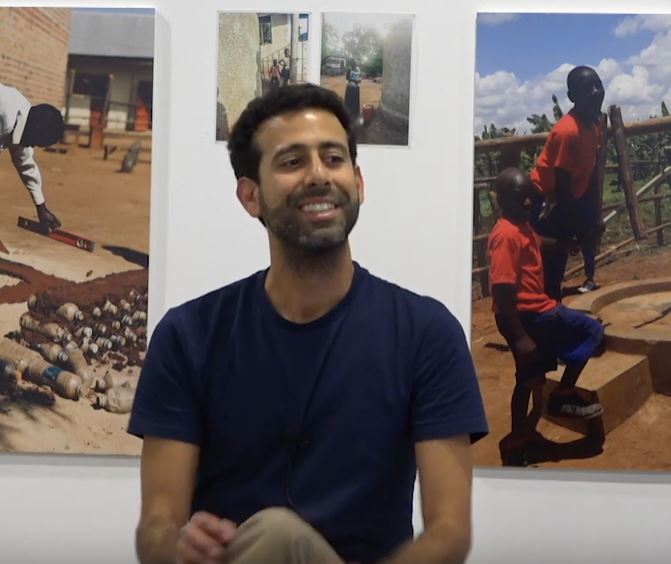 |
 |
|||
| איתי עמיר: עיצוב וטכנולוגיה בסטודיו פריים |
יואב שטרמן: איך לעצב את נעלי הריצה המהירות בעולם? |
 |
 |
 |
 |
 |
| רועי אמינוף: אלטרים – רוח וחומר מהדלת האחורית |
DESIGNTECH 2019: International Conference |
Ezra Ozery: Gamification of physical therapy in VR |
Ofer Berman: 3D Printing Coral Reefs |
Ezri Tarazi: 3D Printing Coral Reefs |
 |
 |
 |
 |
 |
| עזרי טרזי: פרדוקס לימודי העיצוב בטכניון |
קובי חכם: משיכת המשור היפני |
עפר ברמן: הדפסת אלמוגים מחימר |
טלי דוגמא: להרגיש צבע |
עזרא עוזרי: פיזיותרפיה כמשחק תלת מימד |
 |
 |
 |
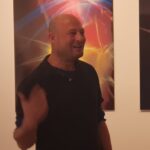 |
 |
| Dov Ganchrow: Contemporary Prehistoric Tool Design | Maya Ben David: Hybrid Botany | Liora Rosin: Design in the food world |
Noam Dover: Embracing the digital to the handmade |
Amit Zoran: Digital Gastronomy |
 |
 |
 |
 |
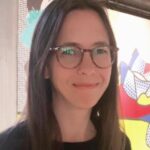 |
| Eran Lederman: Design for Disaster | Dana Benshalom Empathic Design and Soft Materials |
Shanit Adam: Craft with Soft Materials |
Hadar Shapira: Technological products for medicine and sport |
Maya Vinitsky: Constructive Responses To Climate Change |
Deepshikha
Ezri Tarazi
Yonatan Assouline
Tamar Yehezkel
Asaf Cohen
Philip Meier
David Behar
Yaniv Glozman
Francesca Toso
Michal Greenberg Abrahami
Alessia Buffagni
Kartikeya Date
Itay Niv
Liron Lavi Turkenich
Wendy Ju
Raz Elias
Tami Warshavski
Safi Hefetz
Marine Zorea
Merav Perez & Matan Zohar
Arielle Blonder & Shira Shoval
Ute Hilgers Yilmaz
Romi Mikulinsky & Alon Shikar
Bianca Herlo
Denisa Reshef Kera
Tom Shaked
Isabella Molloy
Prof. Kalevi “Eetu” Ekman
Prof. Kalevi “Eetu” Ekman
Director of Aalto Design Factory, Finland.
On 18 June, at 9:45am
Passion Based Learning
Bridging the gaps between engineering, design, and business was the starting point of new Aalto University at 2010. The Design Factory has served as Aalto’s university wide, experimental environment for such interdisciplinary activities and courses. In the presentation professor Ekman shares his thoughts about sustainable learning, importance of hands-on activities, testing and interacting with users. The word passion is very characteristic for many moments in such a learning process.
Prof. Barry Katz
Barry Katz
Professor, Industrial and Interaction Design, California College of the Arts
Consulting Professor, Design Group, Stanford University
On June 18 at 14:00
Redesigning Design
“The last 10 years have seen deeper and more far-ranging changes than any previous decade in human history: the smartphone, autonomous vehicles, cloud computing, blockchain, the maturing of AI, the commercialization of genomics… to name only the most prominent. Indeed, there is a growing consensus that as a species we have embarked upon a “Fourth Industrial Revolution,” the “Second Machine Age,” and any number of other markers of a brave new world. Do the theories and methods that designers have applied so successfully in the past provide a reliable guide to the future? This talk will explore the challenges facing designers in a period of unprecedented systemic change”
Prof. Dr. Gesche Joost
Professor for Design Research at the Berlin University of the Arts and Head of the Design Research Lab.
On 19 June 2019, at 9:30am
Digital Society: The role of Design in transformation
Digital technologies enable participation, access to knowledge and resources as well as groundbreaking innovation - but at the same time they are the root cause for the digital divide, global inequality as well as data monopolies. Therefore, Design plays an important role in shaping our digital future for the better or the worse. Between the vibrant innovation ecosystem of the Maker Culture and the Chinese Social Scoring System we have to navigate our design interventions. In my talk, I will show sample projects from alternative open source infrastructures, wearable computing and new forms of human computer interaction in order to highlight design perspectives on the digital society.
speakers-old
Barry Katz
Professor, Industrial and Interaction Design, California College of the Arts
Consulting Professor, Design Group, Stanford University
On June 18 at 14:00
Redesigning Design
“The last 10 years have seen deeper and more far-ranging changes than any previous decade in human history: the smartphone, autonomous vehicles, cloud computing, blockchain, the maturing of AI, the commercialization of genomics… to name only the most prominent. Indeed, there is a growing consensus that as a species we have embarked upon a “Fourth Industrial Revolution,” the “Second Machine Age,” and any number of other markers of a brave new world. Do the theories and methods that designers have applied so successfully in the past provide a reliable guide to the future? This talk will explore the challenges facing designers in a period of unprecedented systemic change”
Prof. Dr. Gesche Joost
Professor for Design Research at the Berlin University of the Arts and Head of the Design Research Lab.
On 19 June 2019, at 9:30am
Digital Society: The role of Design in transformation
Digital technologies enable participation, access to knowledge and resources as well as groundbreaking innovation – but at the same time they are the root cause for the digital divide, global inequality as well as data monopolies. Therefore, Design plays an important role in shaping our digital future for the better or the worse. Between the vibrant innovation ecosystem of the Maker Culture and the Chinese Social Scoring System we have to navigate our design interventions. In my talk, I will show sample projects from alternative open source infrastructures, wearable computing and new forms of human computer interaction in order to highlight design perspectives on the digital society.
Prof. Kalevi “Eetu” Ekman
Director of Aalto Design Factory, Finland.
On 18 June, at 9:45am
Passion Based Learning
Bridging the gaps between engineering, design, and business was the starting point of new Aalto University at 2010. The Design Factory has served as Aalto’s university wide, experimental environment for such interdisciplinary activities and courses. In the presentation professor Ekman shares his thoughts about sustainable learning, importance of hands-on activities, testing and interacting with users. The word passion is very characteristic for many moments in such a learning process.
Conference Gallery

The site is under construction, Sorry for the inconvenience.


The site is under construction, Sorry for the inconvenience.

Program objectives
The Master of Science in Industrial Design trains students in research, production and development in industrial design, media design, engineering design and related professions, with an emphasis on their close interface with technology and science, as applied to design thinking, hybrid design, consumer product design, interface design (UI and UX), design of IoT, design for complex challenges, design of medical devices, parametric design and artificial intelligence, virtual design, food design, social design, design of wearable technology, digital craft, transportation design, new materials design, design for the other 90%, biologic design, marine design, design and space, design and ecology, and futuristic design.
The program is based on a series of active design laboratories and is led by faculty members who are considered leading researchers and creators in their fields. The curriculum integrates advanced design knowledge, new technologies and scientific research, and draws on collaborations with the Engineering and Science faculties at the Technion.
The program incorporates stakeholders from the business, industrial and technology sectors, while forging opportunities for research, development and technological and social entrepreneurship.
The study program is attentive to the complex processes that influence us as individuals, communities and global networks, and strives to find solutions for the vital necessities that arise from tireless, future-oriented inquiry.
The program offers a Hub of various disciplines and areas of expertise, and cultivates research, development and entrepreneurial collaborations between practitioners from different fields.
Students will gain tools for collaborative work, management and methodology of innovation, and using design thinking as a theoretical and practical foundation.
The program is designed for students who work in design, engineering and related fields who are looking to expand their knowledge and professional competencies and integrate advanced design thinking into their practice, or those who wish to transition into the design professions.
Curriculum
The curriculum spans two years (or longer) in the research track, leading to a Master of Science in Industrial Design with a research thesis or project thesis. In both cases, students must earn 46 academic credits (not including prerequisites), divided as follows:
- Core courses – 17 credits
- Electives – 9 credits
- Research thesis of project thesis – 20 credits
Students who do not have a background in industrial design must complete 3 credits of prerequisite courses.
The curriculum consists of three clusters:
Introductory courses – including basic topics in industrial design. Students who already studied these topics during their bachelor’s degree will be exempted from these courses upon admission to the master’s program.
Core courses – the required coursework for all students accepted in the Master of Industrial Design program, in addition to the introductory courses.
Electives – students can choose courses from two categories: 1) electives from the Industrial Design Track, 2) electives from other Faculty Tracks.
Admissions requirements
The program is open to students with a bachelor’s degree in Industrial Design (a four-year degree from a recognized academic institution), or a bachelor’s degree (from a recognized academic institution) in related design fields such as visual communications, architecture, interior design, fashion design, jewelry design, ceramic design, textile design and fine arts, as well as graduates with a bachelor’s degree in engineering fields such as mechanical engineering, industrial engineering and management, computer engineering, food engineering, automotive and aerospace engineering, etc.
Admissions decisions will be made regarding each candidate based on their achievements and educational and professional background, and contingent on their acceptance by the Technion’s Graduate School. In general, students who are admitted have completed a bachelor’s degree with a grade point average of 80 or above. In rare cases, the admissions committee will consider candidates with a lower grade point average, but no lower than 75 (the cutoff for acceptance into the Technion’s Graduate School).
The admission decision will consider the following factors: declaration of intent, curriculum vitae, portfolio and university transcripts, which will be submitted to the program’s admissions committee. Suitable candidates will be invited for an interview. Students studying towards their bachelor’s degree may apply during their final year of studies but will only be invited for an interview upon fulfilling all prerequisite requirements.
Application
To apply, click here.
Contact
Keren Steger, Graduate Studies Coordinator | Amado Building 312
+972-4-8294285 | ar.g.ad@technion.ac.il
Programs
מטרת התוכנית
התוכנית לתואר מתקדם בעיצוב תעשייתי מיועדת להכשיר סטודנטים בתחומי היצירה, המחקר הפיתוח בעיצוב תעשייתי, עיצוב ומדיה ועיצוב והנדסה, והנגזרות המקצועיות מתוך הממשק שלו לטכנולוגיה ומדע בתחומים כמו: חשיבה עיצובית, (UX, UI) עיצוב היברידי, עיצוב מוצרי צריכה, עיצוב ממשקים עיצוב למתארי אתגר, עיצוב ,(IoT) עיצוב אובייקטים מרושתים מוצרים רפואיים, עיצוב מבוסס פרמטרים ואינטליגנציה מלאכותית, עיצוב וירטואלי, עיצוב מזון, עיצוב חברתי, עיצוב טכנולוגיה לבישה, קראפט דיגיטלי, עיצוב תחבורה, עיצוב בחומרים חדשים, עיצוב לעולם השלישי, עיצוב ביולוגי, עיצוב ימי, עיצוב וחלל, עיצוב ואקולוגיה ועיצוב עתידני.
מטרת התוכנית להעניק את הידע והכלים התיאורטיים, המקצועיים והמחקריים הדרושים לביצוע תהליכי שינוי ומענה לצרכי עתיד, ליצירת חדשנות פורצת דרך המיועדת לשימושם של בני אדם ברחבי העולם, תוך הקניית תארים מתקדמים (תואר שני ושלישי).
- התוכנית מציעה מסגרת של שתי שנות לימוד (ומעלה) לתואר שני בעיצוב תעשייתי בשלושה נתיבים: נתיב ללא תזה – מבוסס מקצוע מסוג פרויקט, נתיב עם תזה – מבוסס פרוייקט עיצובי-הנדסי ונתיב עם תזה תיאורטית.
- התוכנית מציעה מסגרת אקדמית יחידה בישראל ל- PhD לימודי דוקטורט בעיצוב
- תוכנית הלימודים בנויה על אוסף של מעבדות עיצוב פעילות, המבוססת על חברי סגל חוקרים ויוצרים המובילים בתחומם, המשלבים ידע מעמיק בתחום של עיצוב ומדיה ובממשק עם טכנולוגיה חדשה ומחקר במתודה מדעית, ובשילוב עם פקולטות להנדסה ומדע הקיימות בטכניון ומעבדות מחקר.
- התוכנית משלבת גופי פיתוח מהמגזר העסקי, התעשייתי והטכנולוגי, תוך גיבוש הזדמנויות בתחומי המחקר, הפיתוח והיזמות הטכנולוגית או החברתית. התוכנית קשובה לזרמים העמוקים של התהליכים המשפיעים עלינו כיחידים, כקהילה וכמארג גלובלי, ומתגייסת לצרכי עתיד חיוניים המתגלים בתהליכי חיפוש פתוחים לעתיד.
- התוכנית מהווה ‘צומת מחבר’ של מפגש בין תחומי התמחות ודיסציפלינות שונות, לגיבוש קבוצות מחקר, פיתוח ויזמות מתחומים שונים. התוכנית מעניקה כלים לעבודת צוות, לניהול עבודת צוות חדשנות, ולמתודולוגיה של חדשנות בתפישה של ׳חשיבה עיצובית׳ כתשתית תיאורטית ומעשית.
פרופ’ עזרי טרזי,
ראש מסלול בעיצוב תעשייתי, הפקולטה לארכיטקטורה ובינוי ערים, טכניון
לשאלות והרשמה:
קרן שטגר, מזכירת תארים מתקדמים
04-8294018 | arcgrd@technion.ac.il
LAB news
3D Printing Lab
Coming Soon…
Marine Design Lab
The Marine Design Lab was established by Prof. Ezri Tarazi, and Haim Parnas, both are marine research-divers at the InterUniversity Institute Eilat. Haim Parnas, as the managing director of this lab, initiated the first Design marine and extreme environment concept at the Industrial Design department at Bezalel Academy (as a former chair 2008-2016). He leads the Marine Design theme at the Design-Tech Lab and the weekly Design Tech Lab Colloquium on the topic.

Prof. Ezri Tarazi and Haim Parnas on a Helitrox rebreather dive at the IUI slope, Aug 2018.

Haim Parnas during Helitrox dives with the ISC Meg 2.7, and 50% Oxygen Deco BO, March 2019
The lab has diving equipment including an ISC TIBURON rebreather, that enables the researchers to dive in silence with no bubbles close to their research subjects.

Ophir Hameiri, the dive officer of the IUI lead the team, August 2018
The first paper of the lab is going to be published in ‘Design Journal’ after it was presented at the EAD 2019 at Dundee design conference by Prof. Ezri Tarazi.
Advisory Board
Technion Steering committee:

Prof. Avinoam Kolodny | The Faculty of Electrical Engineering, Technion

Prof. Avi Parush | The Faculty of Industrial Engineering & Management, Technion
Avishag Shemesh
Architect, PhD candidate
Supervisors:
Associate Professor Yasha (Jacob) Grobman, Faculty of Architecture and Town Planning, Technion
Associate Professor Moshe Bar, Brain Research Center, Bar Ilan University
Space and Human Perception – Examining the influence of space geometry on user’s physiological and mental reaction
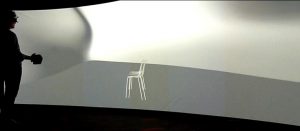 This research examines the connection between human perception and architectural space. Using new virtual reality techniques, physiological sensors and data analysis methods, we argue that emotional, cognitive and physiological reactions that are generated by various types of architectural space geometries can be empirically measured and quantified. This research is being conducted in collaboration with Prof. Moshe Bar, head of the Gonda Multidisciplinary Brain Research Center at Bar-Ilan University, and Prof. Ronen Talmon of the Technion’s Faculty of Electric Engineering. Early research results were published in conference proceedings (CAADRIA 2015). A journal paper with early results was published (2016) in the Architectural Science Review Journal.
This research examines the connection between human perception and architectural space. Using new virtual reality techniques, physiological sensors and data analysis methods, we argue that emotional, cognitive and physiological reactions that are generated by various types of architectural space geometries can be empirically measured and quantified. This research is being conducted in collaboration with Prof. Moshe Bar, head of the Gonda Multidisciplinary Brain Research Center at Bar-Ilan University, and Prof. Ronen Talmon of the Technion’s Faculty of Electric Engineering. Early research results were published in conference proceedings (CAADRIA 2015). A journal paper with early results was published (2016) in the Architectural Science Review Journal.
Keywords:
Parametric Design; Design Research; Virtual Design; Visual Perception; Architectural Space Geometry; Virtual Environment; Space Perception; Cognitive Neuroscience; Affective Response; Emotions, Aesthetic Judgment.
Human Perception of urban parks
 This research is conducted in a collaboration with The Human and Biodiversity Research Lab, headed by Prof. Assaf Shwartz. Studying human-environment relationships and well-being, we examine how the availability of green infrastructure impact experience of emotional connection to nature. This research setup was built and conducted in a virtual environment, created by the latest real-time engines and VR equipment in order to create immersive nature experiences.
This research is conducted in a collaboration with The Human and Biodiversity Research Lab, headed by Prof. Assaf Shwartz. Studying human-environment relationships and well-being, we examine how the availability of green infrastructure impact experience of emotional connection to nature. This research setup was built and conducted in a virtual environment, created by the latest real-time engines and VR equipment in order to create immersive nature experiences.
Keywords:
Parametric Design; Design Research; Virtual Design; Visual Perception; Virtual Environment; Nature Perception; Cognitive Neuroscience; Affective Response; Emotions, Aesthetic Judgment.
Relevant links:
https://www.researchgate.net/profile/Avishag_Shemesh
Email:
Avishagsh@campus.technion.ac.il
Tuesday, 18th June
| Hour | Speaker | Topic |
| 09:00-09:30 | Arrival, registration, refreshments | |
| 09:30-09:45 | Welcome greetings by the Dean of the Faculty of Architecture and Town Planning - Dean, Prof. Yasha Grobman and Conference Chair Prof. Ezri Tarazi |
|
| 09:45-10:30 | Plenum keynote lecture Prof. Kalevi Ekman (FI) |
Passion Based Learning |
| 10:30-11:30 | Plenum session - Design as Hacker - Chair: Prof. Aaron Sprecher | |
| 10:30-10:45 | Tom Shaked (IL) | Autonomous Robotic Stone Dressing |
| 10:45-11:00 | Isabella Molloy (NZ) | Designed Deposition |
| 11:00-11:15 | Denisa Reshef Kera (ES) | Lithopia: Engaging Stakeholders in Blockchain Futures |
| 11:15-11:30 | Offri Lotan (IL) | Re-Design the Modern Surfboard |
| 11:30:11:45 | Coffee Break | |
| 11:45-12:30 | Plenum session - Design as Protector - Chair: Haim Parnas | |
| 11:45-12:00 | Ofer Berman (IL) | Digital Tabular Coral |
| 12:00-12:15 | Bianca Herlo (DE) | Co-Designing Public and Political Deliberation |
| 12:15-12:30 | Romi Mikulinsky, Alon Shikar (IL) | D-Mars - Design Research Out of this World |
| 12:30-13:45 | Lunch Break | |
| 13:45-14:00 | Welcome greetings by the Dean of the Faculty of Architecture and Town Planning - Dean, Prof. Yasha Grobman |
|
| 14:00-14:45 | Plenum keynote lecture: Prof. Barry Katz (US) |
Redesigning Design |
| 14:45 - 15:45 | Plenum session - Design as Visualizer - Chair Prof. Dafna Fisher-Gewirtzman | |
| 14:45-15:00 | Ute Hilgers-Yilmaz (DE) | Complementary Alternative Medicine |
| 15:00-15:15 | Merav Perez, Matan Zohar (IL) | Exploring Parametric Typography in Augmented Reality |
| 15:15-15:30 | Arielle Blonder, Shira Shoval (IL) | Composite Design: 1+1=3 |
| 15:30-15:45 | Marine Zorea (IL\JP) | Sonic Mapping of Everyday Interactions at the Elderly Home |
| 15:45:16:00 | Coffee Break | |
| 16:00-17:00 | Plenum session - Design as Leader - Chair Prof. Gabriela Goldschmidt | |
| 16:00-16:15 | Safi Hefetz (IL) | The Designer, As a Technology Strategist |
| 16:15-16:30 | Tami Warshavski (IL) | The Future is Creative |
| 16:30-16:45 | Raz Elias (IL) | Flex AR Case |
| 16:45-17:00 | Wendy Ju (US) | Addressing Cross-Cultural Differences in Design |
Wednesday, 19th June
| Hour | Speaker | Topic |
| 09:00-09:30 | Gathering | |
| 9:30-10:15 | Plenum keynote lecture: Prof. Gesche Joost (DE) | Digital Society: The Role of Design in Transformation |
| 10:15-11:15 | Plenum session - Design as Visualizer - Chair: Dr. David Behar | |
| 10:15:10:30 | Liron Lavi Turkenich (IL) | Aravrit: One Script, Two Languages |
| 10:30-10:45 | Itay Niv (IL\US) | Reading Children’s Books with Semantic Similarity |
| 10:45-11:00 | Avishag Shemesh (IL) | How does Geometry of Space Affect our Emotions |
| 11:00-11:15 | Kartikeya Date (IN\IL) | An Approach to Designing Archives in The Digital Age |
| 11:15-11:30 | Coffee Break | |
| 11:30-12:45 | Plenum session - Design as Healer - Chair: Dr. Daniel Metcalfe | |
| 11:30-11:45 | Noam Attias (IL) | Mycelium-based Bio-composites in Industrial Design |
| 11:45:-12:00 | Alessia Buffagni (IT) | Smart Clothing for Fall Prevention in Older Adults |
| 12:00-12:15 | Alexander Geht (IL) | Anatomic Mass Customization and Assistive Technology |
| 12:15-12:30 | Michal Greenberg Abrahami (IL) | Sensory-Diagnostic Tool for Multiple Sclerosis Patients |
| 12:30-12:45 | Francesca Toso (IT) | Re-thinking the Design of Rehabilitative Devices |
| 12:45-13:45 | Lunch Break | |
| 13:45-14:45 | Plenum session - Design as Healer - Chair: Prof. Efrat Eizenberg | |
| 13:45-14:00 | Yaniv Glozman (IL) | Is the iPhone a Work of Art? |
| 14:00-14:15 | Ezra Ozery (IL) | The Gamification of Physical Therapy in Virtual Reality |
| 14:15-14:30 | Deepshikha (IN) | Digital Crafts for Non-Verbal Self-Expression |
| 14:30-14:45 | Ezri Tarazi (IL) | Prehospital Digital Wearable Combat Casualty System |
| 14:45-15:00 | Yonatan Assouline (IL) | Designing Medical Vibrator |
| 15:00-15:15 | Coffee Break | |
| 15:15 - 16:00 | Plenum session - Design as Leader - Chair Dr. David Goss | |
| 15:15-15:30 | Tamar Yehezkel (IL) | Knowledge Sharing: Empowering Future Experts |
| 15:30-15:45 | Asaf Cohen (IL) | Video-based Emergency Communication Protocol |
| 15:45-16:00 | Philip Meier (DE) | Value Capture Mechanisms in Platform-Orchestrated Networks |
| 16:0-16:15 | David Behar (IL) | Community Surveillance and Mass Surveillance |
| 16:15-16:30 | Closing Remarks Chair Prof. Ezri Tarazi (IL) |
The Paradox of Design Studies in an Institute of Technology |
General Information
General Information – Venue/Transportation/lunch:
Venue –
Technion Campus, Haifa
For Technion map click here
Parking –
Parking will be available inside the Technion.
Upon your arrival to the Technion, specify at the gates that your are arriving to the “Design Tech” conference.
Transportation –
For directions to the Technion by car click here
For public transportation
Transportation from the train station to the Technion (and back) at an additional charge.
Accommodation:
Please follow the link to see recommended hotels throughout Haifa.
* Accommodation at the Technion is not available .
Dan Panorama Hotel –
You can book a room at the Dan Panorama Hotel through the conference secretariat: Meitalg@technion.ac.il
The Dan Panorama Hotel, rising twenty-one stories high on Mount Carmel, offers you a choice of spectacular views: one side commands a splendid panorama of the city of Haifa, Mount Carmel and the sea. Another vantage point presents the huge curve of Haifa Bay and the endless stretches of Israel’s beautiful Mediterranean coastline. Dan Panorama Hotel is contemporary in style with spacious public areas and guestrooms featuring floor to ceiling windows. The hotel adjoins the Panorama Mall and is close by the outdoor coffee bars and stores of the bustling Carmel Center, a favorite gathering place for visitors and locals.
Room Size: 21-25 m²
Room Facilities: Air conditioning, Satellite channels, Cable channels, Refrigerator, Free Wi-Fi, Safe, Coffee & Tea facilities.

 Let’s see what happens in Haifa …
Let’s see what happens in Haifa …
2019 Conference
Anastasia Kolomiets
MDes student
Supervisors
Professor Ezri Tarazi; Assistant Professor Yasha Grobman.
Bio
Anastasia is an MDes student, working on additive manufacturing for industrial design application. During the graduate studies, she has obtained a high level of competence in the Industrial design, materials and marketing aspects; development and evaluation of efficiency of new and existing technologies, design of new technological production chains including an expertise in state-of-the-art in metals and polymers 3D-Printing.
Anastasia holds a MA in Graphic Design from the Ural State Architecture and Art Academy: Ekaterinburg, Russia. The MA graduate project: Graphic automobile styling as an element of product promotion, on the example of “AVTOVAZ” production. The thesis was devoted to automotive graphics as a marketing tool.
She also has a BA degree in theatre decoration art from Ekaterinburg Art College named after Shadr. Studying in Art School gave to Anastasia the great academic training in drawing and painting. These studies still support her work and in her study. She also have such studies as technique of a scene, bread boarding, working with different materials and theater design. During her studying in college, she worked in the theater, applying her theoretical knowledge in practice.
In her MDes research, Anastasia aims to propose approach of application of metal additive manufacturing for new products, by exploring all steps of the design and production of newly manufactured 3D-printed Titanium flute.
Application of Titanium Additive Manufacturing for Industrial Design Development on example of 3D-printed Ti-Flute.
The research aims to explain the benefits of titanium additive manufacturing (Ti-AM) technology and material itself for the industrial design of new products. Up to now, AM application was limited to prototyping. Using Ti-AM and superior mechanical properties of Titanium, the final product can be manufactured. Example of the Ti-AM potential was shown by manufacturing of 3D-printed flute confirming that it can be used as a fabrication technique for musical instruments.
According to performed systematic review, it was found that there were several previous attempts to apply 3D-printing for producing of a flute. However, all of them used polymer-based techniques. Metals are beneficial for wind instruments. Moreover, in Ti-AM, you can produce a single part with internal complex structure. Alternatively, you can produce the component part and work on a proper assembling. Future work will be concentrated on the comprehensive analysis of musical/acoustic properties, and ways of flute’s design-concept development.
Keywords
Industrial Design; Additive Manufacturing; 3D-printing, Titanium, Graphic Design
Relevant links
https://scholar.google.co.il/citations?user=8n9XDBkAAAAJ&hl=en
https://www.researchgate.net/profile/Anastasia_Kolomiets
https://www.linkedin.com/in/anastasia-kolomiets-98a346124/
Publications
1. V. Popov Jr., G. Muller-Kamskii, A. Kovalevsky, G. Dzhenzhera, E. Strokin, A. Kolomiets, J. Ramon. Design and 3D-printing of titanium bone implants: brief review of approach and clinical cases, Biomed. Eng. Lett. (2018) 8: 337. https://doi.org/10.1007/s13534-018-0080-5
2. Kolomiets A., Popov V., Strokin E., Muller G., Kovalevsky A. Benefits of Additive Manufacturing for Industrial Design Development. Trends, Limitations and Applications. Global Journal of Researches in Engineering: J. 18(2), (2018).
3. Kamsky G.V., Kolomiets A.A., Popov V.V., Review of the main producers of 3D-machines for metals, characteristics of the machines, and directions of development. Research Journal of International Studies, №8(50) (2016).
4. Kolomiets A.A. et.al. Our future in additive manufacturing. Science without borders, conference-paper. May 2016
Interest
• Additive manufacturing and 3D-printing
• Titanium alloys for musical instruments.
• Industrial Design, Graphic Design, Design Thinking.
• Art techniques: oil painting, airbrushing, drawing
Email
artkolomiets@gmail.com
Shlomit Bauman
PHD Candidate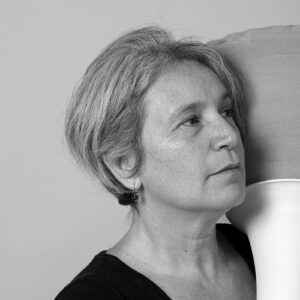
Supervisors
Associate Professor, Noemi Bitterman
Bio
Senior Lecturer, HIT – Industrial Design Department
Head Curator, Benyamini Contemporary Ceramics Center
Between Design and Technology: Material-Integrated sensing & Interactive Environment VS Traditional Environments, (User centered approach)
We are in a period of transition between technologies that are constantly changing. New technologies such as nanotechnology, synthetic biology and their combinations have been making a tremendous change which impacts the material aspect in everyday life. Some examples are the growing assimilation of digital media in objects, the development of new nano technological materials and the development of bio-synthetic materials. Objects and products are part of a technology-embedded environment, and often one object has many uses.
The term ‘interactive environments’ refers to ‘environments’ in the sense of ‘material and technological environments’ and ‘interactivity’ in the sense of ‘made of smart materials’. In contrast to the ‘interactive environments’, this study examines them VS ‘traditional environments’ – meaning ‘familiar and raw material environments and technologies’.
The new ‘interactive environments’, as opposed to the ‘traditional’ familiar to us, raise many questions: What does this change mean? At what pace should it be done? What impact do new technologies have on our quality of life? What strategies should be used in designing with interactive materials and interactive technologies? What will change in design? How can you characterize it? How do I create a user interface for a changing object? What will be the changes in the processing of traditional materials? What are the advantages and disadvantages of designing ‘traditional’ or ‘interactive’ environments?
According to those questions – this research is checking which fields (interactive or traditional) are desirable for users? How do users respond to an ‘interactive’ or ‘traditional’ product? How will it be used? What are their preferences? How do they feel about using it? Is it easy to use? What is the attitude of users to the interactive product versus the traditional product? In addition, the research examines changes in the role of the designer, due to the integration of ‘interactive environments’ alongside ‘traditional’ ones.
Keywords
Technology, sensors, Interactive Environment, materials, User
Interest
Material Culture, Ceramics, Research, Education
Email
shlomitbm62@gmail.com
Registration
Registration is open
| Student* – rate | Participant – rate |
| 105 NIS ($29) | 210 NIS ($58) |
Prices including transportation from Hof Hacarmel train station to the Technion (and back):
| Student* – rate | Participant – rate |
| 135 NIS ($37.5) | 245 NIS ($68) |
* The reduced rates apply for students & pensioners.
**The payment for the conference is at the rate of NIS. The conversion to the local rate will be done by your credit card company / bank according to their terms.
*** The price includes 2 coffee breaks,2 lunches for the 2 days of the conference and Beer and snacks
Marnina Herrmann
Doctoral Candidate
Supervisors
Prof. Emeritus Gabriela Goldschmidt, Prof. Ella Miron-Spektor (INSEAD, Fontainebleau France)
Bio
Marnina Herrmann has a Bachelors of Design in Visual Communication Design from York University in Toronto, Canada. Upon graduating, she moved from Toronto to Haifa to attend Technion where she completed her MSc in Industrial Design. As a masters student Marnina researched how ‘design thinking’ was defined and described by the design and business communities, trying to find the common ground between the two groups. After graduating Marnina worked as a graphic designer in the medical device industry before returning to Technion to do a PhD. Marnina is interested in the design process, the cognitive processes a designer employs while working, and how non-designers can learn from designers how to be more creative and effective problem solvers. Her dissertation focuses on the constraint – creativity relationship. She is also interested in psychological time perspective and how one’s relationship to time affects performance in a multicultural setting.
The Dynamic Relationship Between Constraints and Creativity
My research explores the question of whether resource constraints that are introduced at different times in the design process will enhance or inhibit creativity by forcing one to search for original ideas within an increasingly narrowing design space. Current research discussing the constraints-creativity relationship almost exclusively studies the effects of constraints that are introduced at the beginning of the creative process. This does not reflect the dynamic nature of the design process and the fact that in the real world, project constraints and requirements are not always available prior to commencing work. This is problematic because the cognitive processes we employ throughout the design process change as we work our way towards a solution. Additionally, as research from other domains, such as fixation and behavioural economics demonstrate, our relationship to our solution changes as we get more entrenched in the problem solving process, making the introduction of new constraints an interesting phenomenon to study. The ability to isolate the optimal time to introduce constraints into the creative process may help explain some of the mixed findings in the research, as well as help us structure projects to optimize creativity.
The research employed controlled laboratory experiments in order to study the effect of constraint timing on creativity. The first study was an ideation task, where participants were asked to use various “parts” to design a series of toys. The experiment looked at whether those presented with no constraints, those who had the constraints from the start, or those who got the constraints midway through the process were more creative. Participants in the no-constraint group had the most creative results. A follow-up study involved a two-part design task that included an ideation phase followed by a development phase. Constraints were given to participants prior to starting the design task, midway through the ideation phase or midway through the development phase. Creativity was highest when constraints were given prior to the ideation phase and was lowest when constraints were given during the ideation phase. When constraints were given during the development phase creativity was not affected. We also examined various boundary conditions such as fluency and paradox mindsets.
Keywords
Creativity, constraints, design methods, organizational behavior, paradox mindset
Publications
Herrmann, M., & Goldschmidt, G. (2013). Thinking About Design Thinking: A Comparative Study of Design and Business Texts. In ICoRD’13 Global Product Development (pp. 29–40).
Herrmann, M., Goldschmidt, G., & Miron-Spektor, E. (2018). The Ins and Outs of the Constraint-Creativity Relationship. In DS 89: Proceedings of The Fifth International Conference on Design Creativity (pp. 160-167).
Interest
Creativity, Design Methods, Design Thinking, Organizational Psychology, Psychological Time Perspective, Motivational Psychology
Email
marnina@technion.ac.il
Lior Arbel
PhD Candidate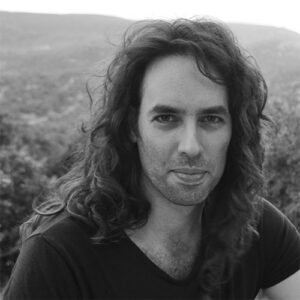
Supervisors:
Yoav Schechner, Viterbi Faculty of Electrical Engineering, Technion, Israel
Noam Amir – Department of Communication Disorders, Sackler Faculty of Medicine, Tel-Aviv University
Active Wineglass Musical Instruments
My research concerns the development of a novel active musical instrument, the Symbaline. My aim was to develop a musical instrument which uses wine glasses as sympathetic radiators of string sounds, much like the Sitar uses two sets of strings. Initially, acoustical methods of coupling strings and wine glasses were developed, and prototypes of musical instruments based on these methods were suggested. Later, the Symbaline was developed using electromagnets to generate wine glass sounds using amplified signals produced by a guitar. The Symbaline sound space was then explored using various input instruments, custom virtual instruments and audio effects. I’m currently developing electromechanical effects to enrich the Symbaline’s sound.
Keywords:
Active instruments; Musical instruments; Sympathetic resonance; Symbaline; Wine glass music;
Publications:
https://www.sciencedirect.com/science/article/abs/pii/S0003682X17302797
https://www.tandfonline.com/doi/abs/10.1080/09298215.2018.1465983
Interest:
Musical instruments, electric guitars, sympathetic instruments, active instruments, wine glass music, signal processing (mainly musical signals), signal integrity, waves, music.
Email:
lior.e.arbel@gmail.com
Ronen Eidelman
 PhD Candidate
PhD Candidate
Supervisors
Dr. David Behar, Professor Karel Martens
Bio
Ronen Eidelman is an designer, writer, and researcher based in Jerusalem. A Ph.D. candidate at Faculty of Architecture and Town Planning at the Technion – Israel Institute of Technology, where he also a member of MUNDI (Media Urban New Design Interactions) Lab, Eidelman received an MFA in Public Art and New Artistic Strategies from Bauhaus University in Weimar, Germany, and holds a bachelor’s degree in visual communications.
Ronen is Co-founder and co-editor of Erev-Rav, the leading art and culture magazine in Hebrew. founded and edited several art and political journals/magazines as well as publishing books. Makes a living as a freelance graphic designer mostly serving non-profit sector. Produced and created numerous events and projects linking art, culture and grassroots politics and participated in exhibitions and festivals worldwide. Ronen likes hats and enjoys wearing many kinds.
Research: Community Surveillance in the Public Sphere
The powerful actors involved in surveillance are still governments and corporations, but the possibilities of people performing surveillance on others, as well as being observed themselves (by others), has deeply extended.
In my research, I explore how the control over the surveillance systems can be allocated to communities. I do not only How can surveillance technology be used not to control and/or discipline people; but how communities can use surveillance for their own needs and benefit.
I’m studying surveillance in West Jerusalem Jewish neighborhood public spaces, we I find a paradoxical picture. Both from the authorities controlling the systems and the residents living under them i observed mixed and ambiguous reactions and behaviors. From acceptance, and a desire to expand the system, to uneasiness and not trusting the system, to resident-led participatory surveillance activities on themselves, park visitors, and surveillance of park-related authorities and municipal workers.
These findings are leading to a participatory action research, working with the community to design tools and systems that make the public space not only safer and welcoming, but also more opened and democratic.
Keywords
Surveillance, participatory design, public sphere, surveillance society, cctv, security
Publications
– “Personal Security”, Mafteakh: Lexical Review of Political Thought, 2011 3: In Hebrew
– Plan B for Zionism “Medinat Weimar”, Dissonant Memories Fragmented Present. Charlotte Misselwitz, Cornelia Siebeck (eds.) Berlin, Transcript Books, 2009.
– Artist who love to hate the wall, art practices and the security barrier in Palestine, Theorizing Cultural Activism: Practices, Dilemmas and Potentialities. “Thamyris/Intersecting: Place, Sex, Race”, New York and Amsterdam: Rodopi, 2009
– Public Response to Works of Art, Learning mind : experience into art. Mary Jane Jacob; Jacquelynn Baas (eds.) Berkley, University of California Press, Fall 2009
– “Pipi, Poo, Hitler, Auschwitz, Shoa and Nazi symbolism in contemporary Israeli Art “ Wonderyears – New Reflections on the Shoah in Israel, NGBK, Berlin.
– “On the Possibility of Criticism Today“ Bezalel Journal of Visual and Material Culture, Issue # 2, June 2015, Jerusalem.
– Co-Editor in chief – Erev Rav – art and cultural journal www.erev-rav.com
Interest
Urban Interaction Design, Surveillance, Art in public space, the public sphere, activism, participation
Email
ronene@gmail.com
M.Sc Students
Theme
Design-Tech 2019
International Conference on Design and Technology, June 18-19, 2019
Technion, Haifa, Israel
The Design-Tech 2019 conference is a new and unique platform for researchers and practitioners in the field of design initiated to showcase their work. Being held for the first time at the Technion, Israel Institute of Technology, the conference will enable attendees to visit one of the most vibrant start-up eco-systems in the world.
While design has always been an integral part of the technological development process, in recent years it has been gaining a more significant role. Today, a technological process that is not based on design fundamentals is almost unheard of.
The design aspects of a technological R&D process raise unique questions and concerns which are critical to the success and viability of the technology itself. Design is no longer just a “nice to have,” beauty and taste issue. Rather, it is a strategic resource for successful technology companies; it is now seen as one of the key elements required for differentiation and for technology expansion and adoption. Design enhances technology and assists in making it accessible.
Yet, since design has become a primary lens through which we observe and experience our surroundings, it has also become responsible for the negative outcomes of technology. The Design-Tech conference wishes to create a central platform for discussing such topics under the title of the role of design and technology in multi-faceted crisis.
Design-Tech 2019 invites designers, researchers, educators and students to be part of the conference by actively participating in the various conference tracks. Design-Tech welcomes the submission of both academic research papers and practice-based case studies. Design-Tech 2019 is an international conference and all submissions will be reviewed by an international panel of experts.
Abstract Submission Deadline: March 25, 2019
Anastasia Kolmintz
Rachel Getz Solomon
Doctoral candidate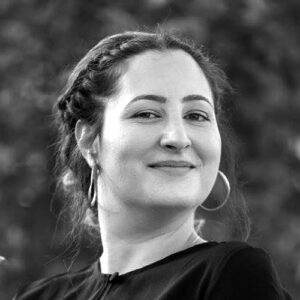
Supervisors
Prof Ezri Tarazi, Prof Tamar Elor
Bio
Rachel Gets Salomon is a Doctoral candidate in the Design Department of the Architecture Faculty at the Technion Israel Institute of Technology. She has a Research M.A. in Cultur Studies from The Open University, Tel-Aviv Campus, summa cum laude, and B.F.A. in Art and Design from the Jewelry and Fashion Design Department of the Bezalel Academy of Art and Design, Jerusalem. Rachel is a Curator of fashion and identity exhibitions, and the curator of the International Stone Sculpting Symposium in Israel. As of 2015 she is a member of the Experimental Art and Architecture Lab in the Technion. Rachel is teaching courses in Basic Design A, Basic Design B, at the Architecture Faculty, the Technion
Research: Dressed for War – the Metamorphosis of the Military Skirt
This research project examine the relationship between form, material, and self experience through a specifically designed object – the skirt. Over the course of history, the skirt has become a feminine item. In pre-modern fashion as well as in the modern one, except for ethnic and folkloristic appearances such as the Scottish skirt, a proposal for a masculine skirt did not exist. Since the end of the last century, postmodern fashion has formulated several such proposals, although they have not yet become widespread and accepted. The transformation of the skirt into a feminine clothing item has led to the skirt being perceived to be associated with femininity to the point of turning it into a metonymy for femininity. In the cultural sphere, the skirt is located in different fields of gender-related reference, which also relate to ethnic, sectoral and personal characteristics.
The skirt is one of the most ancient, varied and long-lived forms of clothing. Throughout history, skirts were an item of clothing that involved masculinity and its demonstration. They exposed the male leg to display the body part that symbolizes masculine bravery. In ancient Egypt, the men wore short skirts known as Shendyt, that was adopted into ancient Egyptian culture from the clothing repertoire of the ancient hunter, for whom the skirt was the ultimate garment, that allowed maximum freedom of movement. The skirt was the exclusive and most common item of masculine dress and was excluded from female attire.
In the early Middle Ages in Europe, warriors from all combat units wore skirts. For some reasons, in the late Middle Ages, the skirt gradually entered the female wardrobe and became an important item in it. Ultimately, the skirt transformed from the ideal item for war, to a “feminine” item that asserts inability to fight and marks the defamiliarization and exclusion from the combat units. Its design changed from a liberating comfortable clothing to a movement-limiting object that attests to the person wearing it as inability to fight and even asserts her confinement to specific and “feminine” roles within the military establishment. The research examine the metamorphosis of the skirt – from the ultimate clothing item for war, to a “feminine” item of clothing that asserts the inability to fight and marks the defamiliarization and exclusion from the combat units. This is how it appears in popular representations of women fighters such as Wonder Woman, Catwoman, Scarlet Witch, Black Widow, Electra, Jessica Jones, Captain Marvel and more, as they are depicted in pants or underpants, but not in skirts.
Keywords
skirt, military skirt, warriors, women in the army, medieval dress, women’s wear, Wonder Woman
Email
rachsal@gmail.com
OPENING REMARKS
Welcome greetings by the Dean of the Faculty of Architecture and Town Planning –
Dean, Prof. Yasha Grobman and Conference Chair Prof. Ezri Tarazi
CLOSING REMARKS
Chair Prof. Ezri Tarazi
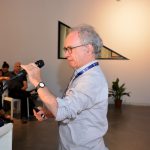 |
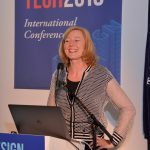 |
 |
||
| Barry Katz: Redesigning Design | Gesche Joost: Digital Society: The role of Design in transformation | Kalevi Ekman: Passion Based Learning |
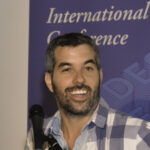 |
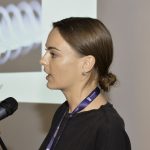 |
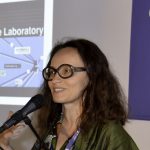 |
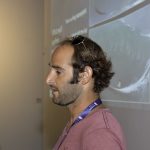 |
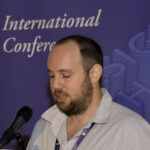 |
| Tom Shaked: Autonomous Robotic Stone Dressing | Isabella Molloy: Designed Deposition | Denisa Reshef Kera: Lithopia: Engaging Stakeholders in Blockchain Futures | Offri Lotan: Re-Design the Modern Surfboard | Ofer Berman: Digital Tabular Coral |
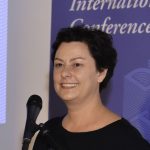 |
 |
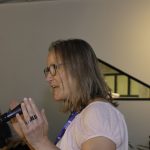 |
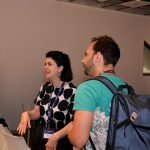 |
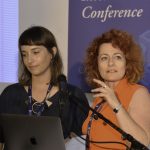 |
| Bianca Herlo: Co-Designing Public and Political Deliberation | Romi Mikulinsky, Alon Shikar: D-Mars - Design Research Out of this World | Ute Hilgers-Yilmaz: Complementary Alternative Medicine | Merav Perez, Matan Zohar: Exploring Parametric Typography in Augmented Reality | Arielle Blonder, Shira Shoval: Composite Design: 1+1=3 |
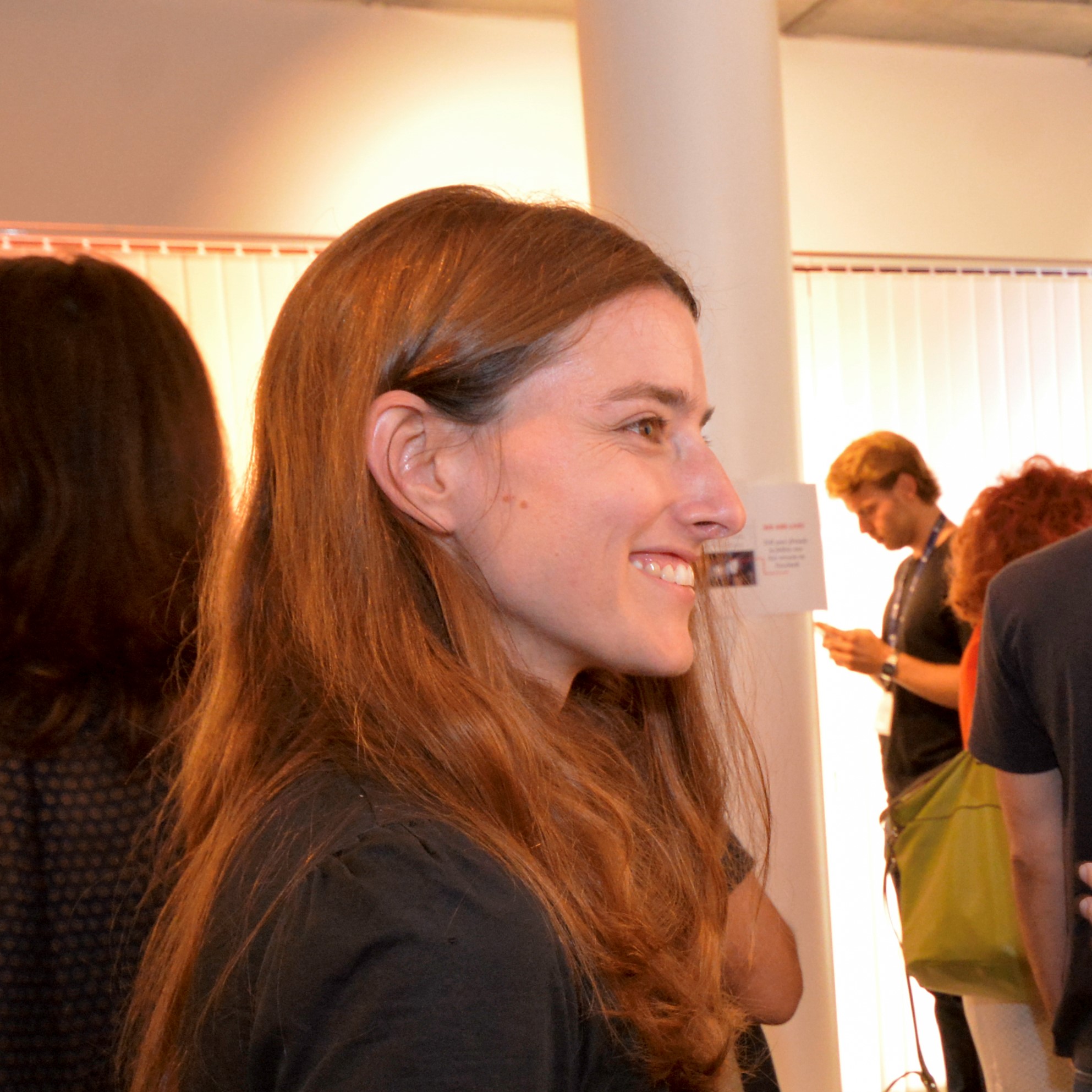 |
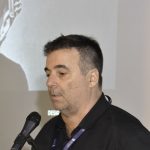 |
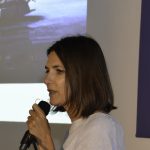 |
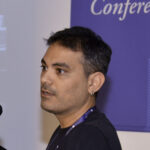 |
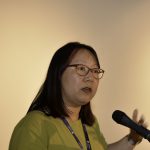 |
| Marine Zorea: Sonic Mapping of Everyday Interactions at the Elderly Home | Safi Hefetz: The Designer, as a Technology Strategist | Tami Warshavski: The Future is Creative | Raz Elias: Flex AR Case | Wendy Ju: Addressing Cross-Cultural Differences in Design |
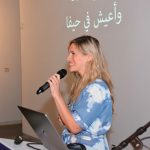 |
 |
 |
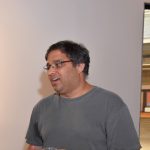 |
 |
| Liron Lavi Turkenich: Aravrit: One Script, Two Languages | Itay Niv: Talking to Children’s Books with Semantic Similarity | Avishag Shemesh: How does Geometry of Space Affect our Emotions | Kartikeya Date: An Approach to Designing Archives in The Digital Age | Alessia Buffagni: Smart Clothing for Fall Prevention in Older Adults |
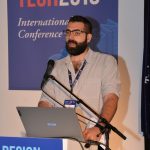 |
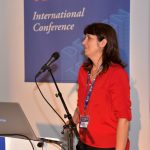 |
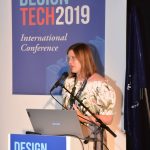 |
 |
 |
| Alexander Geht: Anatomic Mass Customization and Assistive Technology | Michal Greenberg Abrahami: Sensory-Diagnostic Tool for Multiple Sclerosis Patients | Francesca Toso: Re-thinking the Design of Rehabilitative Devices | Yaniv Glozman: Is the iPhone a Work of Art? | Ezra Ozery: The Gamification of Physical Therapy in Virtual Reality |
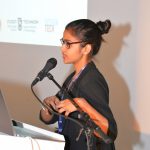 |
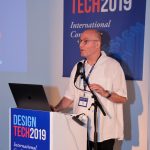 |
 |
 |
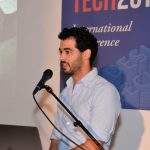 |
| Deepshikha: Digital Crafts for Non-Verbal Self-Expression | Ezri Tarazi: Prehospital Digital Wearable Combat Casualty System | Yonatan Assouline: Designing Medical Vibrator | Tamar Yehezkel: Knowledge Sharing: Empowering Future Experts | Asaf Cohen: Video-based Emergency Communication Protocol |
 |
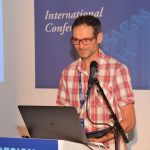 |
|||
| Philip Meier: Value Capture Mechanisms in Platform-Orchestrated Networks | David Behar: Community Surveillance and Mass Surveillance |
Offri Lotan
Masters degree program
Supervisors
Prof Ezri Tarzi, Prof Gil Yosslevski
Bio
Offri Lotan is a Masters student at the Technion Institute of Technology Israel. He received his B.A from Bezalel Academy of Arts and Design.
Works as an industrial designer in the field of medical technology development.
In addition to industrial design, Offri is a commercial skipper with thousands of miles of experience and an Atlantic crossing.
Offri’s research usually connects industrial design or design thinking methods with another research field like biology or engineering. His recent research is a collaboration between the department of Architecture and the department of Aerodynamics. His current resides in Haifa Israel where you can find him at the lab or surfing in the sea.
A bridge between shape and context, re-designing the shape of the modern surfboard
Modern surfboard design is still based on an experience of a gifted craftsman. There is no mathematical theory that can predict the feel of a surfboard under a surfer’s foot. In our research we suggest to make a small step toward rationalizing surfboard design by correlating measurable merits of performance (as forces and moments acting on the board in linear and curvilinear motion), with surfboards shape parameters (as rocker, planform and thickness) and with surfers’ subjective feelings on a wave.
The research will use a quantitative research methodology, a few representative surfboards will be measured, and tested both in the towing tank and at sea. Testing in the towing tank will furnish the hydrodynamic forces and moments generated by a board as a function of its orientation relative to the direction of motion. Testing at sea by a group of experienced surfers will furnish the grades on the ability of the boards to perform well defined tasks (e.g. accelerate to catch wave, keep speed, top and bottom turns). Grading of the subjective opinion of the surfers will be done using an equivalent of the Cooper-Harper scale extensively used in flight testing to grade the subjective opinion of pilots on the ability of an aircraft to perform various tasks (as landing, air-refueling, course-keeping, etc.).
Hasake – 3D printed sup
Generative design for 3D printed SUP in order to reduce weight and customize working force loads according to specific customer demands.
Video: https://www.youtube.com/watch?v=SjGG81IOI5c&feature=youtu.be

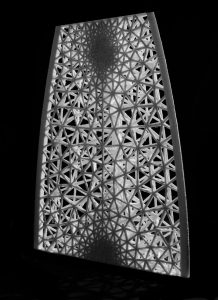
3D printed artificial reef
Testing fish behavior in artificial corals. An active approach to help preserve and maintain reefs, the study aims to show how the changes in geometric shapes of corals attract fish.
Keywords
Surfboard, design, Cooper Harped, hydrodynamics
Interest
scuba diving, kite/windsurfing, sailing, DIY building.
Email
lotanoffri@gmail.com
Ezra Ozery
Supervisors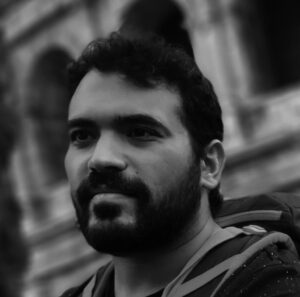
Ezri Tarazi
Bio
Architecture graduate from the Technion, with 8 years of experience of teaching a variety of 2d and 3d software to students and enterprises.
I am working with advanced 3D manufacturing machines and techniques to design and execute large scale designs.
My final project for architecture was “Sabres Hospital” which was a generative hospital design to fit disaster struck areas and that can be built with standard construction materials.
currently studying a master’s degree in the Technion, Industrial design with a thesis in “Gamification of the rehabilitation process through Virtual Reality”.
I mix my master’s degree with VR gaming for physical therapy and complex generative 3D Printing.
The Gamification of Physical Therapy in Virtual Reality
Improving, tracking and increase in efficiency of physical therapy rehabilitation, using Gamification of the rehabilitation process through VR
Air Castle Therapy is a virtual reality (VR) system which consists of personalized games which are tailored by the physical therapist for the specific needs of the patient. The goal of this product is to gamify the physical therapy process which ranges from beginners training in the VR environment to active therapeutic use. The goal of gamifying the physical therapy process is to improve commitment to the regimen and shorten the therapeutic process due to increased compliance. The gamifying aspect of my product includes games in VR, the first case study game is one that patients must move a ring through a personalized two-dimensional maze in a three-dimensional environment.
The target population of Air Castle Therapy are individuals aged 20-40 who have difficulties with core balance injuries which include but are not limited to; spinal injuries, orthopedic injuries damage due to stroke, scoliosis, and more. The focus of the first case study game is Posture rehabilitation.
Posture rehabilitation is a field of physical therapy with the aim of improving muscular and skeletal functioning due to posture problems caused by sickness, injury or genetics. To date, these conditions are treated with conventional physical therapy with home assignments.
My system solves problems presented by conventional therapy methods, which can often be boring or tedious. We provide a solution to boredom by turning the process into a game or challenge. Often conventional methods also suffer from problems in commitment and motivation, we contend that our product increases both commitment and motivation through its use of games and by making it convenient to continue therapy from home.
The system provides its users with a facilitating and interesting rehabilitation process which can be conducted from the comforts of your own home.
Keywords
VR, Medical, physical therapy, Gamification, Rehabilitation
Relevant links
Email
ezraozery@gmail.com
Ofer Berman
PhD Candidate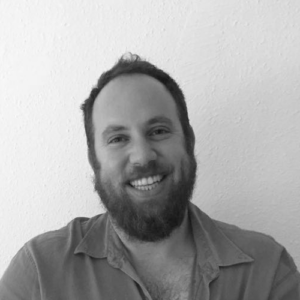
Supervisors
Prof. Ezri Terezi , Prof. Nadav Shashar
Digital Tabular Coral – Freeform clay deposition in the service of marine biology
This research investigates an approach to designing and producing an artificial tabular coral by means of freeform 3D printing using natural clay. Most 3D printed artificial corals are formed by scanning natural corals and printing them with conventional layer-by-layer methods, often defined as slicing a model. Here, a freeform clay deposition method is used, which exploits the design opportunities of creating new morphologies of artificial corals, influenced largely by an industrial design perspective. The system allows the designer complete control of the pattern and deposition of the material in relation to the parallel natural coral. This method of designing crafty corals requires full understanding and control of both marine biology and machinery to achieve the desired functionality and aesthetics.
Keywords
Reef, Artificial, Coral, clay, 3d printing
Email
ofer.berman@campus.technion.ac.il
Yonatan Ben-Haim
Noam Attias
PhD student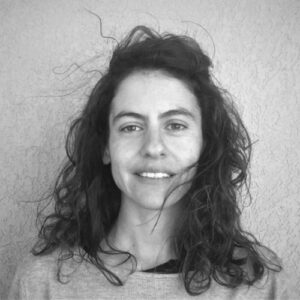
Supervisors
Assistant Professor Yasha Grobman ; Professor Ezri Tarazi (Faculty of Architecture and town planning at the Thechnion) ; Professor Ofer Danai (Northern R&D, MIGAL, Israel).
Bio
Noam Attias is a PhD candidate, fusing biotechnology and industrial design. She holds a B.Des in Inclusive Industrial design from the Hadassah Academic College, Jerusalem, graduated with honors. Her graduate project was presented at Ars Electronica exhibition, Linz, Austria 2013.
During her studies, Noam developed a growing interest in the fabrication processes of biological materials and its utilization possibilities. After a short period at WCDIB design studio, she decided to take a deep tour into the world of biology. She graduated with honors an M.Sc in biotechnology, focusing on protein engineering methods at Professor Oded Shoseyov’s lab, The Hebrew University of Jerusalem, Faculty of Agriculture, Food, and Environment, Rehovot, Israel. Noam joined as scientific coordinator to “life object” the Israeli pavilion at 2016 Venice biennale of architecture. She presented her research projects in both scientific and design conferences.
In her PhD research, Noam aims to fuse her experience in design and biotechnology by exploring novel uses of fungal mycelium as a structural material in architecture and design, using advanced interdisciplinary materials and methods. The research is done at three different labs with unique knowledge and expertise in the fields of Architecture, Industrial Design and Applied Mycology.
Bio fabricated Materials in Design: Utilizing Natural Bio mechanisms of Fungi to Develop Novel Mycelium Composites in Industrial Design
The constant increase in global waste and depletion of natural resources, along with recent trends engaging advanced bio-fabrication tools to designers and architects, has recently led to the development of novel bio-based materials. In this work, the potential of treating regional organic waste with fungi, to produce natural bio-composites as an alternative for synthetic materials currently used in design and architecture products is investigated.
The proposed research integrates biotechnological tools and methods with design research and development process, to modify materials for specific functions and uses, in a bottom-up approach. According to our literature review, current academic research in this field is very limited, and does not employ the full potential of harnessing biological mechanisms as novel design tools. In addition, so far, no research has been found in which all the significant variables affecting material characteristics were systematically tested nor described.
The proposed research methodology is based on an integrated material driven design process, fusing bio-chemical, physio-mechanical and functional material aspects. A preliminary study examined the suitability several fungal species to develop on regional agricultural wastes. In the proposed research, as a first step, the adjustment of few more fungal species to develop on apple and vine substrates was evaluated.
The current stage of the research tests several fabrication methods, aiming to locate other manufacturing techniques besides using plastic molds and reveal and control unique functional and aesthetic qualities of mycelium-based bio-composites through hands-on design explorations.
Meanwhile, we use biotechnological methods to analyze compositional changes in plant and fungal matter during fermentation and evaluate their relations to final material properties. Accordingly, various biochemical modifications and fabrication methods will be indicated to attain target material properties. In the final stage, several design case-studies will facilitate to fuse biotechnological tools with design research principles and validate the feasibility of obtained materials to selected applications, by matching shape, matter and purpose, through functional and aesthetic values.
Keywords
Mycelium; Bio-composite; Bio-fabrication, Bio-design, Sustainable Biotechnology, Circular design
Relevant links
http://www.noamattias.com/
https://www.researchgate.net/profile/Noam_Attias
Publications
– Noam Attias, Ofer Danai, Nirit Ezov, Ezri Tarazi, Yasha J. Grobman, “Developing novel applications of mycelium-based bio-composite materials for design and architecture” Proceedings of COST ACTION FP1303, building with bio-based materials: Best practice and performance specification, September 2017. Zagreb, Croatia.
– Attias, N. “Biological Materials – Cabinets of Curiosities”. In “LifeObject – Emerging Biology and Architecture book”. Eds. Bachelet, I. Bauer, B. Blonder, A. Eylat, Y. Lazarovitch, N. Israeli Pavilion for the 2016 Venice Architectural Biennale. Stern-Thal Pres. Montreal. Canada. Pp123-130. 2016.
Interest
• Bio-fabrication- Fusing Industrial design and Biotechnology
• Developing sustainable biological materials in architecture and design.
• Nano-bio-materials, Sustainable materials.
• Applied Mycology – using fungal materials in design and architecture.
• Circular Design, Critical Design Thinking, Multispecies Design.
Mycelium based composites using regional pruning waste as substrate
In this work, several fungi species were grown on varied local agricultural-growth wastes to evaluate which pair of fungi-plant material features the most suitable combination for future applications. The fungi; Pleurotus pulmonarius, Pleurotus ostreatus, Pleurotus salmoneostramineus and Aaegerita agrocibe where grown on woodchips of Eucalyptus, Oak, Pine, Apple and vine. The samples were tested for selected properties, including chemical changes in organic matter (pH, electric conductivity, water, carbon and nitrogen contents), mycelium growth rate, density and quality impression. By examining these fundamental materials characteristics, we aim to achieve a thorough understanding of the structural and aesthetic opportunities that this novel bio-material should offer. The current stage of the research shows that the most efficient integrations where the samples of P. ostreatus grown on Apple or Vine woodchips. Future work will focus on using suitable analytical methods for further understanding of the changes in mycelium and plant structures during the digestion process and locating essential variable parameters of previous and post processing, to achieve desired material properties and introduce innovative characteristics and functions over existing industrial products and applications.
Email
noamatt@gmail.com
Phd Students draft
Alexander Geht
M.Des candidate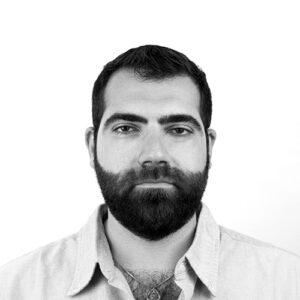
Supervisors
Prof. Ezri Terezi , Prof. Yasha Grobman
Bio
Alexander is a researcher, designer, maker and entrepreneur from Israel, he focusing on developing products for people with disabilities.
Geht is an Industrial Design Master student at Technion-Haifa, B.Des cum laude from Bezalel Academy of art and design in Jerusalem, and Electronic Practical Engineer. He focuses on research, innovation, and praxis of digital manufacturing in the aim to create customizable mass products for people with disabilities.
Alexander focuses on research, innovation, and praxis of digital manufacturing, including the learning and developing manufacturing methods, Fitting the product to the technology and vice versa, optimizing product in production processes. Furthermore, implementing insights into developing new technologies.
Research Paper in CAADRIA 2020 Conference
Digital Fabrication and Construction Panel
Abstract: Assistive Technologies are specialized products aiming to partly compensate for the loss of autonomy experienced by disabled people. Earlier studies suggested that proper seated position is the main goal to normalize the muscular tone, improving the optimal function. Additionally, proposed that adaptive equipment which is provided to CP children should be customized individually according to the child’s functional and contextual needs.
Mass-production assistive-technologies, usually designed, general and adjustable, to fit the large market as possible. As a result, off-the-shelf products are too general and did not fit the individual need. Custom-made products fit precisely to the need of the individual, by being design accurately for the body measures and personal needs. There is a fundamental need for custom products, whether, for luxury fields such as sports, military, or space, where optimal performance is essential. But moreover for disabilities field, where custom solutions are critical to assist in activities of daily living (ADL) and rehabilitation. However, custom made products are expansive and not achievable in most cases. At the same time, craftsmen who make the custom solutions, are disappearing, and with them, disappears the professional knowledge.
We are developing and designing parametric anatomic seating system, based on clinical and craftsman praxis, providing a fully customizable product, adapted for digital-manufacturing tools (laser cutting, CNC milling, 3D printing). In this way, we can produce every product unique for every individual function and need. Additionally, we preserve craftsman knowledge, serving people with disabilities needs. Our goal is to develop products, that enables the clinical staff as a physiotherapist, occupational therapist, etc., to create anatomic solutions at the push of a button — reducing the time between the measuring and the final product.
The lecture focuses on the possibilities of digital-manufacturing technology at assistive-technologies field, looking into the gaps and the challenges, also talking about the transaction between rapid prototyping to the real product, using large-scale additive manufacturing (LSAM) technology.
Horizontal Forming In Additive Manufacturing:
Design And Architecture Perspective
Alexander Geht, Michael Weizmann,
Yasha Jacob Grobman, Ezri Tarazi
Abstract: Extrusion based three-dimensional additive manufacturing technology forms objects by driving the material through a nozzle depositing a linear structure through vector-building blocks called roads. In a common 3-axis system, the roads are stacked layer upon layer for forming the final object. However, forming overhanging geometry in this way requires additional support structures increasing material usage and effective printing time. The paper presents a novel Horizontal forming (HF) approach and method for forming overhanging geometry, HF is a new extrusion-based AM approach that allows rapid and stable forming of horizontal structures without additional support in 3-axis systems. This approach can provide new design and manufacturing possibilities for extrusion AM, with emphasis on medium and large-scale AM. HF can affect the outcome’s aesthetic and mechanical properties. Moreover, it can significantly accelerate the production process and reduce material waste. The present paper maps the influence of various parameters employed in the HF method, providing a deeper understanding of the printing process. Additionally, it explores and demonstrates the potential functional and aesthetic characteristics that can be achieved with HF for industrial design and architectural products.
DESIGN TECH 2019
International Conference
Anatomic Mass Customization and Assistive Technology
The influence of Modulated Extrusion on design aesthetic and mechanical properties in 3D printing
Extrusion 3d printing processes are typically based on a horizontal discretization of solid geometry and layered deposition of materials. The speed and the rate of the deposition are constant and determined by the material stability criteria, limiting technology possibilities. Manipulating printing speed and amount of extruded material, expand design and fabrication possibilities. This method is known as Modulated Extrusion (ME).
This research explores the benefits of Modulated Extrusion method in big area additive manufacturing 3d printers, focusing on architecture and product design fields. Aim of this work is to develop new aesthetics language and mechanical properties of the printed products, expanding the range of possible outcomes, using the same 3D printing hardware. Outcomes of this research can dramatically affect on the extrusion printing field including bio-printing, product design, and architecture.
Keywords
Expression 3D Printing, Design, Digital Fabrication, Experimental 3D Printing, BAAM
Interest
Design, 3D Printing
Email
geht@campus.technion.ac.il
alexgeht@gmail.com
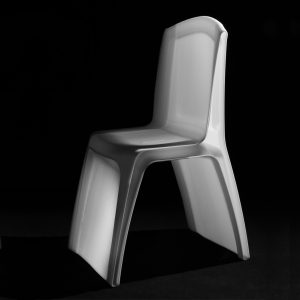
Submission
Submission of Papers:
Reviewing process: peer-reviewed
Chair: Prof. Ezri Tarazi
Program Committee: Prof. Barry Katz, Prof. Gabi Goldschmidt, Haim Parnas, Dr. David Behar, and Yoav Shterman.
Organization committee: Rachel-Getz Solomon, Noam Atias, Lior Arbel, Marnina Herrmann Elozory, Ronen Eidelman, Alexander Geht, and Ofer Berman.
Abstract Submission deadline: Deadline is over
Final Abstract submission: May 1, 2019
Abstract: Max 300-500 words
Full Paper submission: May 15, 2019
No. of pages: Max 4500 words + Max 2 pages for references
Paper and Abstract conference proceeding template will be sent with the acceptance letter.
Email: designtech@technion.ac.il
Keynote Speakers
The five main themes of the conference are:
-
- Design as a Hacker
While the prevalence of small, agile start-ups is growing, it often seems as though the world is held hostage by certain monolithic industries and big technology giants. New feudalism is emerging based on the acceptance of people to rely on the giants’ services. Design poses big questions that force those in charge to probe the new systems and hack them by building independent access routes into technology. New possibilities such as new digital manufacturing tools and blockchain concepts enable Design to bypass the giants and support independence from the main dominant systems and industries.
- Design as a Protector
The accelerating demand for greater security with the technological ability to monitor and collect data on every aspect of one’s life raises moral, social and cultural issues. At the same time, it also creates new opportunities for knowledge, ideas, and tools. Design can play a huge role in this emerging field both for good and for bad. Design can and does create tools that may benefit society by providing safety and comfort, and it helps protect values such as privacy, social awareness, and self-preservation.
- Design as a Healer
While designers and architects have long been an important part of shaping hospitals and medical devices, their roles in these fields have expanded to account for people’s psychological and physical comfort. Additionally, the more we understand the impact of our surroundings on our well-being, the more the designers’ role expands, and the opportunities they have to help build a world that places people’s wellness first grow. Design is a healer of the flora and fauna, putting nature in the center and regulating the human impact on it.
- Design as a Visualizer
Recently developed tools of design such as parametric design and digital sculpture help designers to visualize complex realities and apply those to objects in the real world. New visions of aesthetics create new objects that combine shapes and structures which have never been conceived before with classic tools of design. Generative design and autonomous designers will expand our vision into the future of almost everything.
- Design as a Leader
The field of design finds itself in the service of new territories that were never previously open to the discipline. The role of Design with a capital D, and ‘Design-Thinking’ as its ambassador, gives design the opportunity to be an integrator, forecaster, motivator, and collaborator, and act as a leader. These new capacities of Design serve to connect it to Science, Sociology, Psychology, Management, and Education.
Design-Tech 2019
supported by Firefly Scientists Foundation
International Conference on Design and Technology
June 18-19, 2019
Technion, Israel
Abstract Submission Deadline: deadline is over
The Design-Tech 2019 conference is a new and unique platform for researchers and practitioners in the field of design initiated to showcase their work and research. Being held for the first time at the Technion, Israel Institute of Technology, the conference will enable attendees to visit one of the most vibrant start-up eco-systems in the world.
While design has always been an integral part of the technological development process, in recent years it has been gaining a more significant role. Today, a technological process that is not based on design fundamentals is almost unheard of.
The design aspects of a technological R&D process raise unique questions and concerns which are critical to the success and viability of the technology itself. Design is no longer just a “nice to have,” beauty and taste issue. Rather, it is a strategic resource for successful technology companies; it is now seen as one of the key elements required for differentiation and for technology expansion and adoption. Design enhances technology and assists in making it accessible.
Yet, since design has become a primary lens through which we observe and experience our surroundings, it has also become responsible for the negative outcomes of technology. The Design-Tech conference wishes to create a central platform for discussing such topics under the title of the role of design and technology in multi-facet crises.
Design-Tech 2019 invites designers, researchers, educators, and students to be part of the conference by actively participating in the various conference tracks. Design-Tech welcomes the submission of both academic research papers and practice-based case studies. Design-Tech 2019 is an international conference and all submissions will be reviewed by an international panel of experts.
Conference Tracks:
- Design as a Hacker
- Design as a Protector
- Design as a Healer
- Design as a Visualizer
- Design as a Leader
Conference Tracks >>
Conference Speakers >>
Chair: Prof. Ezri Tarazi
Program Committee: Prof. Barry Katz, Prof. Gabi Goldschmidt, Haim Parnas, Dr. David Behar and Yoav Shterman.
Organization committee: Rachel-Getz Solomon, Noam Atias, Lior Arbel, Marnina Herrmann Elozory, Ronen Eidelman, Alexander Geht and Ofer Berman.
Email: designtech@technion.ac.il
UX/UI Design
Lecturer: Hanan Lehr
Experiencing and using digital products (mobile apps, websites and desktop software) makes a significant part of our lives today.
The User Experience Designer should translate complex requirements from various fields (business, marketing, technology, psychology) to a convenient, usable and delightful product while adapting to the needs of the user.
This course introduces practical design methods and includes a broad overview of the subject and up-to-date use cases, accompanied by studio work and a semester-long project.
Main subjects include: user centered design processes, user research methods, design techniques (sketching, prototyping and developer handoff), cognitive science related principles and business aspects.
One of the prototypes that was made in this course:
https://goo.gl/an9ehJ
Digital Design and Craft
Lecturer: Yoav Shterman
We are at the dawn of a digital industrial revolution. Many products such as shoes,
eyeglasses, headsets, medical devices and parts for the aerospace industry are now being digitally manufactured by 3D printers. As the technology progresses, more and more products that are now being mass-produced will be produced by 3D printers and other digital tools. These products will be free from conventional manufacturing constraints, be manufactured on demand and be customized to users needs.
Digital fabrication technologies challenge the traditional role of industrial designers. In contrast to the current situation in which one version of the product is designed and mass produced, digital means will enable parametric designs that represent many versions of a product. Each version will be customized to the user’s body data, environmental conditions and aesthetic preferences.
The Digital Design and Craft course will introduce students to the concepts of coding and parametric design in Processing and Rhino + Grasshopper environments with hands-on workshops and exercises. We will build an algorithmic tool to explore a design space and use 3D printers or other digital fabrication tools to produce a physical version of a design. In addition, we will review current digital fabrication technologies and recent computation design and computational fabrication projects from the academia and the industry.
Industrial Design in the Era of the Digital Industrial Revolution
Lecturer: Yoav Shterman
In the era of the digital industrial revolution, designers will shift from designing one solution for a product, that is mass produced, to designing parametric design tools that define a range of solutions- a solution space. Those tools will be used by professional and consumers to customize their own version of the product, that will be digitally fabricated. This will require new skillset form designers: algorithmic thinking, programming, UX design, and understanding digital fabrication capabilities and constraints.
The class aims to develop these skills utilizing Rhino-Grasshopper environment. Students will be exposed to advanced workflows in Rhino-Grasshopper to gain an understanding of data types, data structures, meshes, data-driven design, surfaces and more. In addition, we will review and discuss examples of currently available online paramedic design tools, start-up and non-profits that are already working in this fields. Ultimately, as a final project, each student will develop his own design tool, and digitally fabricate one version of his/her design.
Design Research
Lecturer: Nina Farkache
Design Research is one of the most significant research methodologies carried out during the design process. Its goal is to support and inspire the design of products/services/processes, and to guide the design strategy of an organization. Design research is human-centered. Its built on the premise of understanding the people for whom we are designing.
The main phase of the Design Research process is a unique qualitative user research that includes a variety of methods and techniques from the design practice and from different fields such as anthropology and sociology. These methods help reach a deep understanding of users – their behavior, what drives them, hidden needs, perceptions and emotions. Research insights are then translated into innovative development and design opportunities that address the deep needs of users and lead to an optimal user experience.
Design Research plays an important role in technology integrated design processes since it shifts the focus from the technology itself (that often becomes the main focus) to the users and their needs. It makes sure that designers and developers use technology in ways that help people and improve their user experience. In this course we “learn by doing”. It combines practical work in teams – where students practice various research methods hands-on – with frontal lectures. After completing this course, students are able to lead and conduct design research.
“The African cradle”: sustainable design and creations in Africa
Lecture: Dr. David Goss
During the last few years the discourse on sustainable design has become center stage, following this there have also been major changes in the modes of production, consumption, and discussion concerning African creations.
In this course we will discuss, with examples of African design and creations, how sustainability and ecological thinking, map out the faults of the previous modes and enable higher levels of eco-social awareness. Promote advances towards fair-trade; “Cradle to cradle” thinking; and an improvement of local daily life, etc.
An emphasis on the alternatives to industrialized design and production that harms the environment enables a rethinking of contemporary African creations (materials, production modes, products, packaging, and more…).
Design in the meeting points of Human-Animal-Machine
Lecturer: Dr. Daniel Metcalfe
The course Design in the meeting points of Human-Animal-Machine focuses on the relationship between humans, animals and technology: how technology mediates, translates and connects humans and animals, how it mimics animal behaviour, how it serves animals and how it uses them.
During the course we will investigate these questions by reviewing interesting case studies from around the world, we will exercise our ability to view the world from an animal perspective and develop our own design project responding to them.
Prof. Barry Katz

Prof. Barry Katz, Professor, Industrial and Interaction Design, California College of the Arts, Consulting Professor, Design Group, Stanford University
Prof. Barry Katz (Ph.D.)is Professor of Industrial and Interaction Design at the California College of the Arts in San Francisco, and Consulting Professor in the Design Group, Department of Mechanical Engineering, at Stanford. He is the first IDEO Fellow, and today consults on a number of IDEO projects. He is the author of six books, including (with Tim Brown) Change By Design, and most recently, Make it New: The History of Silicon Valley Design (MIT Press, 2015) . As a design historian, “he believes that there is no project—however technical or futuristic—that cannot be enriched by a historical and cultural perspective” (From IDEO website).
LiveTile Gallery
Lab Projects
temp2
[pb_slideshow group=”0″]
Events
[featuredposts]
הגשות סטודיו 29.07
29.07 משעה 9:30 עד 16:00
ההגשות יתקיימו בזום

סדנת DesignThinking
סדנת DesignThinking |
שבועיים בתאריכים 21-7 ביולי, 4 מפגשים |
הרשמה עד ה-3 ביולי.
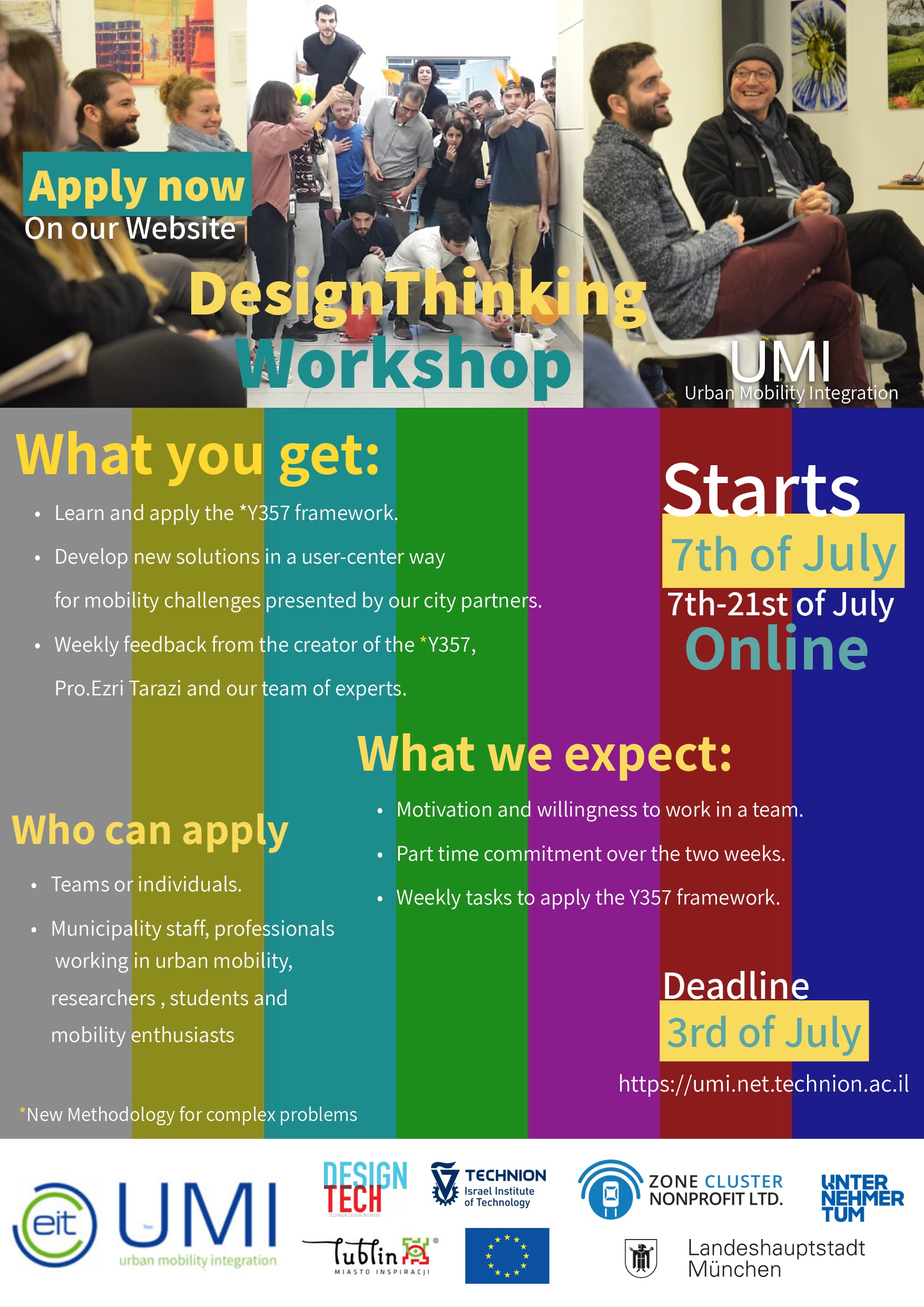
מפגש מתעניינים לתואר שני – 8.6.2020
הצטרפו לזום למפגש מתעניינים בתואר מתקדם בעיצוב תעשייתי
המפגש יתקיים ביום ב’ – 8.6.2020
12:00 // מפגש מרכזי עם דיקן הפקולטה וראשי מסלולים
https://technion.zoom.us/j/99446927186
13:00 // מפגש אינטימי לשאלות פרטניות בלימודי עיצוב תעשייתי
במפגש זה יופיע ראש המסלול וניתן יהיה לקבל הסבר מפורטים ולשאול שאלות
https://technion.zoom.us/j/96593108020
13:30 // מפגש מתעניינים ללימודי תואר שלישי
https://technion.zoom.us/j/97233799294
לאיוונט בפייסבוק:
https://www.facebook.com/events/254925169274449/

Blog
מציירים חלום
פיתוח של סטודנטיות מהמסלול לעיצוב תעשייתי בטכניון מאפשר לשני, ילדה בת שש שנולדה עם שיתוק מוחין, לצייר ולאכול בכוחות עצמה לראשונה בחייה.
דנה גור-גלברד, הדס ויזמן, מרינה גבינסקי ומור היינריך – הכירו במסלול לתואר שני בעיצוב תעשייתי (M.I.D) בטכניון. את המסלול מוביל פרופ’ עזרי טרזי מהפקולטה לארכיטקטורה ובינוי ערים.
הפיתוח האמור – Drawing Dreams – הוא פרי שיתוף פעולה בין אורית, אימה של שני, וארבעת הסטודנטיות. המתקן, שפותח יחד עם אימה של שני, זכה בתחרות הפיתוחים של עמותת TOM ,המקדמת פיתוחים טכנולוגיים המשפרים את חייהם של אנשים עם מוגבלויות. את הפיתוח המקורי הציגו הסטודנטיות בתערוכת אקספו 2020 שהתקיימה בדובאי ב17 לנובמבר.
לקריאת הכתבה המלאה באתר הטכניון : לחצו כאן

בתמונה : שני ופיתוח Drawing Dreams

בתמונה מימין לשמאל: מרינה גבינסקי, מור היינריך, אורית זיגמן, שני זיגמן, דנה גור-גלברד והדס ויזמן
התשוקה לאופנה, גרסת הפודקאסט
רעות תורג׳מן ורחל גץ סלומון בוחרות בכל פרק בפודקאסט שלהן נושא אחר מעולם על אופנה ו״מתלבשות על זה״
לכתבה המלאה לחץ כאן
יצירת שוניות מלאכותיות בים האדום מאריחי טרה-קוטה המודפסים בתלת מימד
28.4.21
מה כבר אפשר לעשות לטובת שוניות אלמוגים שמתות בגלל התחממות כדור הארץ, החמצת אוקיינוסים, הלבנת אלמוגים, זיהום ודייג יתר? אם אתה פרופסור עזרי טרזי, אתה משתמש בטכנולוגיה חדשה כדי ליצור שוניות מלאכותיות, אשר בתקווה יוכלו למשוך דגים ולאכלס מחדש שוניות באזורים שהיו עקרים בעבר. איפה התפנית? כיו”ר מעבדת העיצוב דיזיין-טק ותכנית העיצוב התעשייתי בטכניון בחיפה, ישראל, הוא משתמש בהדפסת תלת מימד לייצור אריחי טרה-קוטה במקום להשתמש בחומרים אחרים במכון הבינאוניברסיטאי למדעי הים (IUI) על גדות מפרץ אילת.
לכתבה המלאה (באנגלית) לחצו כאן
Lab Services
Coming Soon…
3dHabitat Project
Design meets Technology
Lecturer: Haim Parnas
Design meets Technology is a studio course that aims at leveraging the Technion rich Tech research labs and faculty.
Home Old
[pb_slideshow group=”2″]
Events
הגשות סטודיו 29.07
29.07 משעה 9:30 עד 16:00
ההגשות יתקיימו בזום

סדנת DesignThinking
סדנת DesignThinking |
שבועיים בתאריכים 21-7 ביולי, 4 מפגשים |
הרשמה עד ה-3 ביולי.

מפגש מתעניינים לתואר שני – 8.6.2020
הצטרפו לזום למפגש מתעניינים בתואר מתקדם בעיצוב תעשייתי
המפגש יתקיים ביום ב’ – 8.6.2020
12:00 // מפגש מרכזי עם דיקן הפקולטה וראשי מסלולים
https://technion.zoom.us/j/99446927186
13:00 // מפגש אינטימי לשאלות פרטניות בלימודי עיצוב תעשייתי
במפגש זה יופיע ראש המסלול וניתן יהיה לקבל הסבר מפורטים ולשאול שאלות
https://technion.zoom.us/j/96593108020
13:30 // מפגש מתעניינים ללימודי תואר שלישי
https://technion.zoom.us/j/97233799294
לאיוונט בפייסבוק:
https://www.facebook.com/events/254925169274449/

More events >>>
Design-Tech Channel
Exhibitions
רש רש רש – רעשנים עכשוויים
פרופ׳ עזרי טרזי, ועוזר העיצוב (מאסטרנט יובל גור) מציגים רעשן גנרטיבי בתערוכה ׳רש רש רש׳ – רעשנים עכשווים של אסכולת בצלאל | אוצרים: דר׳ עידו נוי, דר׳ שירת מרים שמיר
פתיחה: יום ראשון יב׳ באדר תש״פ, 8 במרץ 2020 בשעה 18:00 מרכז למורשת היהדות ע״ש צ׳ימבליסטה, המוזיאון ליהדות ע״ש אנריקו שטרנגר בשיתוף הביאנלה של ירושלים
נעילה: 5 באפריל 2020

State of Extremes
תערוכה קבוצתית בינלאומית החוגגת עשור למוזיאון העיצוב בחולון. מיצג אלמוגי החימר המודפסים נוצר על ידי עפר ברמן ופרופ’ עזרי טרזי, בשיתוף פעולה עם דנה שביב
דצמבר 2019 – מאי 2020
מוזיאון העיצוב, חולון
פתיחה: 11.12.2019
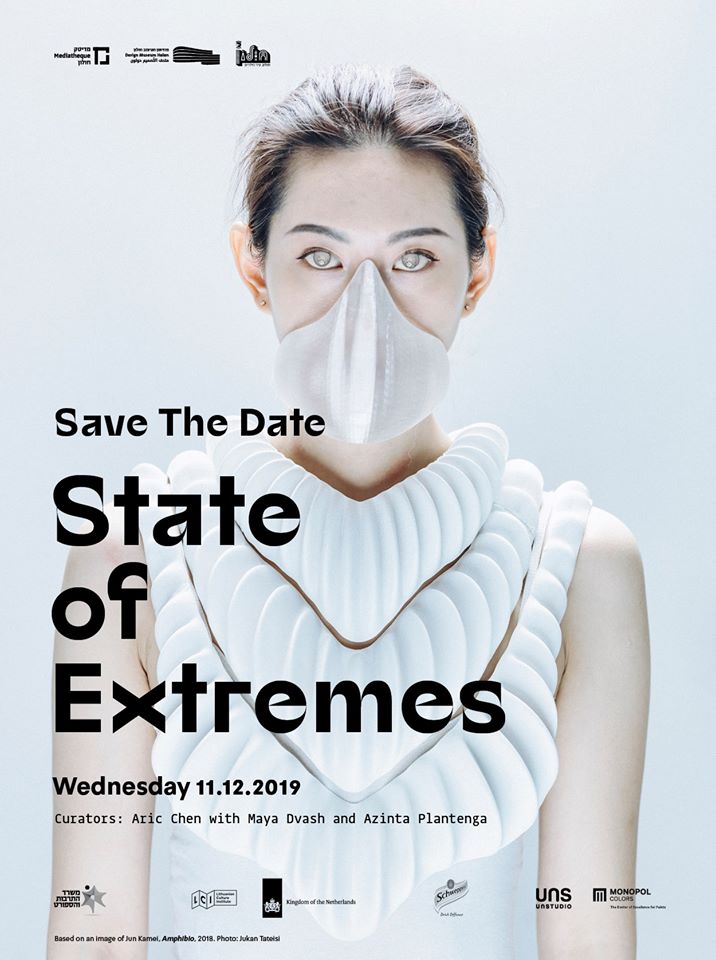
אקסטרים – עיצוב בעידן ההקצנה
לחשוף, לבקר, להתנגד, למתן, להחריף.
עד כמה יכול המצב להקצין?
“אקסטרים – עיצוב בעידן ההקצנה” – כנס העיצוב של מוזיאון העיצוב חולון.
עזרי טרזי * רון כחלילי * איתי הרמן “הצ’ייסר” * מירב פרץ * ועוד.
בואו לשמוע מפי מיטב המעצבים ואוצרי התערוכה החדשה על המנגנונים המניעים את תהליכי ההקצנה בעולם ומהו תפקידם של המעצבים כחלק ממציאות זו.
חמישי | 12.12 | 9:00-13:30 | כרטיסים >>

More exhibitions >>>
[pb_slideshow group=”0″]
Events
הגשות סטודיו 29.07
הגשות סטודיו תואר שני בעיצוב תעשייתי 29.07 משעה 9:30 עד 16:00 ההגשות יתקיימו בזום
סדנת DesignThinking
סדנת DesignThinking | שבועיים בתאריכים 21-7 ביולי, 4 מפגשים | הרשמה עד ה-3 ביולי.
מפגש מתעניינים לתואר שני – 8.6.2020
הצטרפו לזום למפגש מתעניינים בתואר מתקדם בעיצוב תעשייתי המפגש יתקיים ביום ב’ – 8.6.2020 12:00 // מפגש מרכזי עם דיקן הפקולטה וראשי מסלולים https://technion.zoom.us/j/99446927186 13:00 // מפגש אינטימי לשאלות פרטניות בלימודי עיצוב תעשייתי במפגש זה יופיע ראש המסלול וניתן יהיה לקבל הסבר מפורטים ולשאול שאלות https://technion.zoom.us/j/96593108020 13:30 // מפגש מתעניינים ללימודי תואר שלישי https://technion.zoom.us/j/97233799294 לאיוונט…
Blog
מציירים חלום
פיתוח של סטודנטיות מהמסלול לעיצוב תעשייתי בטכניון מאפשר לשני, ילדה בת שש שנולדה עם שיתוק מוחין, לצייר ולאכול בכוחות עצמה לראשונה בחייה. דנה גור-גלברד, הדס ויזמן, מרינה גבינסקי ומור היינריך – הכירו במסלול לתואר שני בעיצוב תעשייתי (M.I.D) בטכניון. את המסלול מוביל פרופ’ עזרי טרזי מהפקולטה לארכיטקטורה ובינוי ערים. הפיתוח האמור – Drawing Dreams –…
התשוקה לאופנה, גרסת הפודקאסט
רעות תורג׳מן ורחל גץ סלומון בוחרות בכל פרק בפודקאסט שלהן נושא אחר מעולם על אופנה ו״מתלבשות על זה״ לכתבה המלאה לחץ כאן
יצירת שוניות מלאכותיות בים האדום מאריחי טרה-קוטה המודפסים בתלת מימד
28.4.21 מה כבר אפשר לעשות לטובת שוניות אלמוגים שמתות בגלל התחממות כדור הארץ, החמצת אוקיינוסים, הלבנת אלמוגים, זיהום ודייג יתר? אם אתה פרופסור עזרי טרזי, אתה משתמש בטכנולוגיה חדשה כדי ליצור שוניות מלאכותיות, אשר בתקווה יוכלו למשוך דגים ולאכלס מחדש שוניות באזורים שהיו עקרים בעבר. איפה התפנית? כיו”ר מעבדת העיצוב דיזיין-טק ותכנית העיצוב התעשייתי…
Desing and Scenario
Lecture: Haim Parnas
Design Thinking and Entrepreneurship
Lecturers: Prof. Ezri Tarazi and Dr. Dana Shefer
[pb_slideshow group=”1″]
The course focuses on one of the ‘hottest’ topics in the world of technology and innovation: the connection between entrepreneurship and design. ‘Design thinking’ is a methodology for product development that places users and the experience of the user at the center. The ‘design thinking’, which works in parallel with engineering methodological processes, focuses developers’ attention on processes such as empathy, observation, and creative processes like brainstorming and sketches taken from the conceptual world of the design studio. The proposed course is designed for engineering students, exposing them to theoretical foundations in ‘Design Thinking’ and entrepreneurship, assimilating the critical importance of ‘Design Thinking’ to the success of a product or service development process, and will gain hands-on experience through working on projects in multidisciplinary teams.
Design Now
Lecture: Prof. Ezri Tarazi
How to Design (almost) Anything
Lecturer: Dr. Daniel Metcalfe
The course how to design (almost) anything offers a gateway into the fascinating and diverse world of design and design thinking. In the course we will improve our ability to observe the world around us and identify design opportunities by focusing our attention, using creative and critical thought, empathy and optimism.
During the course we will learn how to take an opportunity through a structured design process to create a compelling and convincing design outcome. We will put this process to work in three mini design projects, each highlighting different aspects of the profession.
On-Line Design Skills
Design Sketch Skill
Design hand Sketch skill is an ultimate tool for a pro designer. In a hand sketch, you can create multiple design concepts in minutes. Going directly to a 3D CAID tool is a massive mistake. Creating a concept on a 3D CAID will take you hours if not days. That will focus your attention on the one concept took you so long to create, and will disable from your imagination the many other options not yet perceived.
Here are some Design Sketch videos we collected for you from YouTube:
MacelyumDesign Project
Hakathons
Mycelium BioDesign Project
herSkirt Project
101braclet Project
xHabitat Project
3dChair Project
marineRobot project
The marineRobot is a project led by Prof. Maoz Fine from the InterUniversity Institue of marine sciences.
liveTile Project
liveTile project
 The liveTile research project is a join project of Design-Tech Lab with the LMME lab lead by Prof. Oren Levy from Bar-Ilan University, Israel and Design-Tech lab.
The liveTile research project is a join project of Design-Tech Lab with the LMME lab lead by Prof. Oren Levy from Bar-Ilan University, Israel and Design-Tech lab.
From the LMME Lab:
Coral chronobiology
Coral reefs are the most diverse and important marine ecosystems on the planet and
have dominated tropical oceans over the past 250 million years. Scleractinian (reef-building) corals are among the most efficient biomineralizing organisms in nature. Thus, the importance of scleractinian corals to global ocean chemistry, nutrient cycles, and the continental shelf-environment in particular, cannot be underestimated. Paradoxically, although there are some indications for rhythmic behavior, very little is known about the circadian clocks that control the biology of these symbiotic organisms.
The aim of our research group is to understand the dependency between environmental cues (e.g. light and temperature) that underlie circadian rhythms in reef-building corals, in regulating physiology and behaviour. Different species of symbiotic corals serve as a model system to find evidence of a molecular mechanism controlling the rhythmic processes of metabolism, photosynthesis, calcification and yearly reproduction cycles.
We are identifying and characterizing homologs of the known circadian clock genes in several coral and sea anemone species; sequencing transcriptomes using RNAseq and examination of their temporal expression patterns. We are further investigating the melatoninergic system in corals to try and understand the principal biological significance of melatonin in different rhythmic processes of Anthozoans. As melatonin is a key neuro hormone involved in governing the temporal activity of many animals, its role in a basal metazoan is of particular evolutionary significance. In addition, we are working toward a characterization of the circadian clock control of the calcification process in corals. Finally, we are conducting transcriptomic profiling of coral spawning in the Red-Sea, Okinawa and the Great Barrier Reef, in an attempt to elucidate the relative role of the solar and lunar environmental cycles governing the exact time of gamete release.
LiveTile project is using new design tools of Computer Aided Indistrial Design (CAID) and digital Clay parametric morphings, together with the largest Clay 3D printer in Israel to produce tiles for a research conducted at IUI research labs. The research will compare between flat tiles to 3D printed tiles with curves and holes in them.
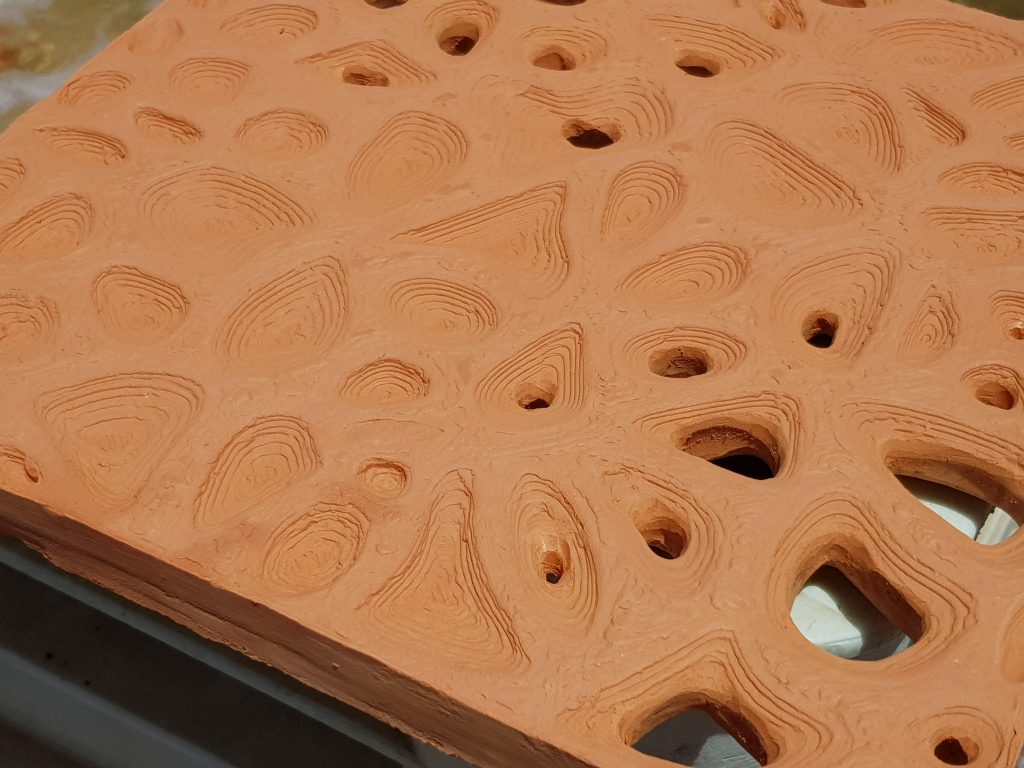
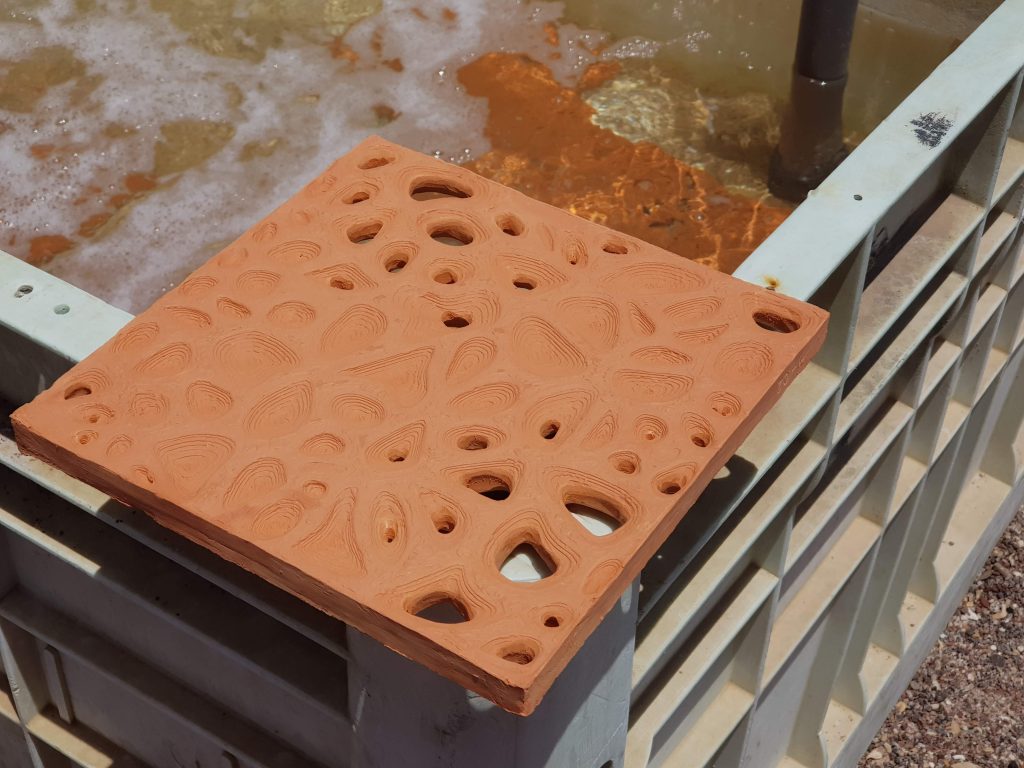
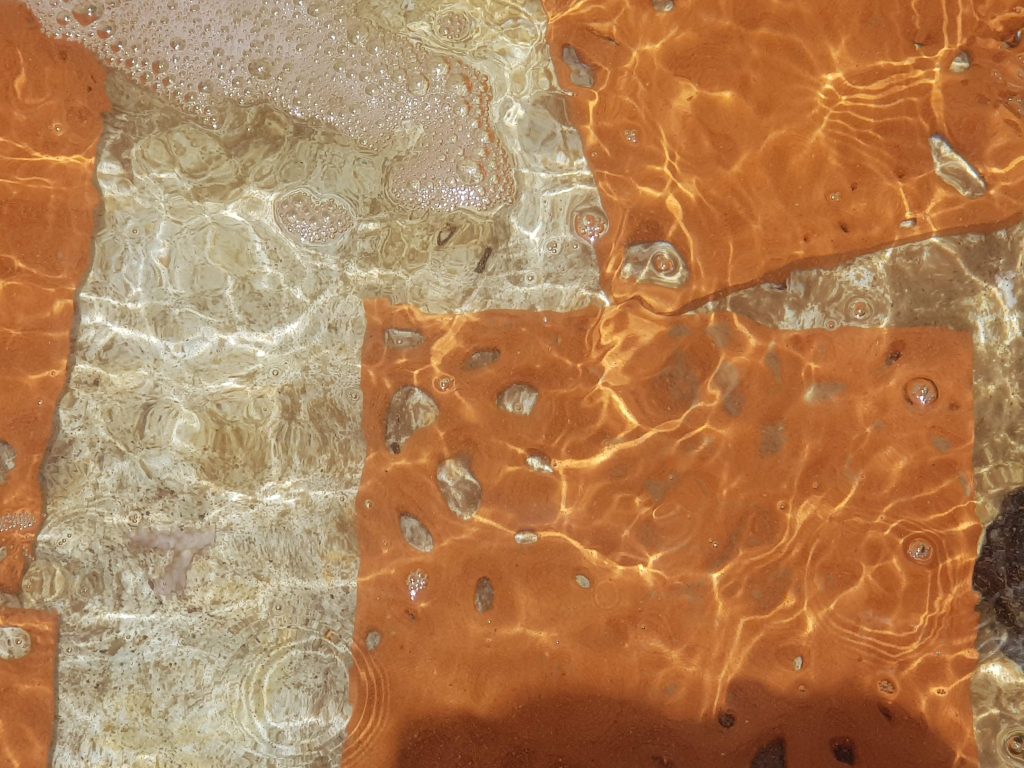

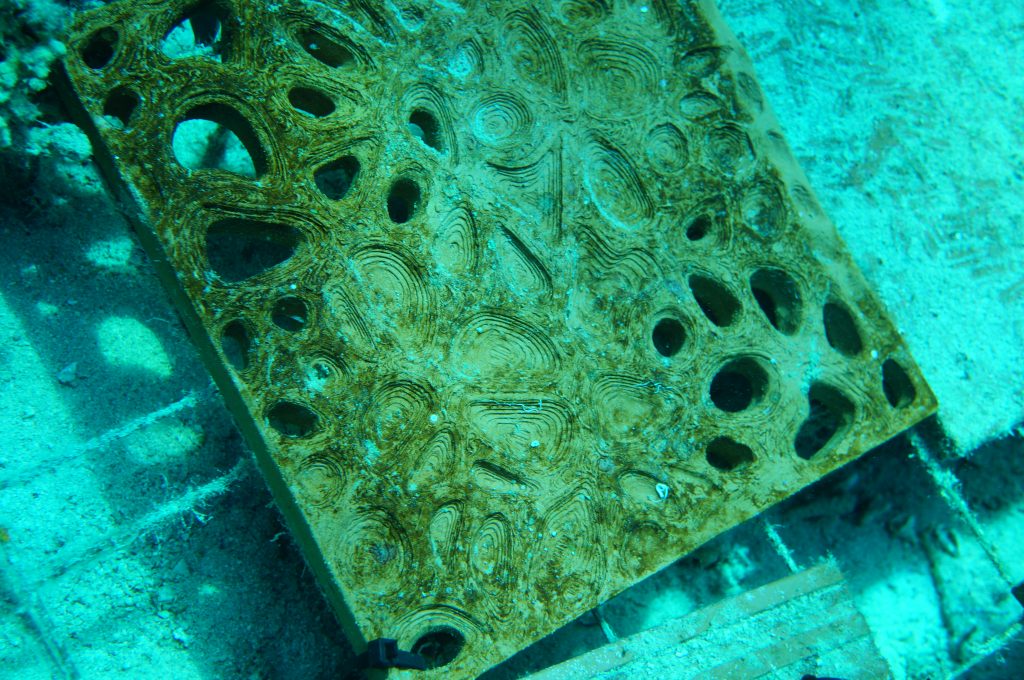

xCoral Project
xCoral Project
Reef Centered Design
Ezri Tarazi1, Haim Parnas1, Ofri Lotan1, Majeed Zoabi1, Asa Oren2, Noam Josef2, Nadav Shashar2
1: Technion, Israel Institute of Technology; Department of Architecture and Town Planning, Design-Tech Lab
2: Ben-Gurion University of the Negev; Department of Life Sciences
Coral reefs around the world are experiencing a continuous process of degradation (Pandolfi et al. 2003) which is a result of both anthropologic and natural causes (Terence P. Hughes 1994; Booth and Beretta 2002; Pandolfi et al. 2003; Adger et al. 2005). These causes include, among other factors, diseases, a rise in ocean water temperature, ocean acidification, tourism, and over fishing of reef fishes.
Coral reefs are complex ecosystems which are characterized by high biodiversity. A correlation exists between the complexity of a coral reef’s and the biodiversity surrounding it, this correlation can be partially explained due to the fact that diverse microhabitats attract different populations (Terence P. Hughes 1994; Pandolfi et al. 2003; Messmer et al. 2011). The fish community of a coral reef plays an important role in maintaining high coral abundance, as well as preventing phase shift from a coral environment to another- such as an algae one. This may occur when seaweed covers the corals due to the lack of herbivorous organisms (Terence P. Hughes 1994). studies have shown the contribution of fish abundance to the health of individual corals and to the coral reef community (Knowlton and Jackson 2008; Terry P. Hughes et al. 2010; Dixson and Hay 2012). Dixson and Hay (2012) showed that when a coral has been damaged by harmful seaweed that settles on it, the coral release chemical cues which signal the herbivorous fish that live in symbiosis with the coral to remove it.
Many factors are known to affect the recruitment of reef organisms and especially fish. One important factor is the structural complexity of a coral colony, which in turn provides shelter to residing fish. Two well-studied corals include Pocillopora and Acropora, which are branching corals that provide shelter and sites for foraging and breeding (Chase et al. 2014; Mercado-Molina, Ruiz-Diaz, and Sabat 2016; Limviriyakul et al. 2016). It has been shown that a coral structural complexity correlates with the reef biodiversity. Additionally, it is suggested that different populations interact differently with various morphologic structures of corals (Kerry and Bellwood 2012; Graham and Nash 2013; Untersteggaber, Mitteroecker, and Herler 2014). Morphologic structures can be divided into many categories in order to be able to characterize them. Such characteristics can include, among others, ecological volume, number of branches and lateral dimension etc., these morphological characteristics may have different effect on the different coral symbionts (i.e. fish, worms, etc.)(Abraham 2001; Shaish, Abelson, and Rinkevich 2006; Kerry and Bellwood 2012; Graham and Nash 2013). To date, we are yet to understand why specific populations will prefer to inhabit one morphologic structure over another (Untersteggaber, Mitteroecker, and Herler 2014; Wehrberger and Herler 2014; Mercado-Molina, Ruiz-Diaz, and Sabat 2016).
Quantification and assessment of a coral structural complexity is not a trivial task, and many approaches were applied in order to achieve that goal. Various methods were used by researchers, “chain of tape”, visual assessment approaches, as well as others. many experiments were conducted in an effort to understand the effect of that complexity on the reef ecosystem, by attempting to mimic the coral morphological characterizes (Graham and Nash 2013). In one such study which took place in 2012, Kerry and Bellwood compared the abundance, biomass and residence time of fish hiding in three different morphologic structures: tabular, massive and branching corals. Later they further examined the potential role of shade or concealment by using artificial structures mimicking tabular morphology. Other work conducted in 2014 by Untersteggaber, Mitteroecker and Herler compared the difference in the skeletal morphology between corals occupied with Gobiid fishes and unoccupied ones.
One approach to examining the interactions between coral structural complexity and biodiversity and reef community structure is by forming artificial models in which some structural aspects may be controlled and manipulated. One such technique is using design tools such as 3D manipulation in CAD and 3D printing technology.
As a research group that is composed of marine biologists and designers, we seek to find the next practices and tools to explore the ecological functionality of coral morphology. We believe that coral reef rehabilitation, management, and artificial reef construction require a better understanding of how the single coral colony morphology interacts with its inhabitants (Dixson and Hay 2012; Chase et al. 2014). In the current study, we aim to implement design tools such as 3D manipulation and 3D printing, using various printing materials, to examine this question. We have conducted initial design experiments in which natural coral colonies were scanned, 3D manipulated, and 3D printed.
After an initial approach, we have succeeded to high-quality design tools for such a task and have been producing printed corals from a bio-plastic material. We have installed and observed fish recruitment on a natural reef at the Red Sea and conducted choice experiments in the laboratory. Preliminary results suggest that Pseudanthias squamipinnis fish prefer some combinations of material and color over natural corals, while they rejected other combinations.
We expect that this approach will enable us to better understand the complex relations between coral architecture and fish recruitment, and lead towards creating a design guideline for reef resilience and restoration. Co-Designing with such complex nature and biodiversity enable us as designers to better understand our ethical role in ‘reef centered design’. We hope this research can inspire more designers to use their skill-set and a wide range of knowledge to take part and support to restore the collapsing ecologies of the coral reefs around the globe.
The goals of this study are (1) examining advanced design tools such as 3D scanning, 3D form manipulation and 3D printing technologies as a substance for creating temporary artificial corals. (2) to better understand the interactions between coral structure and the various fish species that recruit into and live within it. Successful implementation of this study can enhance our understanding of corals interactions with their surrounding environment, provide design tools for public displays and other large-scale aquariums that will reduce their dependence on live corals, and provide valuable design guidelines and tools when approaching the matter of active coral reef restoration.
Abraham, Edward R. 2001. “The Fractal Branching of an Arborescent Sponge.” Marine Biology 138: 503–10. doi:10.1007/s002270000479.
Adger, W. Neil, Terry P. Hughes, Carl Folke, Stephen R. Carpenter, and Johan Rockstrom. 2005. “Social-Ecological Resilience to Coastal Disasters” 309: 57–58.
Booth, David J., and Giglia A. Beretta. 2002. “Changes in a Fish Assemblage after a Coral Bleaching Event.” Marine Ecology Progress Series 245: 205–12. doi:10.3354/meps245205.
Chase, T. J., M. S. Pratchett, S. P. W. Walker, and M. O. Hoogenboom. 2014. “Small-Scale Environmental Variation Influences Whether Coral-Dwelling Fish Promote or Impede Coral Growth.” Oecologia 176 (4): 1009–22. doi:10.1007/s00442-014-3065-9.
Dixson, Danielle L., and Mark E. Hay. 2012. “Corals Chemically Cue Mutualistic Fishes to Remove Competing Seaweeds.” Science 338 (6108): 804–7.
Graham, N. A. J., and K. L. Nash. 2013. “The Importance of Structural Complexity in Coral Reef Ecosystems.” Coral Reefs 32 (2): 315–26. doi:10.1007/s00338-012-0984-y.
Hughes, Terence P. 1994. “Catastrophes, Phase Shifts, and Large-Scale Degradation of a Caribbean Coral Reef.” Science. doi:10.1126/science.265.5178.1547.
Hughes, Terry P., Nicholas A.J. Graham, Jeremy B.C. Jackson, Peter J. Mumby, and Robert S. Steneck. 2010. “Rising to the Challenge of Sustaining Coral Reef Resilience.” Trends in Ecology and Evolution 25 (11). Elsevier Ltd: 633–42. doi:10.1016/j.tree.2010.07.011.
Kerry, J. T., and D. R. Bellwood. 2012. “The Effect of Coral Morphology on Shelter Selection by Coral Reef Fishes.” Coral Reefs 31 (2): 415–24. doi:10.1007/s00338-011-0859-7.
Knowlton, Nancy, and Jeremy B.C. Jackson. 2008. “Shifting Baselines, Local Impacts, and Global Change on Coral Reefs.” PLoS Biology 6 (2): e54. doi:10.1371/journal.pbio.0060054.
Limviriyakul, Parinya, Li Chun Tseng, Tung Wei Shih, and Jiang Shiou Hwang. 2016. “Host Selection and Preferences of Coral Symbiotic Crab Tetralia Rubridactyla.” Journal of Experimental Marine Biology and Ecology 485. Elsevier B.V.: 24–34. doi:10.1016/j.jembe.2016.08.001.
Mercado-Molina, Alex E., Claudia Patricia Ruiz-Diaz, and Alberto M. Sabat. 2016. “Branching Dynamics of Transplanted Colonies of the Threatened Coral Acropora Cervicornis: Morphogenesis, Complexity, and Modeling.” Journal of Experimental Marine Biology and Ecology 482. Elsevier B.V.: 134–41. doi:10.1016/j.jembe.2016.05.004.
Messmer, Vanessa, Geoffrey P. Jones, Philip L. Munday, Sally J. Holbrook, Russell J. Schmitt, and Andrew J. Brooks. 2011. “Habitat Biodiversity as a Determinant of Fish Community Structure on Coral Reefs.” Ecology 92 (12): 2285–98. http://www.esajournals.org/doi/abs/10.1890/11-0037.1.
Pandolfi, John M, Roger H Bradbury, Enric Sala, Terence P Hughes, Karen a Bjorndal, Richard G Cooke, Deborah McArdle, et al. 2003. “Global Trajectories of the Long-Term Decline of Coral Reef Ecosystems.” Science (New York, N.Y.) 301 (5635): 955–58. doi:10.1126/science.1085706.
Shaish, Lee, Avigdor Abelson, and Baruch Rinkevich. 2006. “Branch to Colony Trajectory in a Modular Organism: Pattern Formation in the Indo-Pacific Coral Stylophora Pistillata.” Developmental Dynamics 235 (8): 2111–21. doi:10.1002/dvdy.20861.
Untersteggaber, Lucien, Philipp Mitteroecker, and Juergen Herler. 2014. “Coral Architecture Affects the Habitat Choice and Form of Associated Gobiid Fishes.” Marine Biology 161 (3): 521–30. doi:10.1007/s00227-013-2354-x.
Wehrberger, Florian, and Juergen Herler. 2014. “Microhabitat Characteristics Influence Shape and Size of Coral-Associated Fishes.” Marine Ecology Progress Series 500: 203–14. doi:10.3354/meps10689.
Design Quotes
“There are three responses to a piece of design – yes, no, and WOW!”
Milton Glaser, Graphic Designer
“The difference between a Designer and Developer, when it comes to design skills, is the difference between shooting a bullet and throwing it.”
Scott Hanselman, UX Designer
“The life of a designer is a life of fight. Fight against the ugliness. Just like a doctor fights against disease. For us, the visual disease is what we have around, and what we try to do is cure it somehow with design.”
Massimo Vignelli, Graphic Designer
Demo Day
Design-Tech Demo-Day
2nd of August
The latest batch of the Master program for Industrial Design, present for a special invited set of people
2nd of August, from 09:00 to 17:30 at the 100 design studio room, Amadu building, Faculty of Architecture and Town Planning.
apply for an Invite: designtech@technion.ac.il

The site is under construction, Sorry for the inconvenience.

Design Lab
Design-Tech Lab
Goals
History
Focus
Equipment
Projects
Workshops
Conferences
Open Lectures
Blog

Ezri Tarazi
Ezri Tarazi earned his BDes in Industrial Design at Bezalel Academy of Art and Design in Jerusalem in 1990. He worked in Bezalel’s R&D Department (1990-1996). Tarazi was Chair of the Industrial Design Department at Bezalel (1996-2004) and founded the Master’s Program in Industrial Design (M.Des). He co-founded the IDEO branch in Israel (1998-2002), and was a partner in several tech startups in the fields of solar energy, sustainable design, digital ink for billboards, and more. He founded d-Vision together with Keter Group (2005-2012). His work has been shown in important museums, galleries and design fairs around the world, such as the Museum of Modern Art (MoMA) and the Cooper Hewitt national design museum in New York, Art and Design center Kyoto, Japan, Trienalle, Milano, Italy and more. His work has also been shown in individual and in group exhibitions, and in curated design exhibitions in many museums and galleries around the world and in Israel.
He founded Tarazi Studio, which specializes in strategic design for companies, design thinking, and design products for industry, consulting governments and municipalities around the world with innovation through Design Thinking.
Tarazi has won many national and global prizes published two books on design and design thinking and published dozens of articles in books and catalogs on design. He was a member of the Council for Higher Education and chaired the Supreme Committee for the Humanities, Arts, Education, and Pedagogy (2006-2016).
Team
Technion Steering committee:

Prof. Avinoam Kolodny | The Faculty of Electrical Engineering, Technion
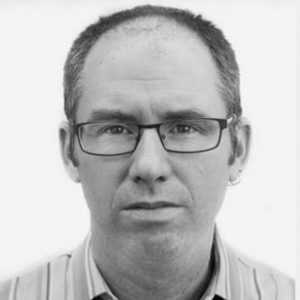
Prof. Oded Rabinovitz | The Faculty of Civil and Environmental Engineering (Dean), Technion

Prof. Avi Parush | The Faculty of Industrial Engineering & Management, Technion

Dr. Dana Shefer | Bronica Entrepreneurship Center (CEO), Technion
Competitions
Design-Tech Blog
Courses
Events test
הגשות סטודיו 29.07
הגשות סטודיו תואר שני בעיצוב תעשייתי 29.07 משעה 9:30 עד 16:00 ההגשות יתקיימו בזום
סדנת DesignThinking
סדנת DesignThinking | שבועיים בתאריכים 21-7 ביולי, 4 מפגשים | הרשמה עד ה-3 ביולי.
מפגש מתעניינים לתואר שני – 8.6.2020
הצטרפו לזום למפגש מתעניינים בתואר מתקדם בעיצוב תעשייתי המפגש יתקיים ביום ב’ – 8.6.2020 12:00 // מפגש מרכזי עם דיקן הפקולטה וראשי מסלולים https://technion.zoom.us/j/99446927186 13:00 // מפגש אינטימי לשאלות פרטניות בלימודי עיצוב תעשייתי במפגש זה יופיע ראש המסלול וניתן יהיה לקבל הסבר מפורטים ולשאול שאלות https://technion.zoom.us/j/96593108020 13:30 // מפגש מתעניינים ללימודי תואר שלישי https://technion.zoom.us/j/97233799294 לאיוונט…
א-נורמאלי החדש
אנחנו גאים להמשיך בשיתוף פעולה עם מוזיאון העיצוב בחולון! יום שלישי 12.5 בשעה 18:00 ישירות למחשב שלכם. _ איך ייראה עולם העיצוב ביום שאחרי? איזה תפקיד יהיה בו למעצבים? ואיך נסתגל לאותו “נורמלי חדש”? מוזיאון העיצוב חולון בשיתוף מעבדת דיזיין טק מזמינים אתכם לכנס “א-נורמלי החדש”- שיח עתידני במצבי אקסטרים. האוצרים והמעצבים המציגים בתערוכה “אקסטרים”…
עיצוב בימי קורונה: סימפוזיון
עיצוב בימי קורונה: סימפוזיון בנושא עיצוב וביטויים שלו סביב הקורונה. יוזמה של מעבדת דיזייןטק, המסלול לעיצוב תעשייתי בטכניון, בראשות פרופ’ עזרי טרזי ובהשתתפות שבעה מעצבים מקומיים. יום רביעי , 6 למאי, 17:00 -19:00 פתוח לכולם!
איך הפסקתי לדאוג ולמדתי לאהוב בלוטי ים \ ד”ר דניאל מטקלף
בהרצאה פתוחה זו דניאל יספר על פרויקט אחד מימי הדוקטורט ודרכו יגע בנושאים של עיצוב עבור בעלי חיים, שיתוף פעולה חוצה דיסציפלינות וההבטחות (ושברן) של הייצור הדיגיטלי דניאל הוא מעצב ומורה במסלול לעיצוב תעשייתי בטכניון הפועל בנקודות המפגש והאינטראקציה שבין בני אדם, חיות בר וטכנולוגיה. יום שני 20 בינואר 2020, 12:30 – הגלריה…
Design has become a strategic resource for successful technology companies and one of the most important features needed for the success of new high-tech startups. In 2016, more than a third of the startups with the most robust investment in the US had at least one designer as a co-founder. Design is now accepted as not just “nice to have”, but one of the key elements required for differentiation and business expansion. Design enhances technology and helps to make it accessible. In Israel, Design is traditionally affiliated with art or architecture schools and is hardly present in science, engineering and technology programs. Realizing the urgent need to incorporate design courses into its engineering curricula, the Technion Design-Tech Initiative:
- In the short-term – launching a cluster of undergraduate courses to expose students to important design concepts and methodologies.
- In the long-term – preparation of a strategic plan for the establishment of a Technion-wide Design Center.
The cluster of design courses will include undergraduate electives in design for students from all engineering faculties. Some of these classes will be held in a special studio space that will be suitably renovated and equipped to teach Design skills and Thinking workshops. This classroom will include digital sketch surfaces, Post-it boards, digital prototyping tools and a flexible furniture arrangement appropriate for team workshops. In addition, a few outstanding students to participate in professional development courses, exchange programs, competitions, exhibitions, and conferences, etc. that promote the subject matter of technology and design.
Most significantly, the Technion will leverage the experience of creating the cluster of design courses to investigate and develop a strategic plan for establishing a new Design-Tech Center as a central hub at the Technion.
The Technion Design Initiative is generously supported by
The Firefly Scientists’ Foundation
Faculty
Case Studies

Coming soon
Design-Tech Demo-Day
2nd of August
The latest batch of the Master program for Industrial Design, present for a special invited set of people
2nd of August, from 09:00 to 17:30 at the 100 design studio room, Amadu building, Faculty of Architecture and Town Planning.
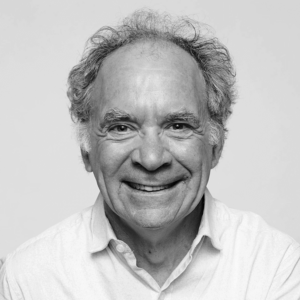
Guest Prof. Barry Katz, Stanford
apply for an Invite: designtech@technion.ac.il
Design Events
Quotes on Design
“There are three responses to a piece of design – yes, no, and WOW!”
Milton Glaser, Graphic Designer
“The difference between a Designer and Developer, when it comes to design skills, is the difference between shooting a bullet and throwing it.”
Scott Hanselman, UX Designer
“The life of a designer is a life of fight. Fight against the ugliness. Just like a doctor fights against disease. For us, the visual disease is what we have around, and what we try to do is cure it somehow with design.”
Massimo Vignelli, Graphic Designer
Design Blog


